Last updated on April 19, 2024
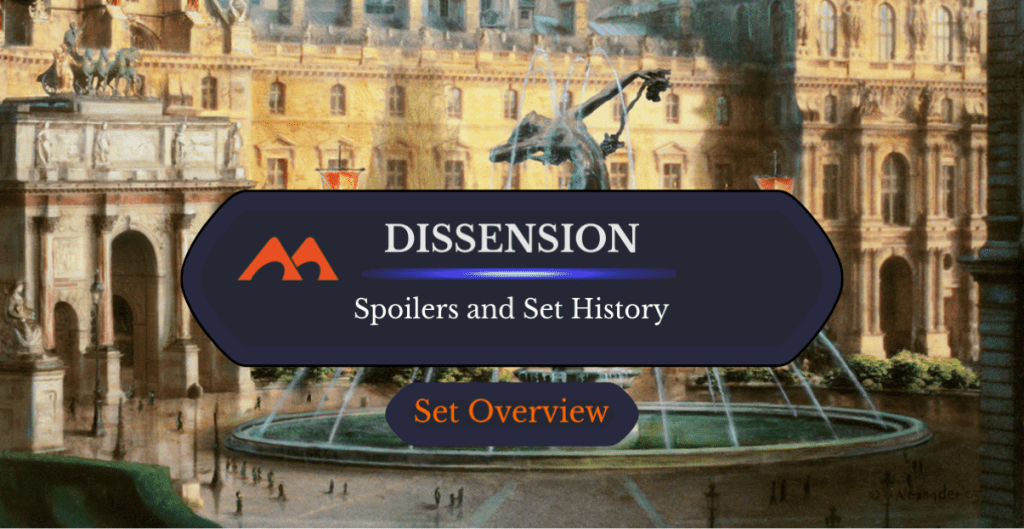
Hallowed Fountain | Illustration by Rob Alexander
Fascinating a megalopolis as Ravnica is, “charming” isn’t how I’d describe it. “Complex,” “convoluted,” or even “kafkian” feel more fitting – above all since Ravnica is partly inspired by Kafka's home city, Prague.
But Dissension is Magic's third foray into the City of Guilds, and as they say, the third time's the charm!
Let's start this charming tour across the MTG set that completes the introduction of Ravnica's 10 guilds, and find out more of what Magic's most kafkian metropolis has to offer.
Dissension Basic Information
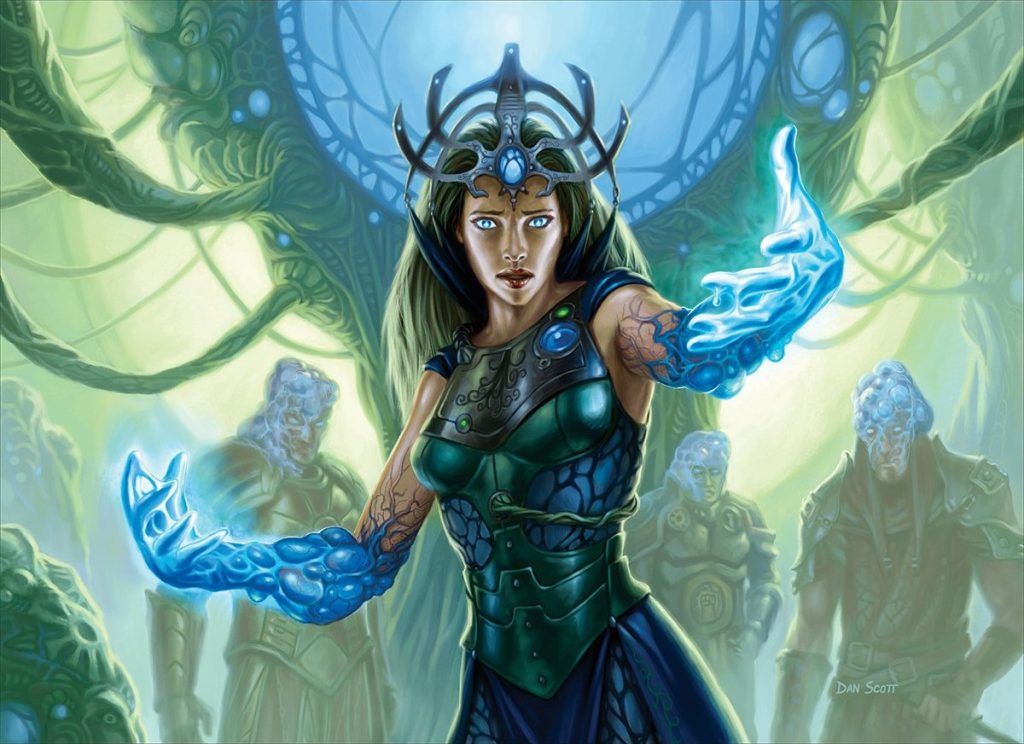
Cytoplast Manipulator | Illustration by Dan Scott
Dissension (DIS) is the third and last set from the original Ravnica block, which also included Ravnica: City of Guilds and Guildpact. The block introduced the ten Guilds of Ravnica to Magic's multiverse, with DIS presenting us the Azorius Senate (), the Cult of Rakdos (), and the Simic Combine ().
DIS is a small set (just 180 cards), as was the norm for the second and third of a block. It only has common, uncommon, and rare cards – the mythic rarity wasn't a thing back then and wouldn't debut until four years later in the Conflux expansion.
Dissension: Set Details
| Set Symbol |  |
| Set Code | DIS |
| Number of Cards | 180 |
| Rarities | 60 commons, 60 uncommons, 60 rares |
| Mechanics | Forecast, hellbent, graft, hybrid mana, split cards |
Dissension: Important Dates
| Event | Date |
|---|---|
| Set Release | May, 2006 |
| Available on Draftsim's Draft Simulator | No |
About the Set
The whole of the Ravnica block is focused on the ten dual-colored Guilds that steer Ravnica's destiny:
- Boros (), Dimir (), Golgari (), and Selesnya (), introduced in Ravnica: City of Guilds,
- Gruul (), Orzhov (), and the (factually!) coolest guild of them all, Izzet (), which you met in Guildpact,
- And Azorius, Rakdos, and Simic in Dissension.
Ravnica isn’t just “huge”: it's a city as big as the plane with the same name. Ten guilds govern Ravnica: Each guild has its own ideology and agenda, and every aspect of the metropolis, its society, and its culture is shaped by the guilds' constant (and usually underhanded) struggle for power.
What keeps the uneasy balance and peace is the Guildpact, an ancient magical treaty signed long ago by the guilds' founders (called “paruns”, as illustrated by Pillar of the Paruns). The Guildpact binds (in more ways than one…) the guilds into a tense, distrustful equilibrium that has nevertheless been maintained for nearly ten thousand years.
With the other seven guilds already presented in the previous two expansions, in Dissension we meet the lawful Azorius Senate, which seeks to keep law and order (although more often than not they’re a bunch of high-horsed bureaucrats that don’t allow change to happen); the chaotic Cult of Rakdos, who are only interested in having a good time (usually in violent, bloody ways, often at the expense of others); and the Simic Combine, which is Ravnica's version of a bleeding-edge biotech company with a knack for genetic tampering.
The Ravnica block was immensely influential in Magic's development, to the point that Ravnica is one of the planes that the design team has frequently revisited, with Murders at Karlov Manor being one of the only non-guild-focused returns.
In particular, the guilds' influence in MTG lingo has been huge: nowadays, we refer to a color pair by the name of its respective guild – a black-red deck is said to be a Rakdos deck even if it doesn't have a single card from an expansion tied to Ravnica.
Dissension Mechanics
The Ravnica block introduced a lot of guild-specific mechanics. In Dissension‘s case, those are forecast, hellbent, and graft.
The block also introduced one of the most influential mechanics in Magic's history (and Mark Rosewater's personal favorite): hybrid mana.
Dissension was the only set from this block to reuse a mechanic that had been very successful in Invasion, and would prove popular enough to return several times in later sets: split cards.
Forecast
As it fits the Azorius Senate, forecast is a mechanic with a lot of caveats.
To start, it's an activated ability that you can only activate from your hand – in this sense, it works similarly to cycling or channel. The difference is that, for forecast, you don't discard the card; you pay the mana cost and reveal the card in your hand to activate its ability.
Then you have forecast's timing, which is very restrictive: you can only activate it during your upkeep, and only once each turn.
There are nine cards in Dissension with Azorius's signature move, with Skyscribing being the most popular in Commander, and the mechanic was reused in just two cards in later sets.
Hellbent
Hellbent, Rakdos's signature trick in Dissension, is what’s known as an “ability word“: a mechanic that connects several cards, but that works differently in each case.
The connecting thread is that you get a bonus if you play your hellbent card while your hand is empty. The bonus varies from card to card: Demonfire can't be countered, Jagged Poppet forces your opponent to discard when Poppet deals combat damage to a player, and Infernal Tutor becomes Demonic Tutor (the very best tutor effect in all of Magic) if you have no cards in hand.
DIS brought us fourteen hellbent cards, and it showed up in a few later sets, including a couple of cards from Modern Horizons 1 and Modern Horizons 2.
Graft
As will come to no surprise if you play (or face) green-blue decks often, the Simic Combine's signature mechanic is about +1/+1 counters: when a creature with graft X like Plaxcaster Frogling enters the battlefield, it gets X counters. In the frogling‘s case, the value of X is 3, so it gets three counters.
That's not all, though: you can move one +1/+1 counter from the graft creature to another creature when the second creature ETBs.
There are a dozen cards with graft in Dissension, and just a single card with this mechanic outside the set.
Hybrid Mana
This is one of Ravnica's most influential mechanics, to the point that hybrid mana is the mechanic that MTG's Head Designer Mark Rosewater is the proudest of.
Hybrid mana is present in all sets of the Ravnica block. Unlike guild-specific mechanics, which were restricted to the set that focused on that guild (hellbent, forecast, and graft are only featured in Dissension, and are absent from City of Guilds and Guildpact), there are cycles of hybrid mana cards that extend through the whole block.
The best-known example are probably the guildmages. Each guild has these creatures, the guild-named ones can pay their casting cost in hybrid mana, and Dissension brought the remaining three: Azorius Guildmage, Rakdos Guildmage, and Simic Guildmage.
Hybrid mana is one of Ravnica‘s most successful mechanics; there are hundreds of cards of all types, from instants and sorceries to auras or planeswalkers, that use hybrid mana for their casting cost. Even more if you include those that use hybrid mana for their activated abilities.
Split Cards

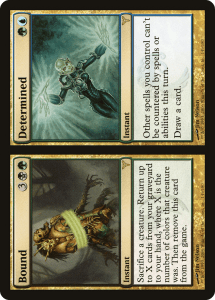
Split cards debuted with five cards in Invasion, and the mechanic reappeared on five cards in Apocalypse. Split cards were successful among players, and Dissension has the next ten split cards that saw print.
Unlike other guild-specific mechanics, split cards come in all 10 color pairs (that's to say, not just for the three guilds featured in Dissension, but the whole Ravnican roster). Trial // Error, for example, has an Azorius half but the other half is Dimir. And in Bound // Determined‘s case, one half is Simic, but the other is Golgari.
Dissension further proved the appeal of split cards, and you can see them in tons of later sets, including Murders at Karlov Manor and Doctor Who.
Protection
Three cards from Dissension explored different instances of protection: Azorius First-Wing has protection from enchantments, Enemy of the Guildpact has protection from multicolored, and Guardian of the Guildpact from mono-colored.
Dissension Card Gallery
White
- Aurora Eidolon
- Azorius Herald
- Beacon Hawk
- Blessing of the Nephilim
- Brace for Impact
- Carom
- Celestial Ancient
- Condemn
- Freewind Equenaut
- Guardian of the Guildpact
- Haazda Exonerator
- Haazda Shield Mate
- Mistral Charger
- Paladin of Prahv
- Proclamation of Rebirth
- Proper Burial
- Soulsworn Jury
- Steeling Stance
- Stoic Ephemera
- Valor Made Real
- Wakestone Gargoyle
Blue
- Court Hussar
- Cytoplast Manipulator
- Enigma Eidolon
- Govern the Guildless
- Helium Squirter
- Novijen Sages
- Ocular Halo
- Plaxmanta
- Psychic Possession
- Silkwing Scout
- Skyscribing
- Spell Snare
- Tidespout Tyrant
- Vigean Graftmage
- Vision Skeins
- Writ of Passage
Black
- Bond of Agony
- Brain Pry
- Crypt Champion
- Delirium Skeins
- Demon's Jester
- Drekavac
- Enemy of the Guildpact
- Entropic Eidolon
- Infernal Tutor
- Macabre Waltz
- Nettling Curse
- Nightcreep
- Nihilistic Glee
- Ragamuffyn
- Ratcatcher
- Seal of Doom
- Slaughterhouse Bouncer
- Slithering Shade
- Unliving Psychopath
- Vesper Ghoul
- Wit's End
Red
- Cackling Flames
- Demonfire
- Flame-Kin War Scout
- Flaring Flame-Kin
- Gnat Alley Creeper
- Ignorant Bliss
- Kill-Suit Cultist
- Kindle the Carnage
- Ogre Gatecrasher
- Psychotic Fury
- Rakdos Pit Dragon
- Sandstorm Eidolon
- Seal of Fire
- Squealing Devil
- Stalking Vengeance
- Stormscale Anarch
- Taste for Mayhem
- Utvara Scalper
- War's Toll
- Weight of Spires
- Whiptail Moloch
Green
- Aquastrand Spider
- Cytoplast Root-Kin
- Cytospawn Shambler
- Elemental Resonance
- Fertile Imagination
- Flash Foliage
- Indrik Stomphowler
- Loaming Shaman
- Might of the Nephilim
- Patagia Viper
- Protean Hulk
- Simic Basilisk
- Simic Initiate
- Simic Ragworm
- Sporeback Troll
- Sprouting Phytohydra
- Stomp and Howl
- Street Savvy
- Thrive
- Utopia Sprawl
- Verdant Eidolon
Multicolor
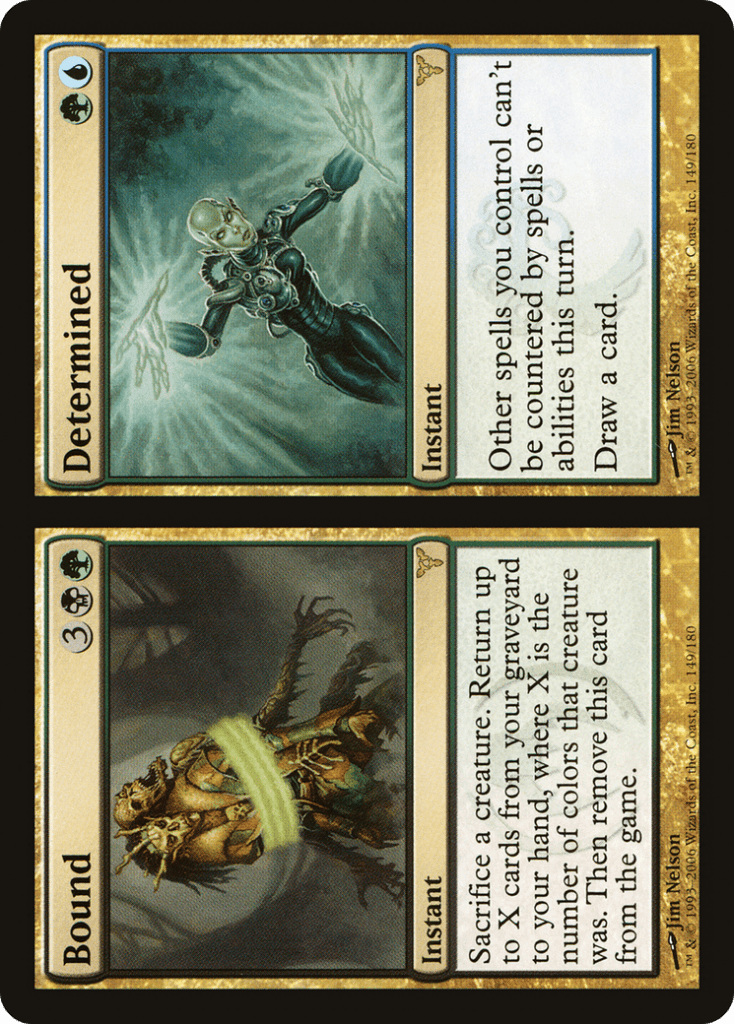
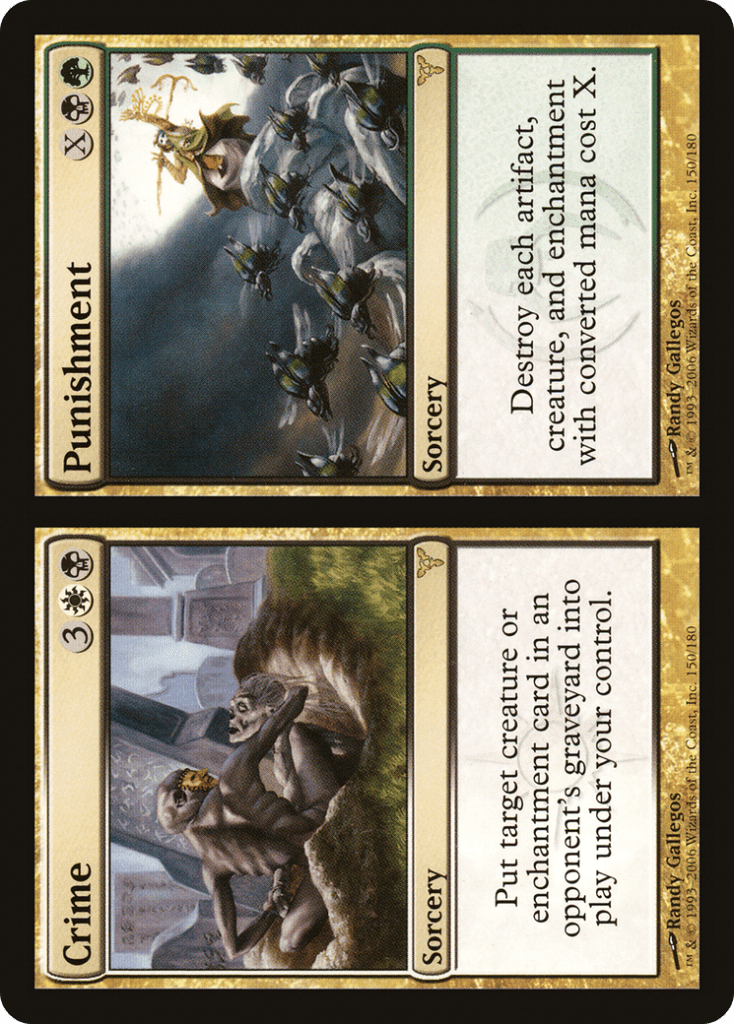
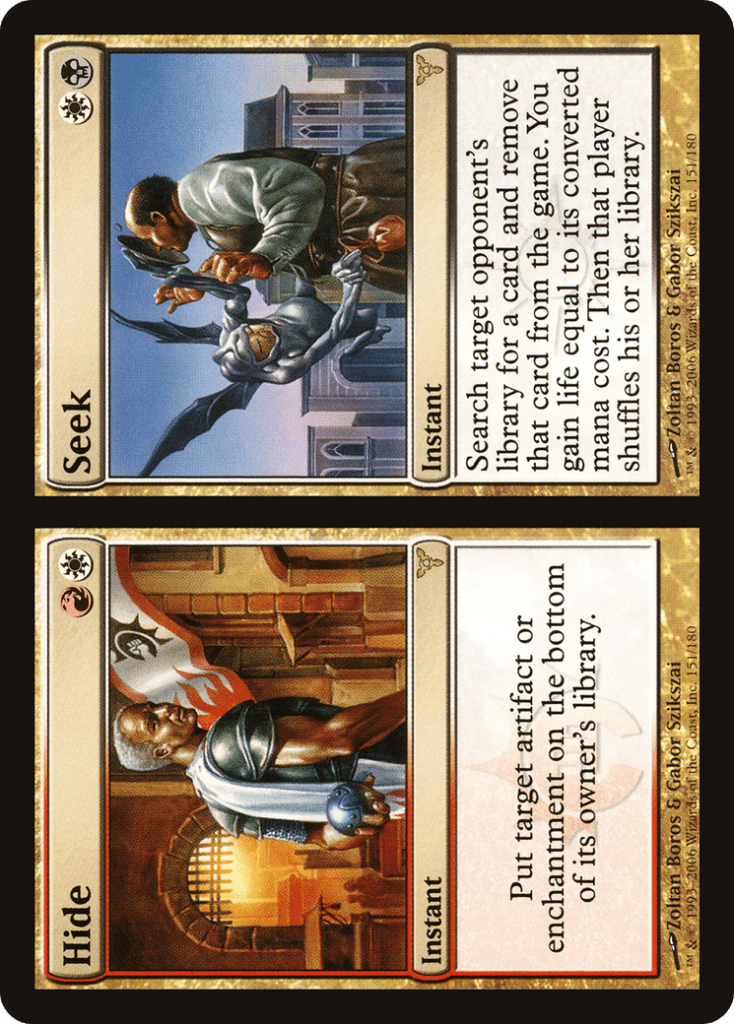

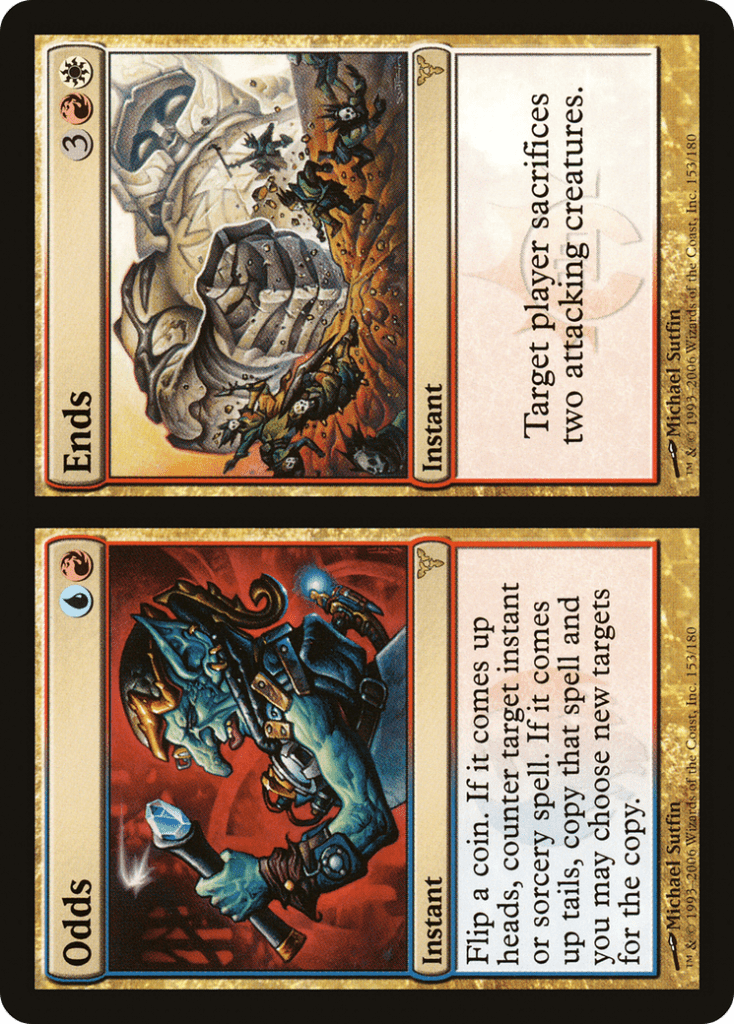
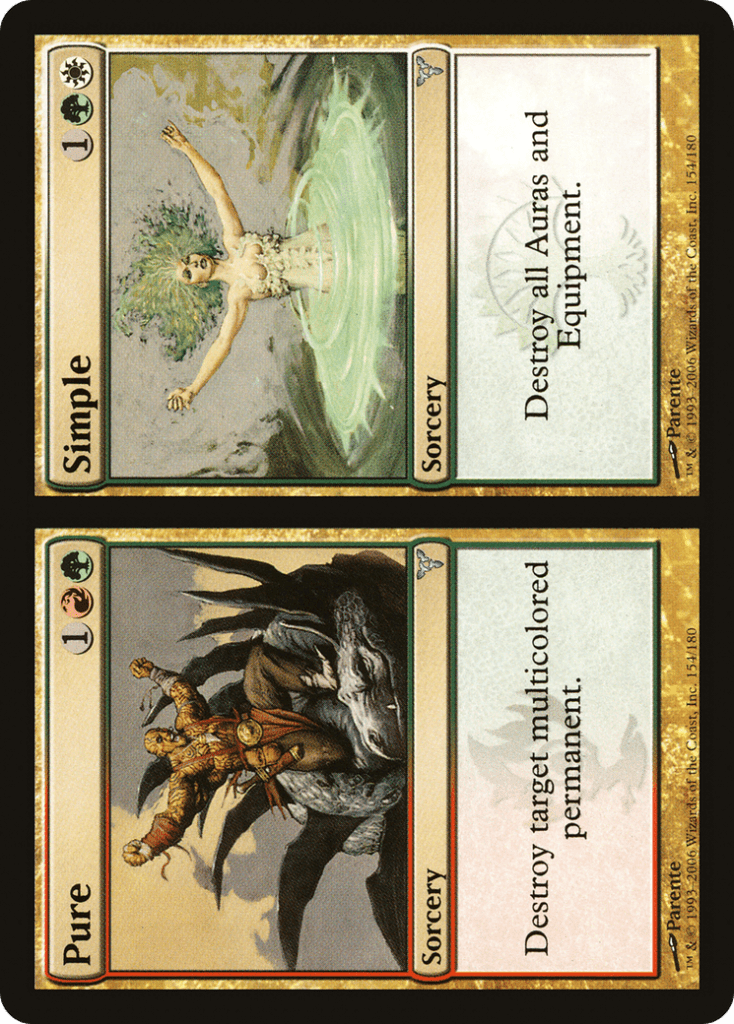
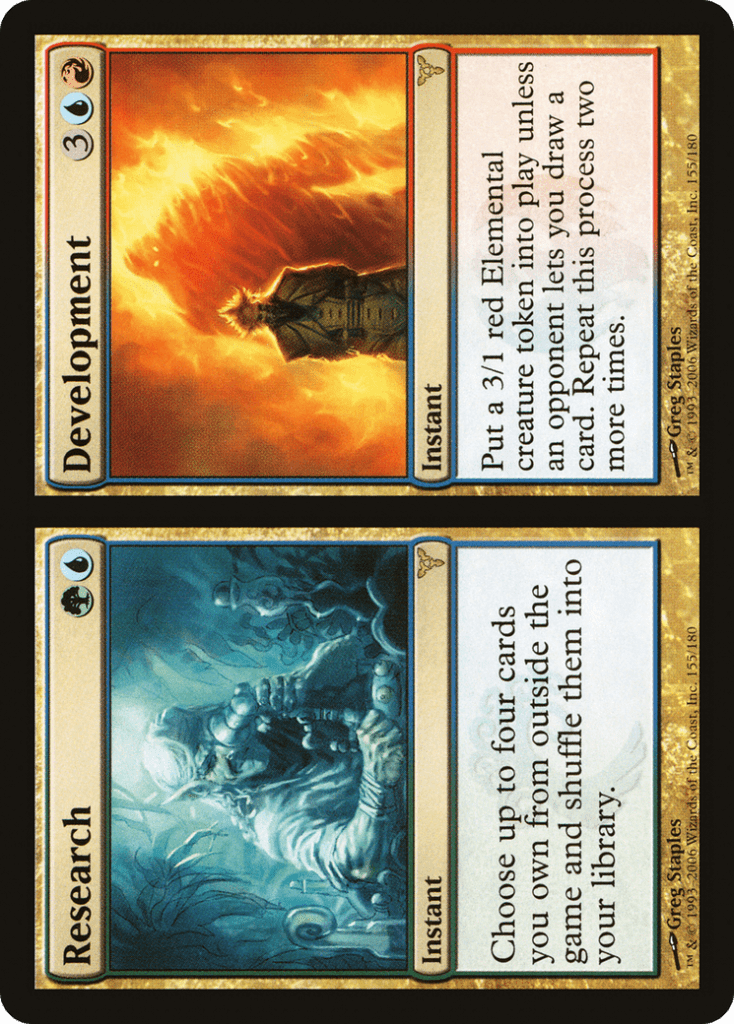
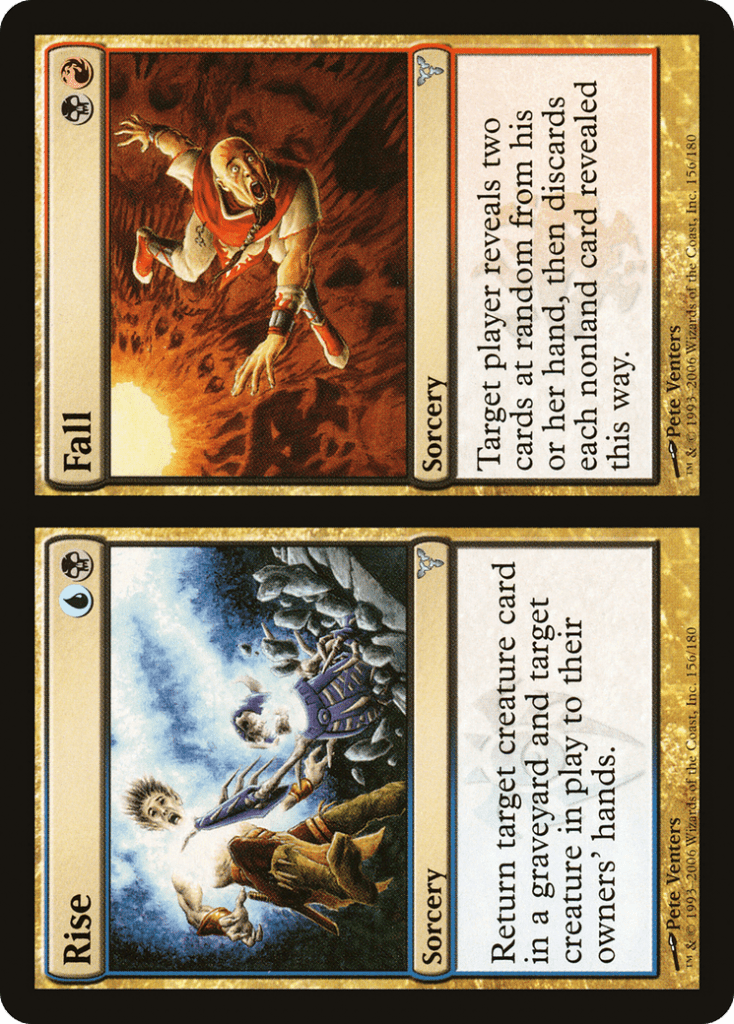
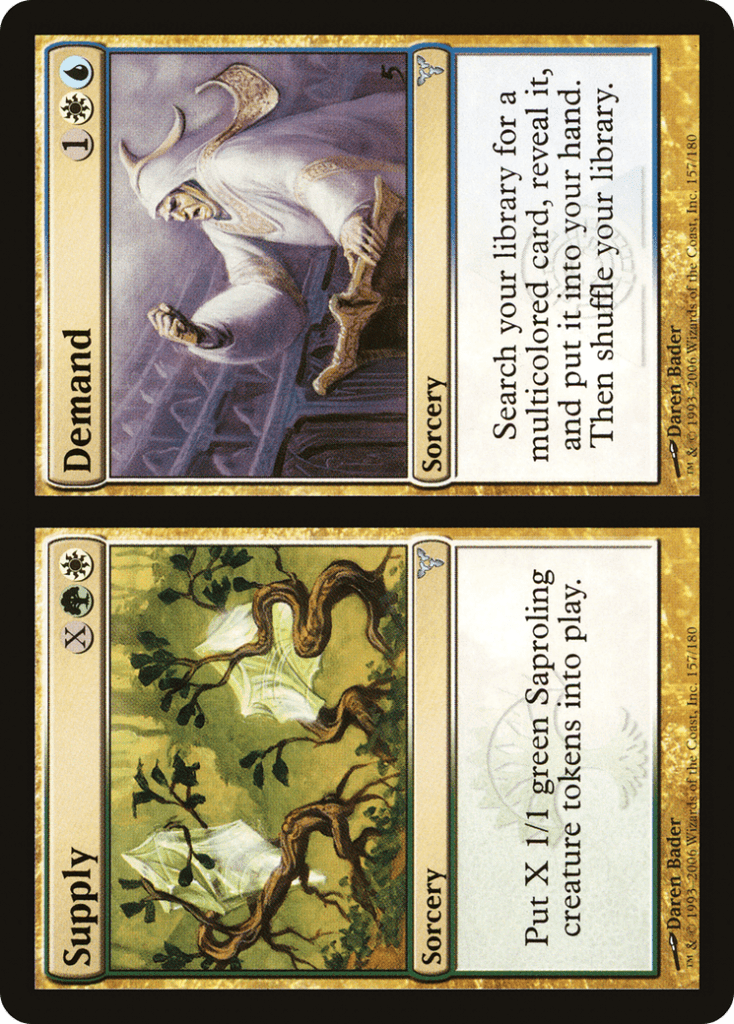

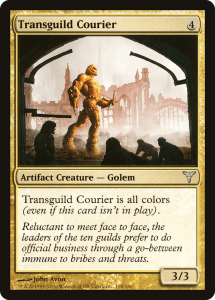
- Aethermage's Touch
- Anthem of Rakdos
- Assault Zeppelid
- Azorius Aethermage
- Azorius First-Wing
- Azorius Ploy
- Coiling Oracle
- Cytoshape
- Dread Slag
- Experiment Kraj
- Gobhobbler Rats
- Grand Arbiter Augustin IV
- Hellhole Rats
- Isperia the Inscrutable
- Jagged Poppet
- Leafdrake Roost
- Lyzolda, the Blood Witch
- Momir Vig, Simic Visionary
- Omnibian
- Overrule
- Pain Magnification
- Palliation Accord
- Plaxcaster Frogling
- Plumes of Peace
- Pride of the Clouds
- Rain of Gore
- Rakdos Augermage
- Rakdos Ickspitter
- Rakdos the Defiler
- Simic Sky Swallower
- Sky Hussar
- Swift Silence
- Trygon Predator
- Twinstrike
- Vigean Hydropon
- Vigean Intuition
- Voidslime
- Windreaver
- Wrecking Ball
- Avatar of Discord
- Azorius Guildmage
- Biomantic Mastery
- Dovescape
- Minister of Impediments
- Rakdos Guildmage
- Riot Spikes
- Shielding Plax
- Simic Guildmage
- Bound // Determined
- Crime // Punishment
- Hide // Seek
- Hit // Run
- Odds // Ends
- Pure // Simple
- Research // Development
- Rise // Fall
- Supply // Demand
- Trial // Error
- Transguild Courier
Colorless
- Azorius Signet
- Bronze Bombshell
- Evolution Vat
- Magewright's Stone
- Muse Vessel
- Rakdos Riteknife
- Rakdos Signet
- Simic Signet
- Skullmead Cauldron
- Walking Archive
Lands
- Azorius Chancery
- Blood Crypt
- Breeding Pool
- Ghost Quarter
- Hallowed Fountain
- Novijen, Heart of Progress
- Pillar of the Paruns
- Prahv, Spires of Order
- Rakdos Carnarium
- Rix Maadi, Dungeon Palace
- Simic Growth Chamber
Notable Cards
The Shock Lands
For better or worse, love them and hate them, lands are one of Magic's fundamental features. The Ravnica block brought us what in MTG slang are known as “shock lands“: dual-colored lands that enter the battlefield tapped unless you pay 2 life.
Like the infamous original dual lands, each shock land has two basic land types: Blood Crypt, for example, is both a swamp and a mountain.
They aren’t themselves basic lands – that's to say, you can't tutor them with effects that specifically search for basic lands, like Cultivate or Evolving Wilds. But you can search for them with effects that look for a specific land type, like a swamp or a mountain. Which in turn means that shock lands are a match made in heaven for another of Magic's most powerful land cycles: the fetch lands.
For example, you can fetch Blood Crypt from your library with a Bloodstained Mire, or a Polluted Delta, or a Verdant Catacombs, since they all let you search for a swamp.
Dissension brought us the shock lands for Simic, Rakdos, and Azorius – they’re the most expensive cards from this set, the most popular Dissension cards (by far!) across all formats where they’re legal, and borderline must-haves for any deck in their colors.
The Signets
Then again, sometimes lands don't give you enough juice for your power-hungry deck and you need an extra pinch of power. That's when mana rocks come into play: artifacts that generate mana and let you further ramp into your big spells.
Utopia Sprawl
One of the best cards for enchantress decks, Utopia Sprawl is basically a mana dork that dodges creature-specific removal: there are lots of cards that can kill a Llanowar Elves, but enchantments are a lot more resilient.
Bounce Lands
These lands are several steps below shock lands in the dual-lands pecking order, but they’re still fairly useful in Commander.
When a bounce land enters play, it returns one of your other lands to your hand (hence “bounce“). But once you jump through all their hoops (they also come into play tapped), they generate you two mana per tap.
Protean Hulk
Protean Hulk used to run amok with Flash, causing much mayhem across formats until Flash earned itself a ban in Commander and Legacy, and “restricted” status in Vintage.
The meaty beast is a lot tamer without its flashy friend, but still one of the strongest hulks out there.
Transguild Courier
Keen-eyed readers may have noticed that, in the full list of Dissension cards, I've included a card with generic casting cost among the multicolor cards.
But that's what Transguild Courier‘s rules text says: This artifact creature is all colors. It’s the first colored artifact to be printed, and also the first artifact to have all colors.
(Although not the first artifact to have a 5-color color identity: Naked Singularity, from Ice Age, is a colorless card but has all five mana symbols in its rules text.)
Available Products

Dissension was sold in 15-card booster packs – a product of simpler times, when there was a single type of booster, way before Draft, Set, Collector, and Play boosters became a thing.
- Contains 15 cards per pack
Most sets back then also had four preconstructed decks aimed at new players, but since DIS focuses on three guilds, that's the number of intro decks it has:
Azorius Ascendant, the intro deck,
Rakdos Bloodsport, the intro deck,

Simic Mutology, the intro deck.

Dissension is rarely found on either Amazon or TCGPlayer – but their most useful cards have been abundantly reprinted, so you should have no problem buying singles from online stores or with other players.
Wrap Up

Lyzolda, the Blood Witch | Illustration by Jim Nelson
That concludes our charming promenade through Dissension, the third and last set from the original Ravnica block. Its original mechanics (namely hellbent, forecast, and graft) didn't make too much of splash, but as the set where hybrid mana was born, where three of Magic's 10 color pairs were formally named, and where the shock lands cycle was completed, Dissension‘s influence in the game we love has been large and long-lived.
I hope you've enjoyed this set overview, and if you have comments or suggestions on which sets, new or old, you'd like us to tackle next, do stop by for a chat at the Draftsim Discord.
Good luck out there!
Note: this post contains affiliate links. If you use these links to make a purchase, you’ll help Draftsim continue to provide awesome free articles and apps.
Follow Draftsim for awesome articles and set updates: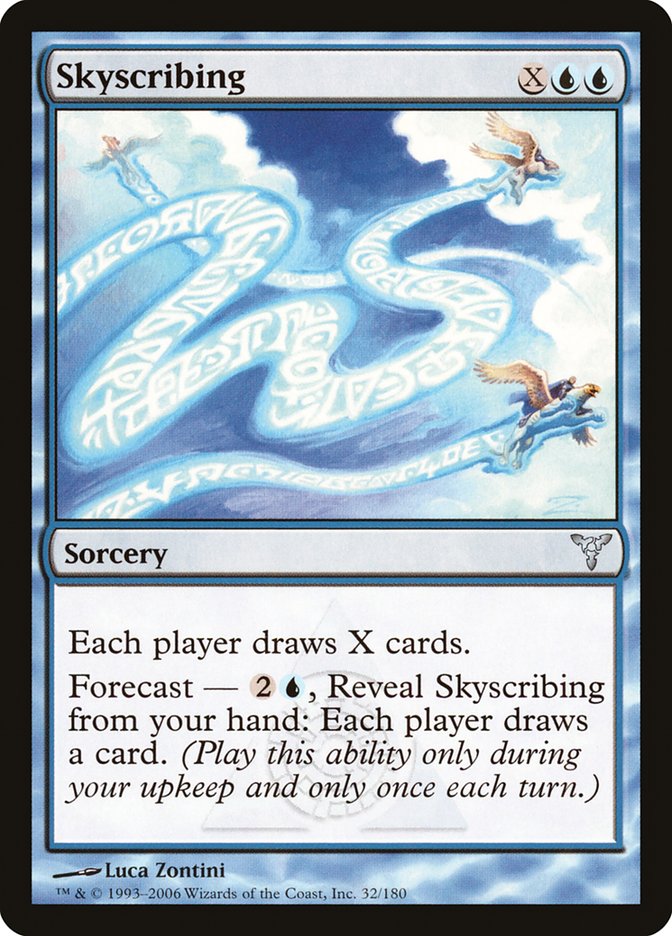
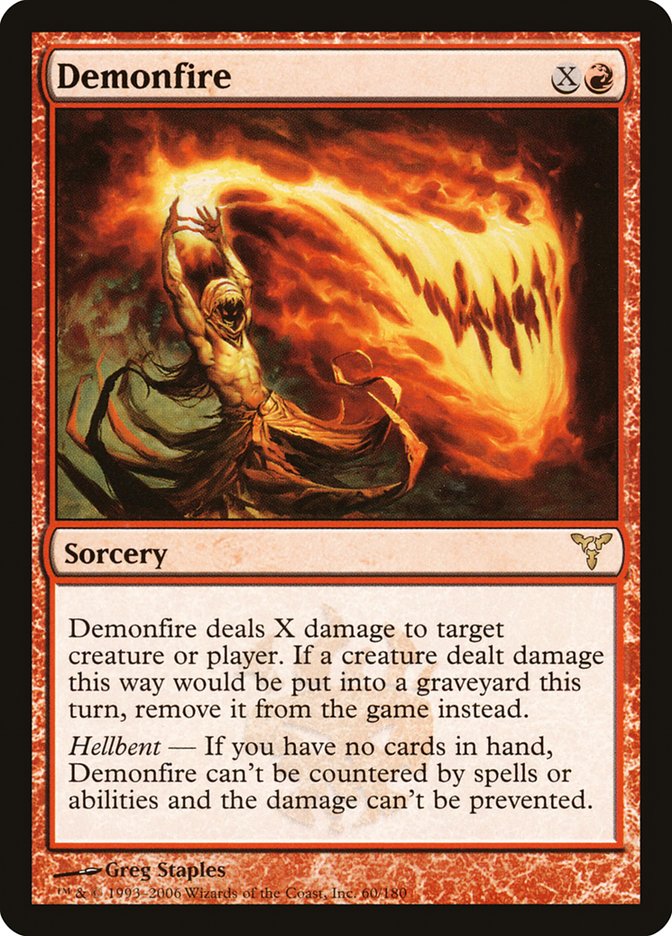
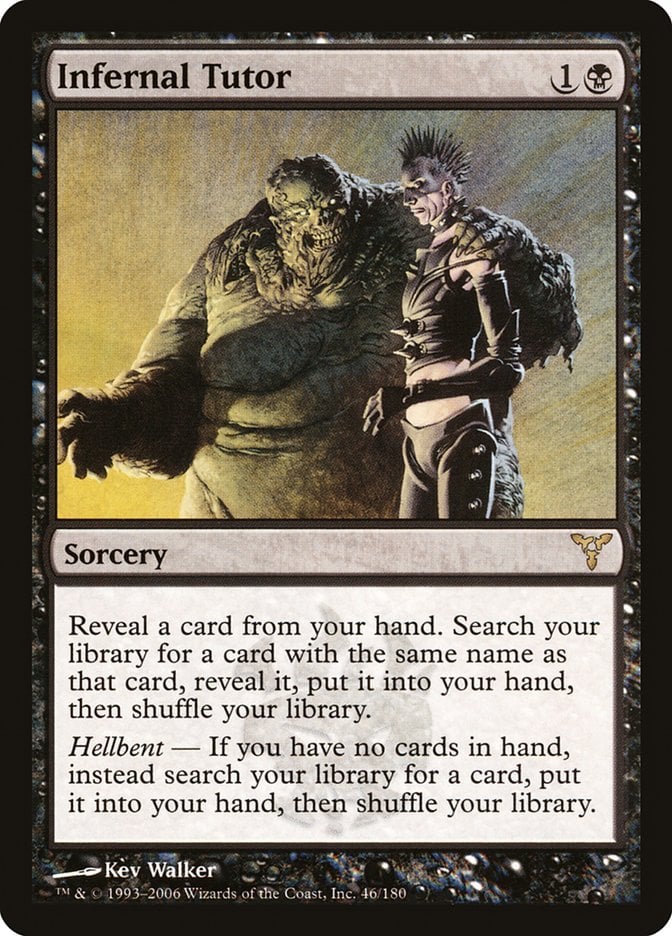

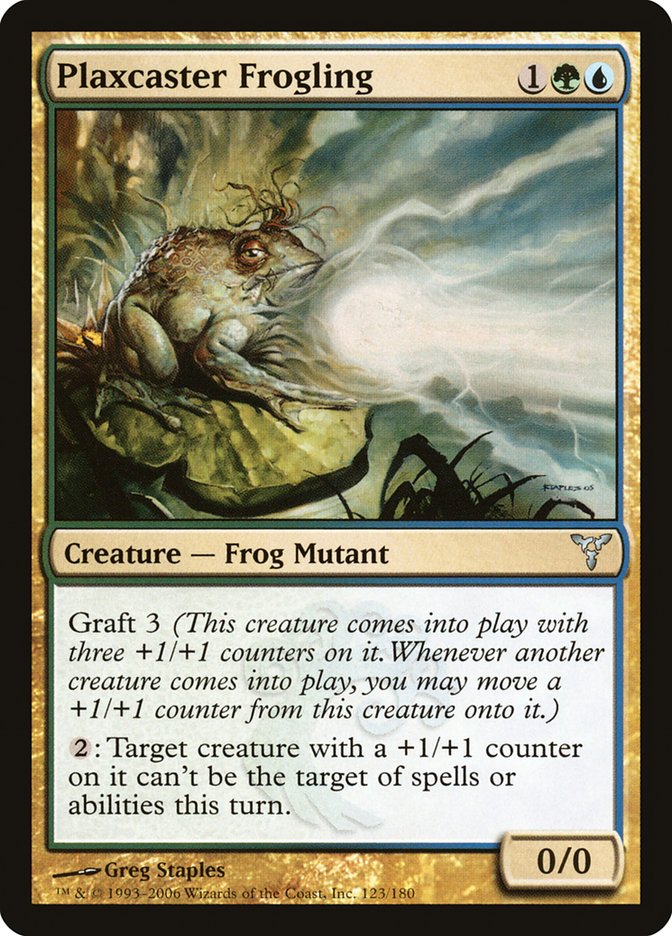

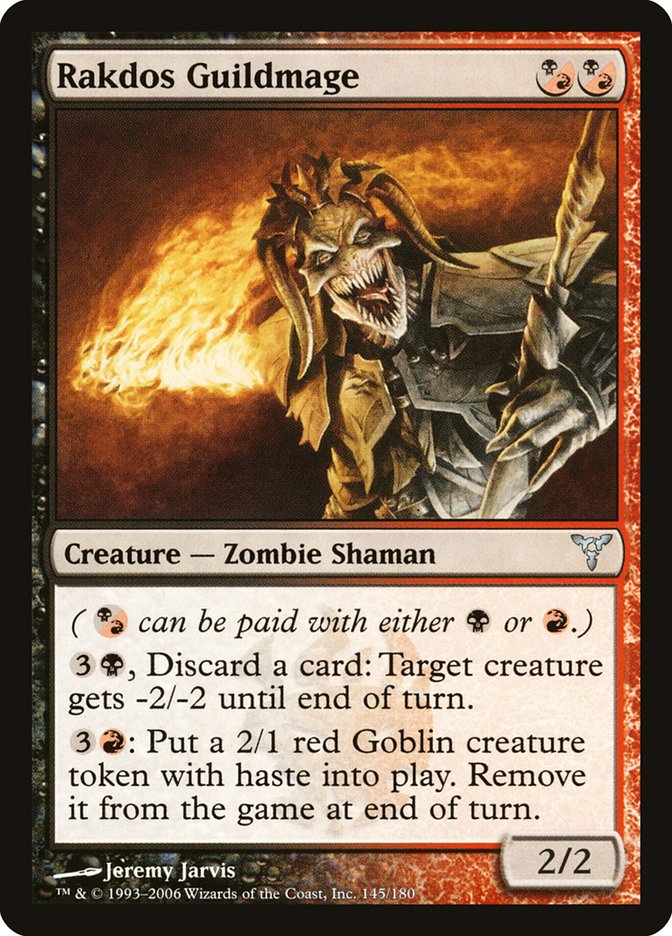
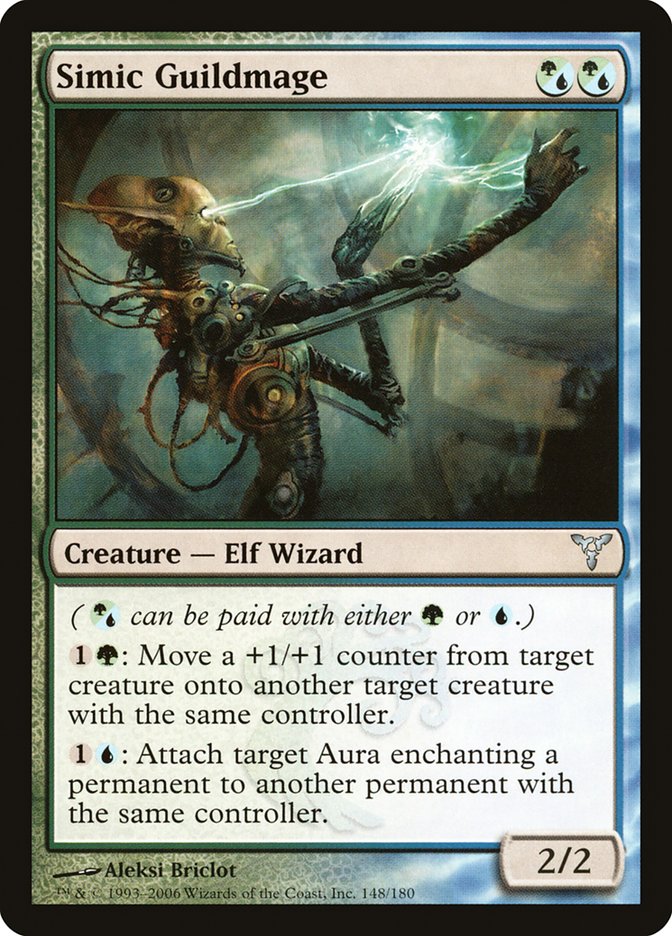
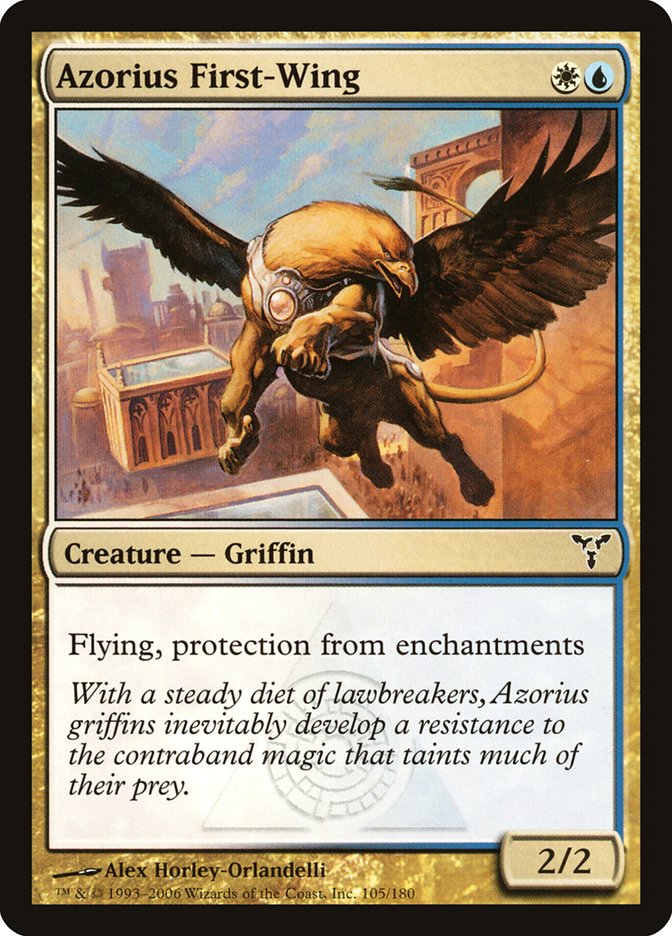
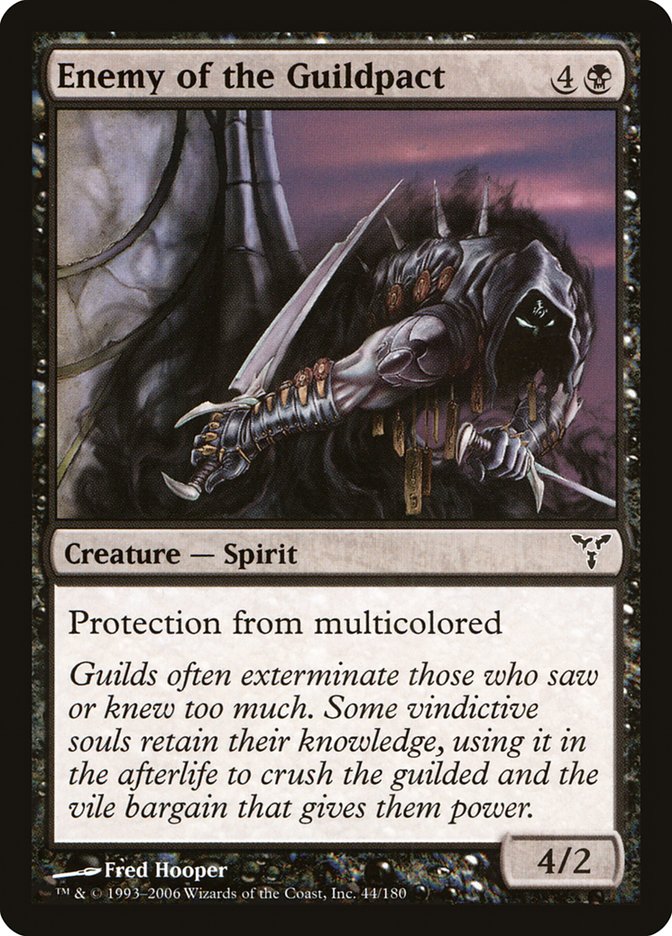
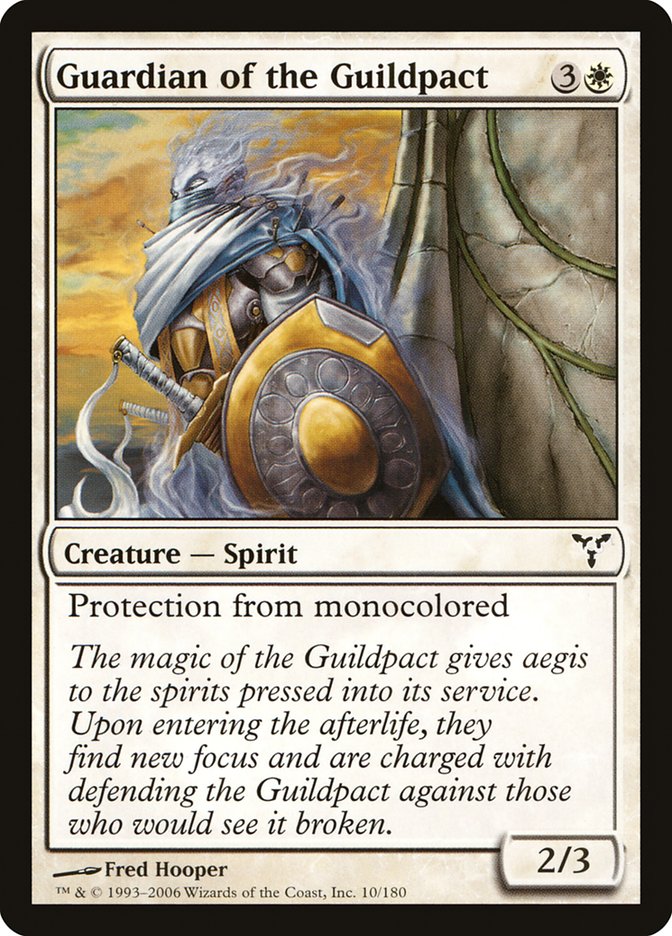
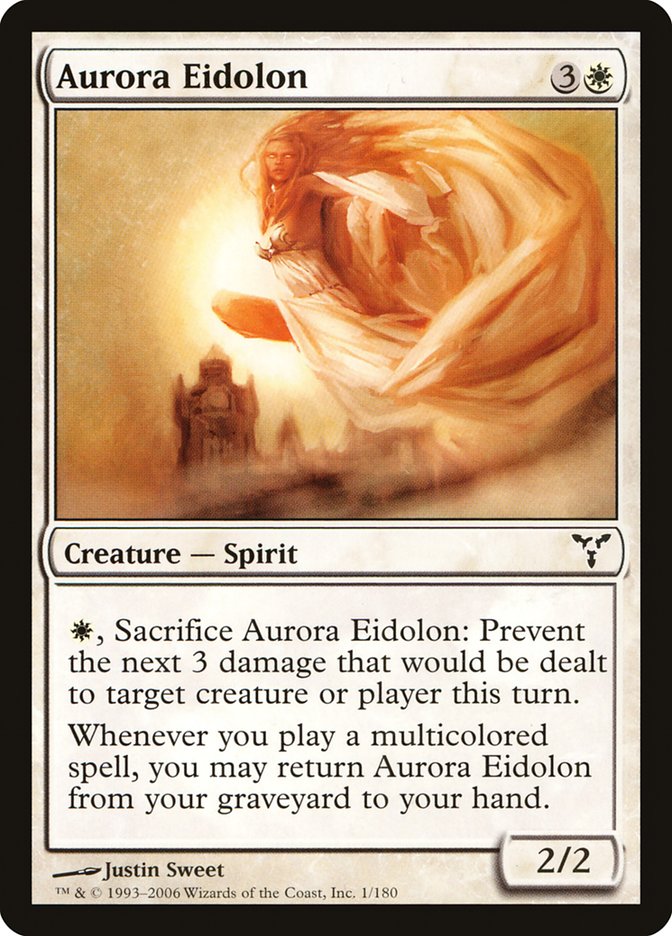
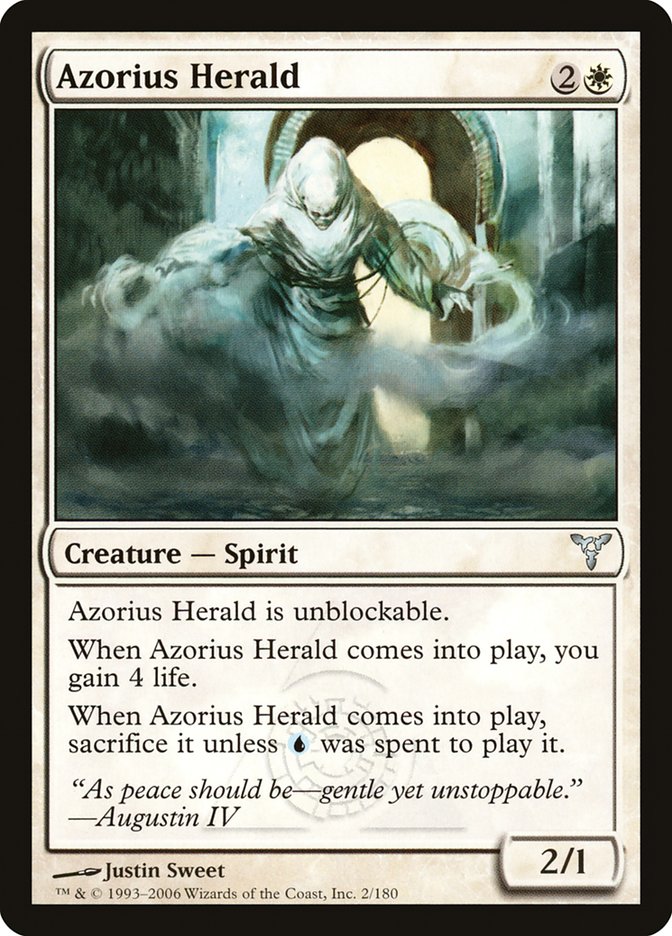
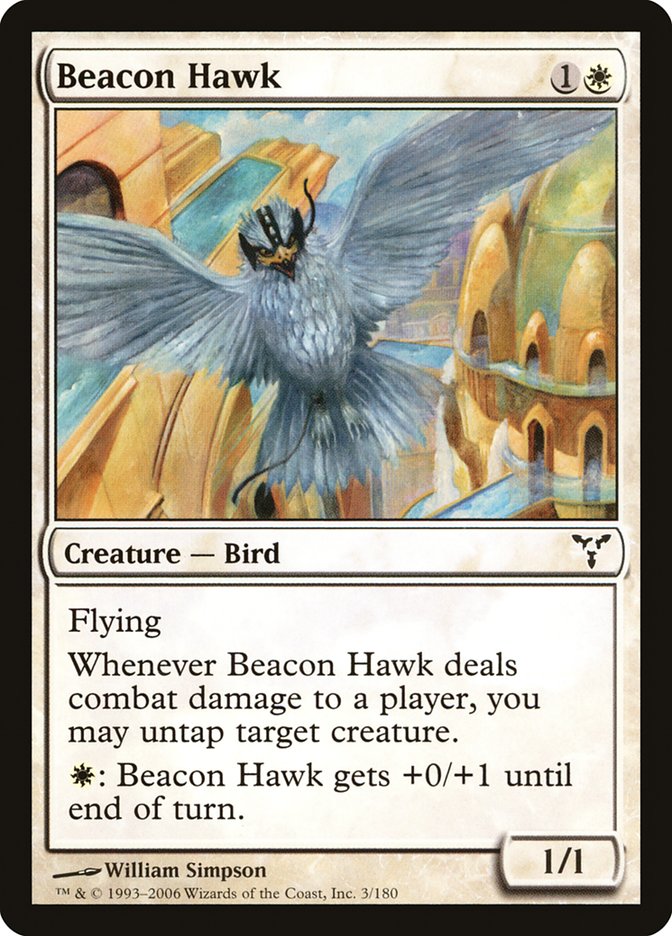
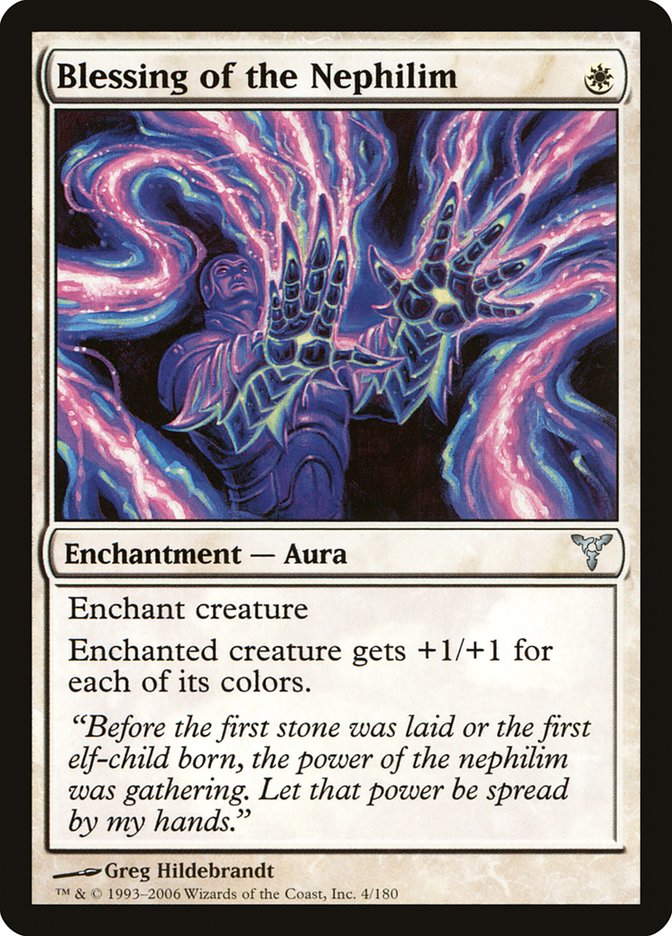

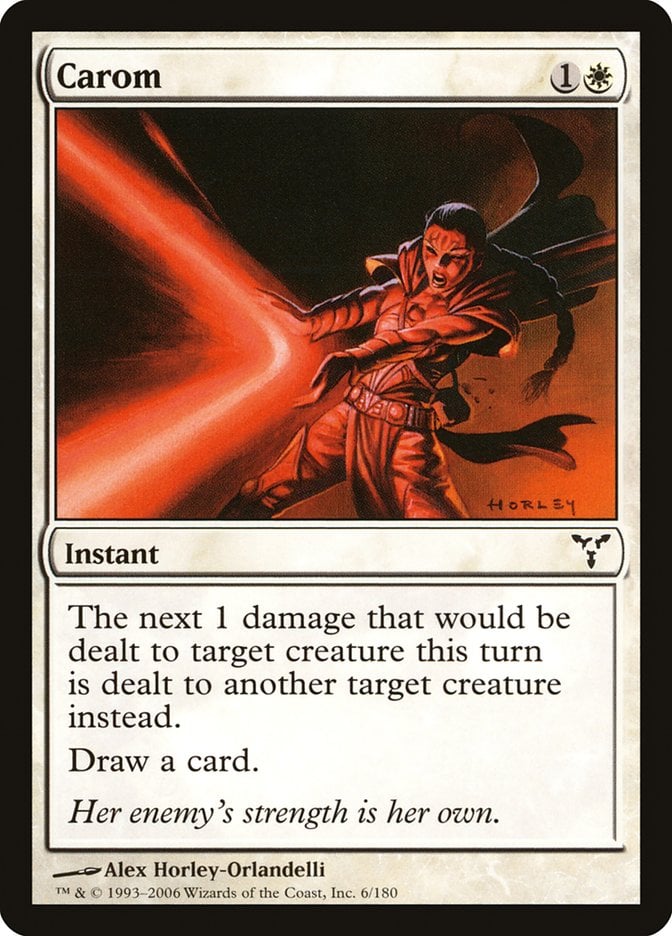
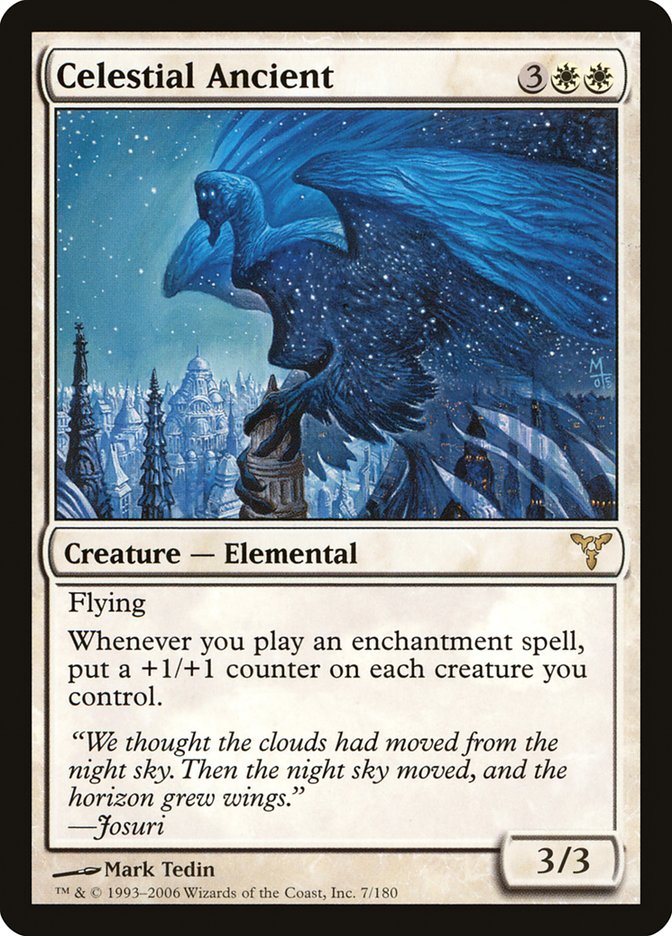
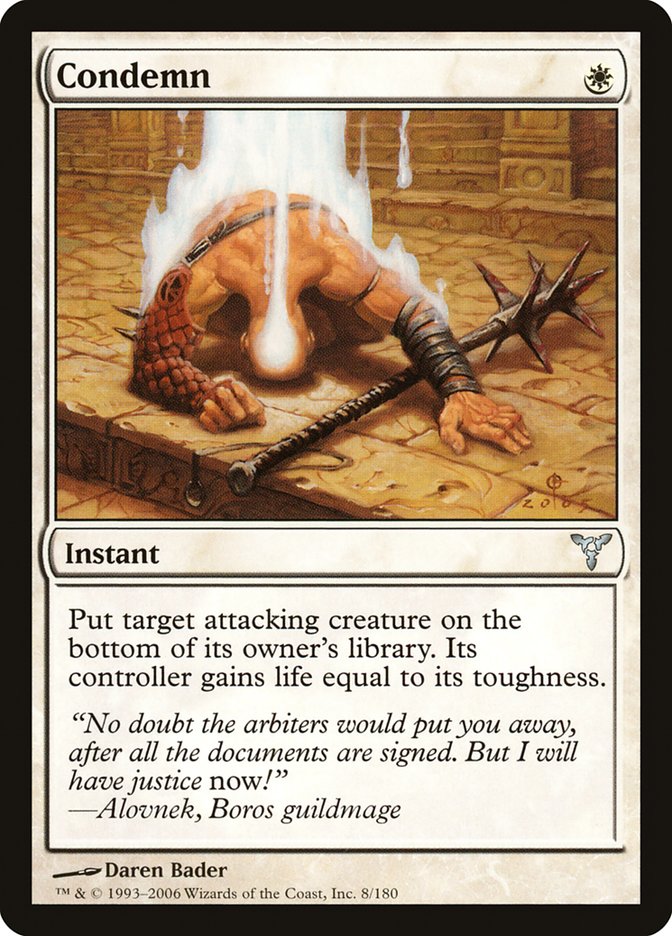
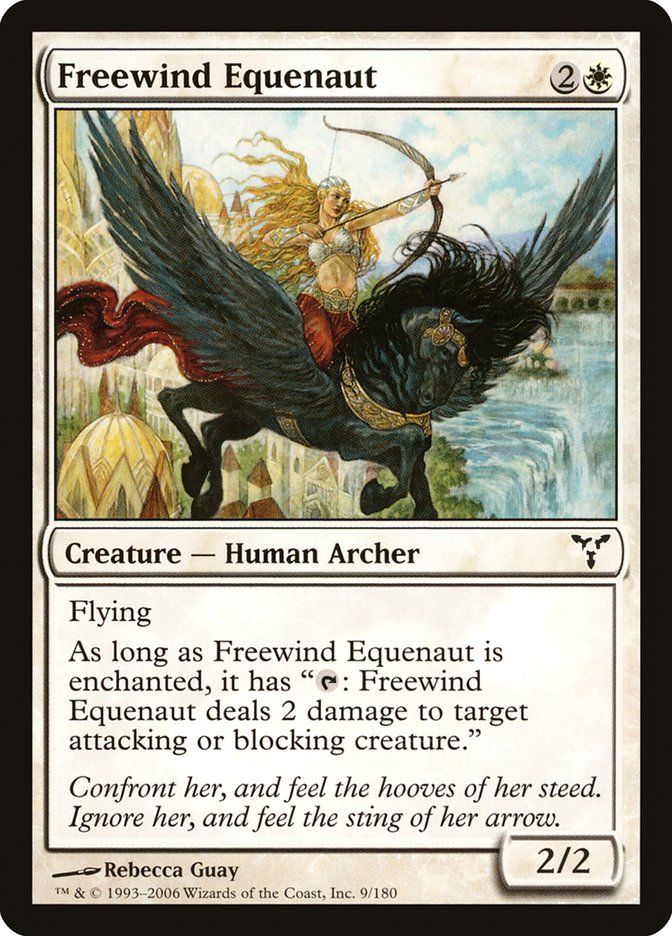


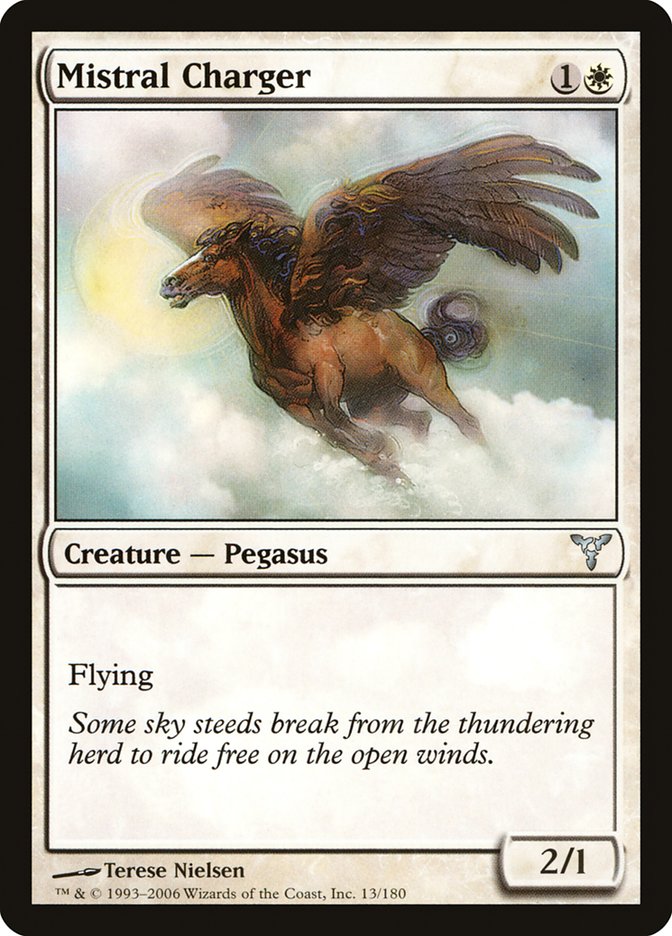
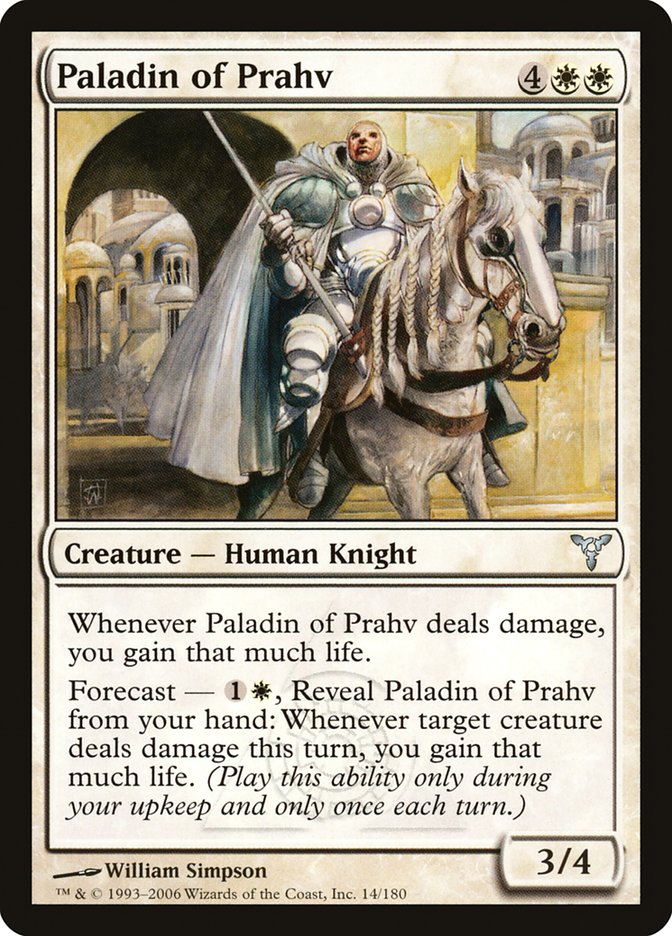
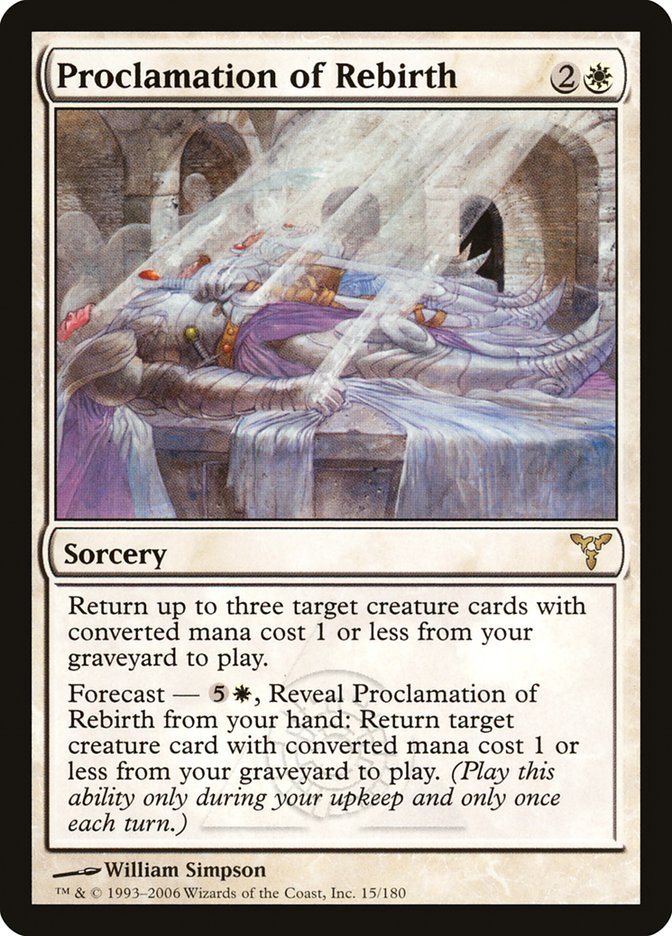
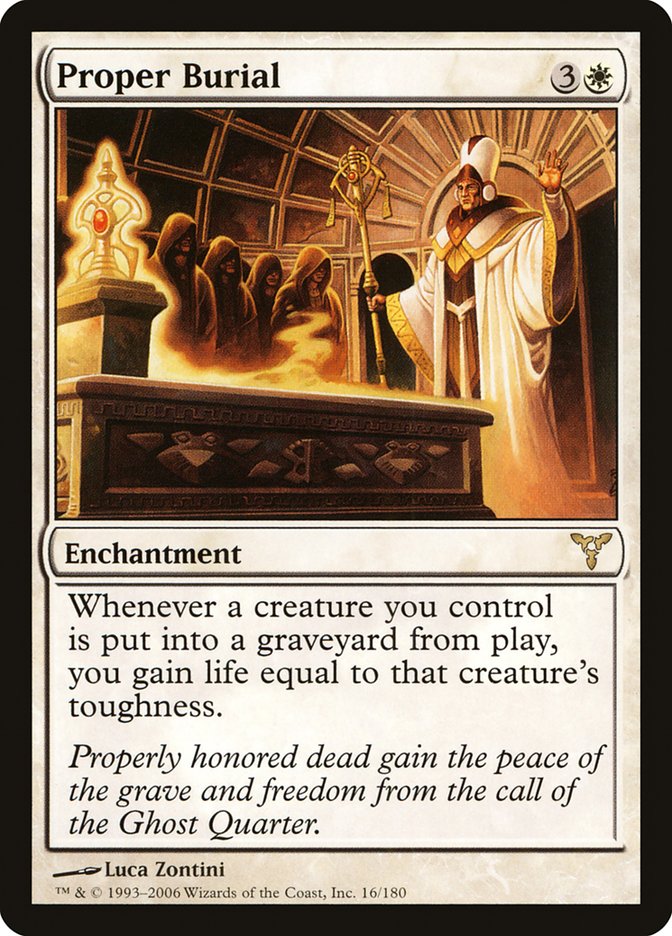
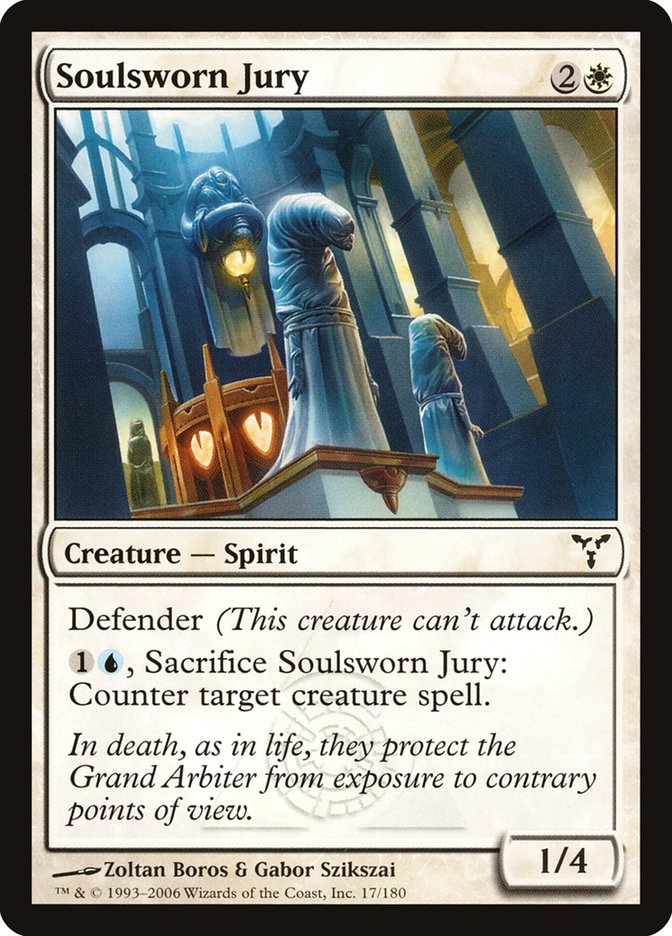
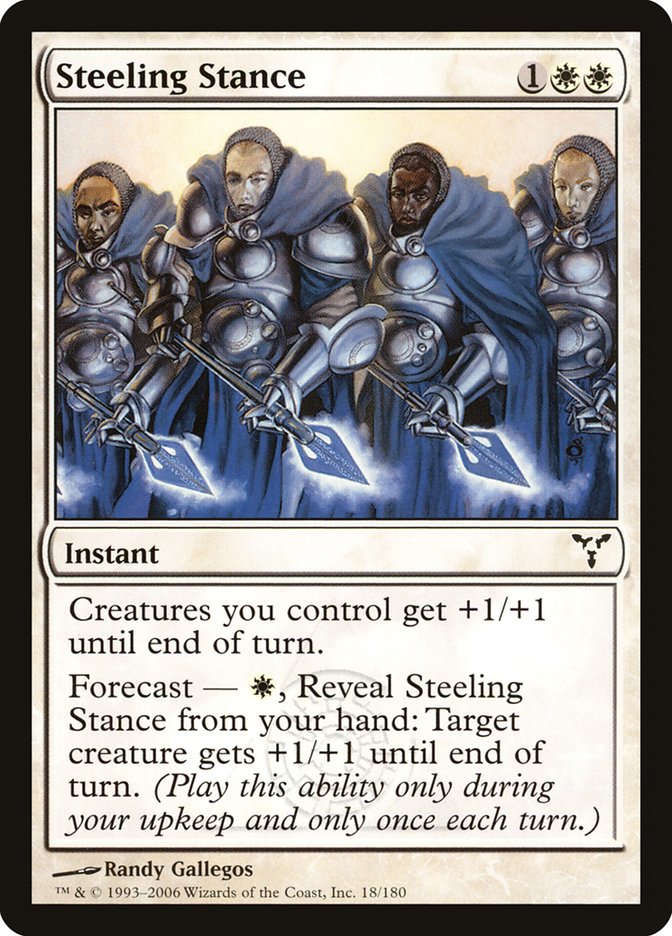

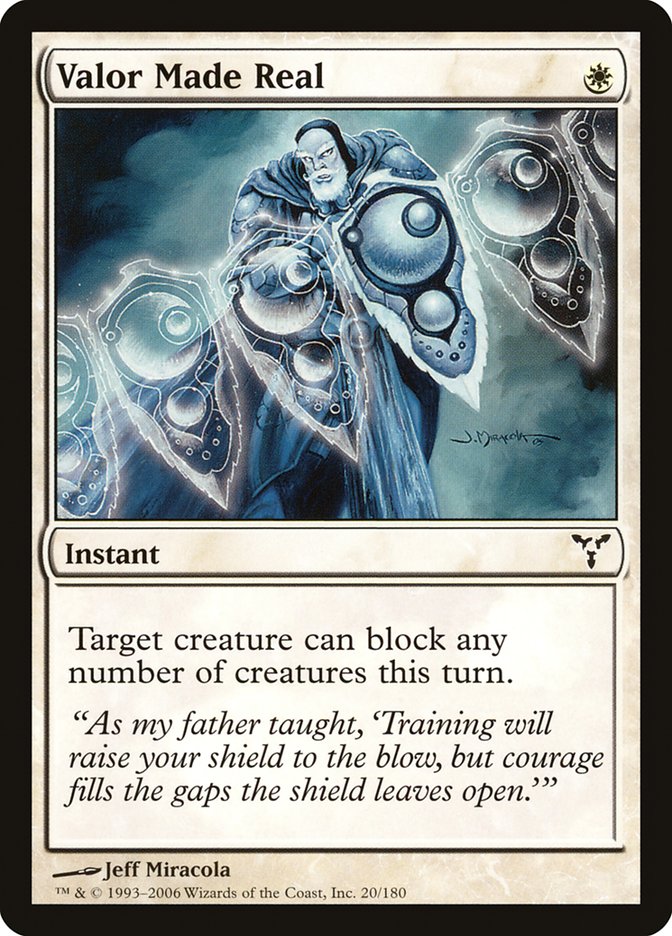
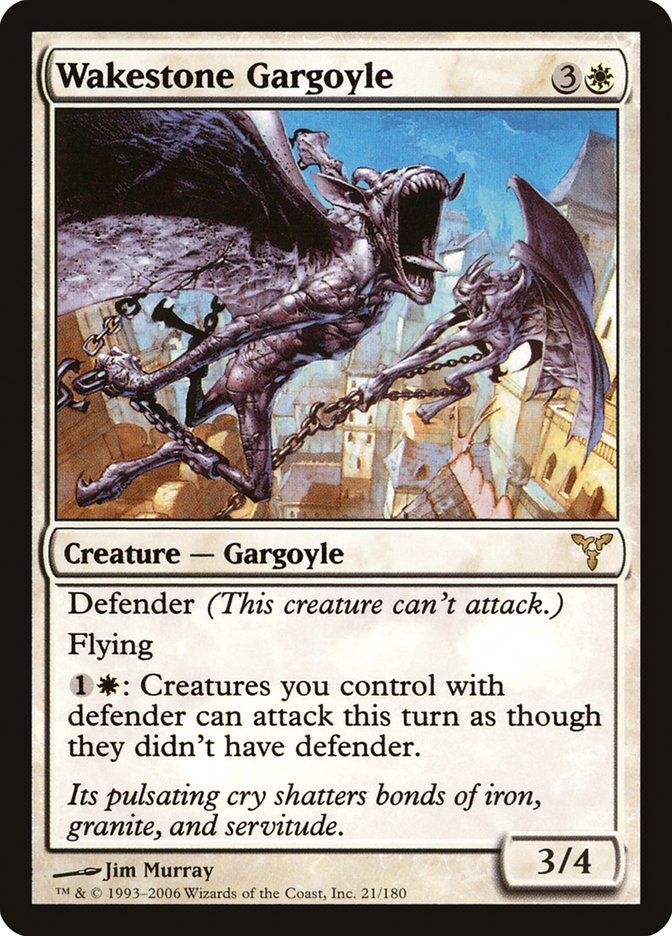

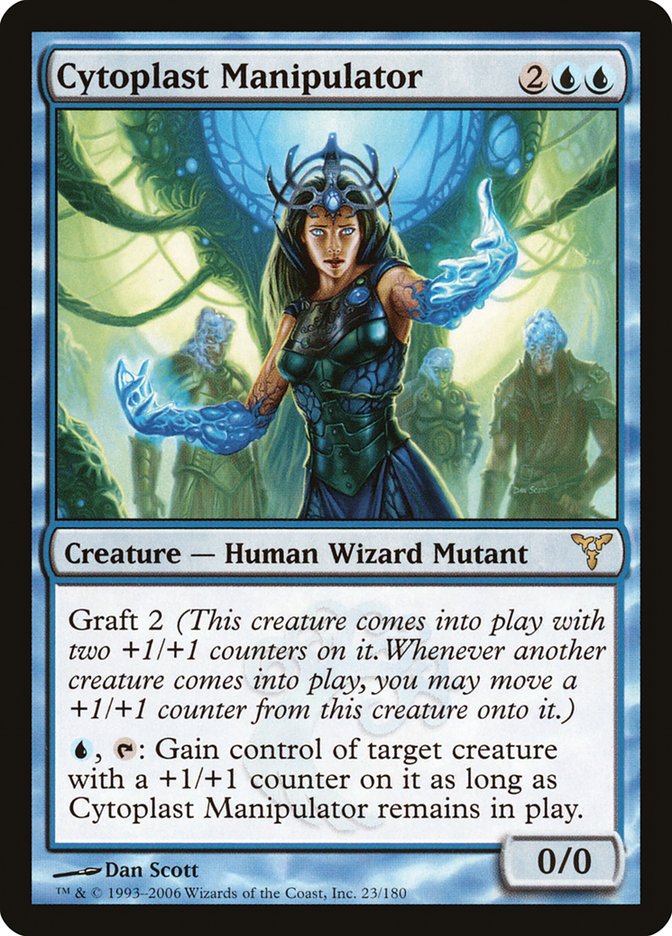

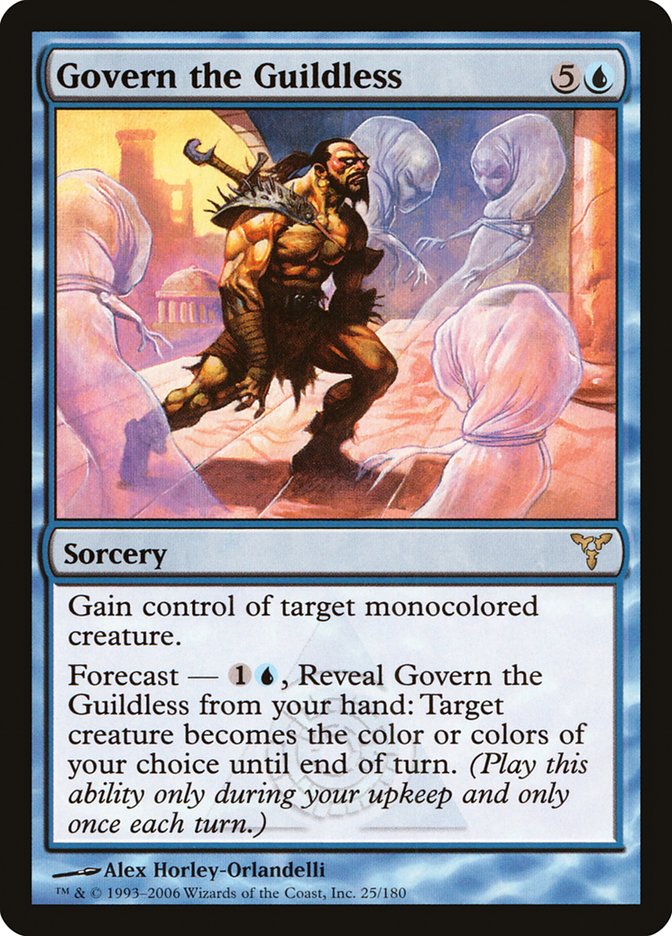
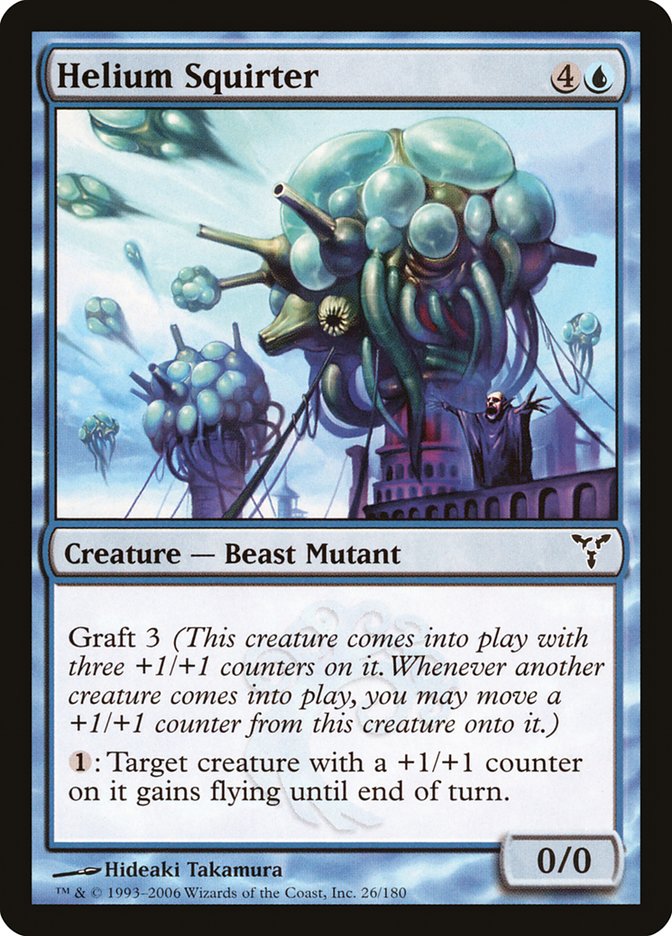

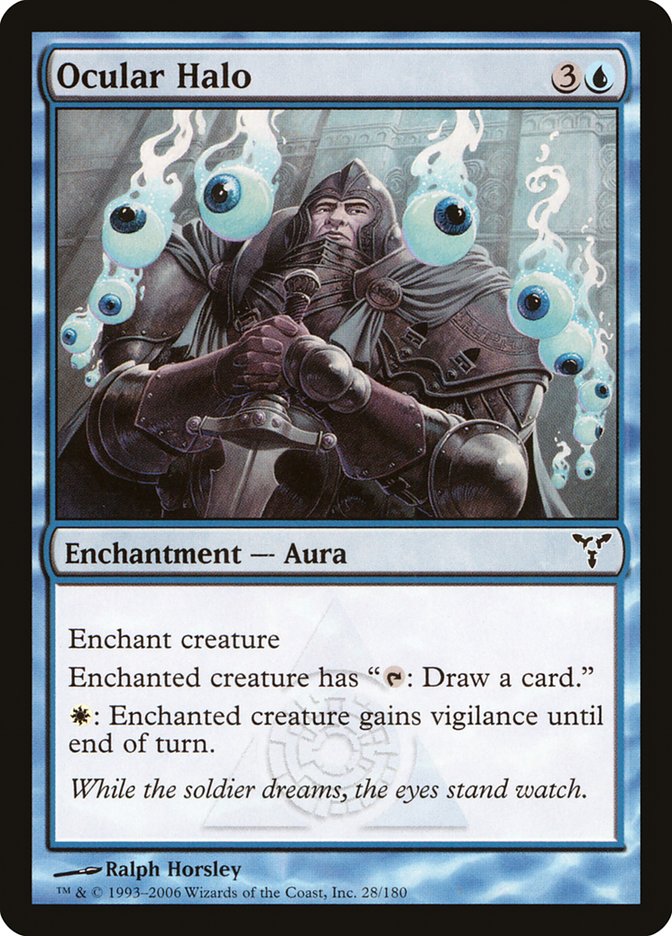
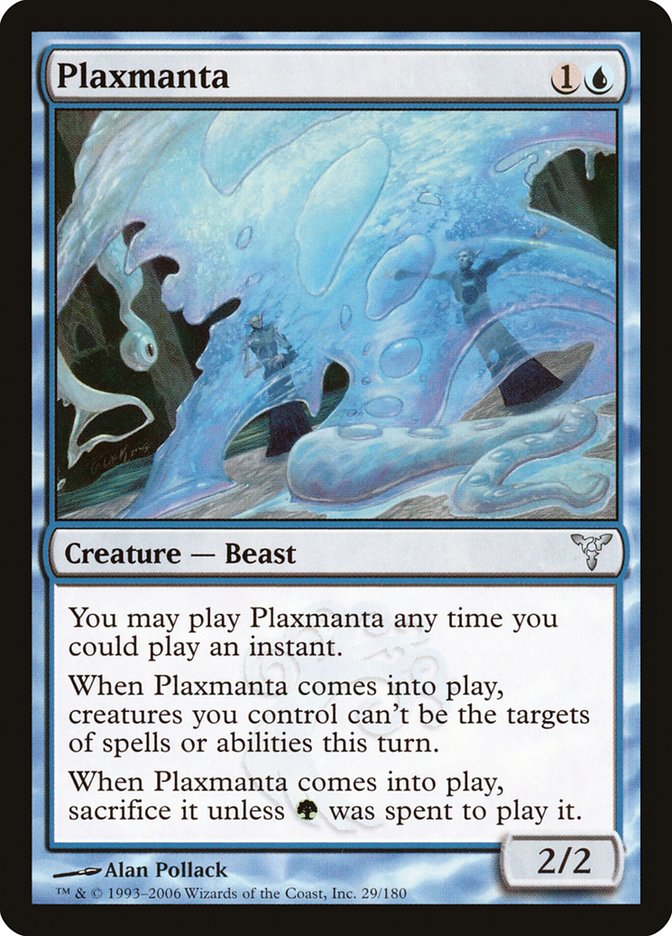

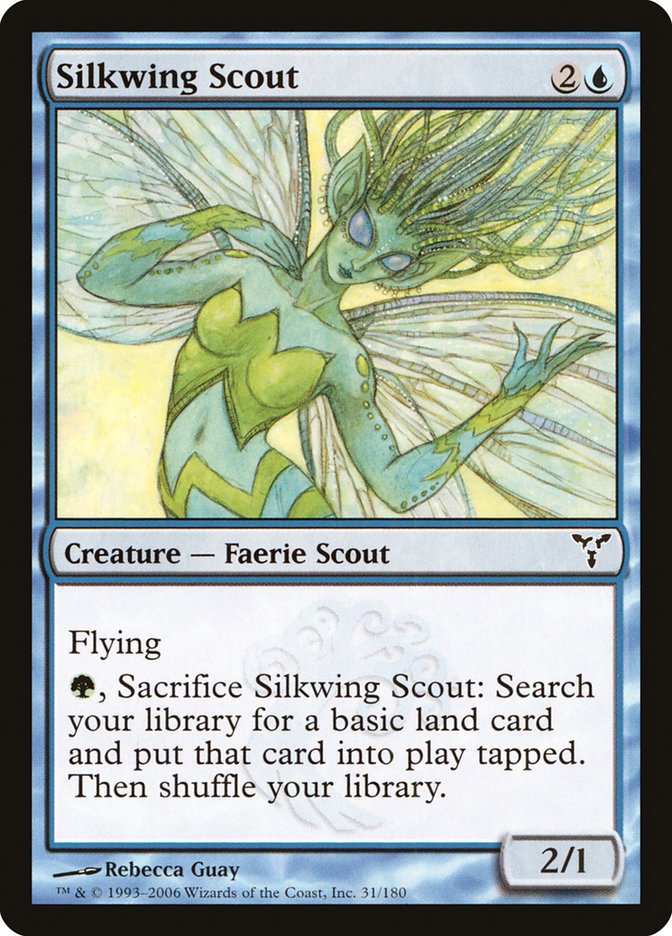
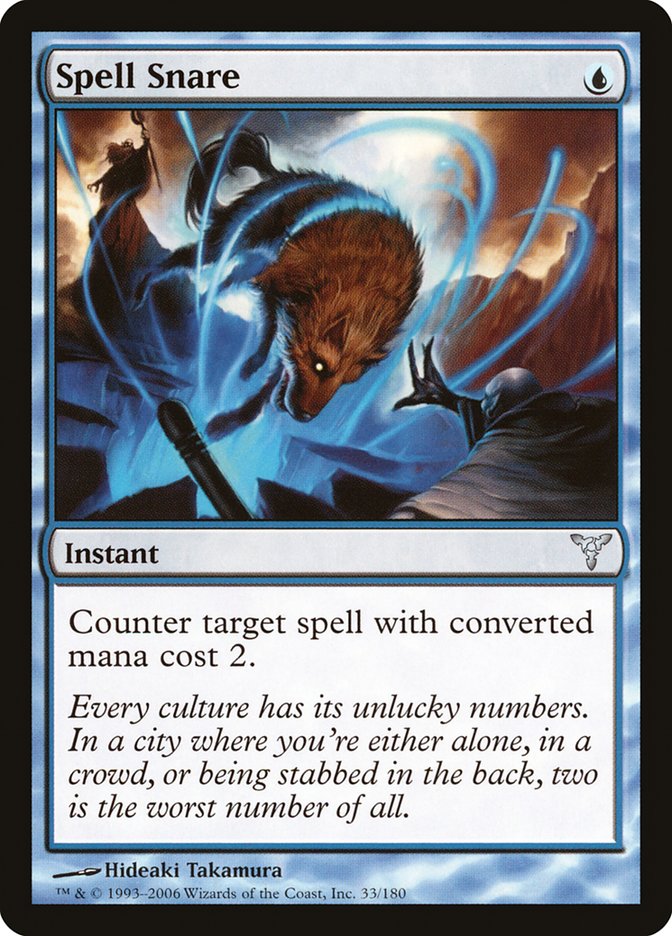
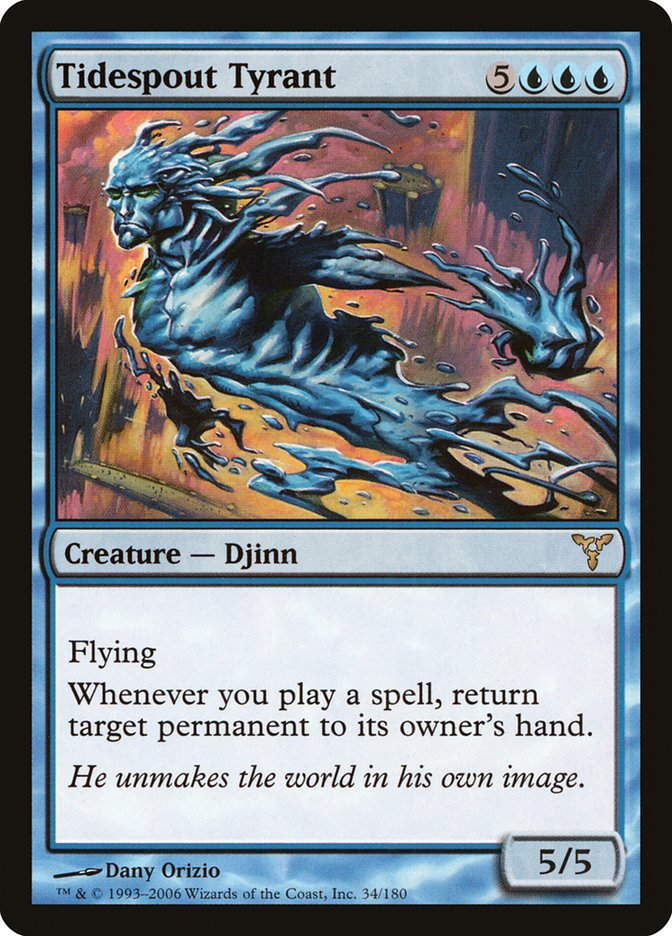

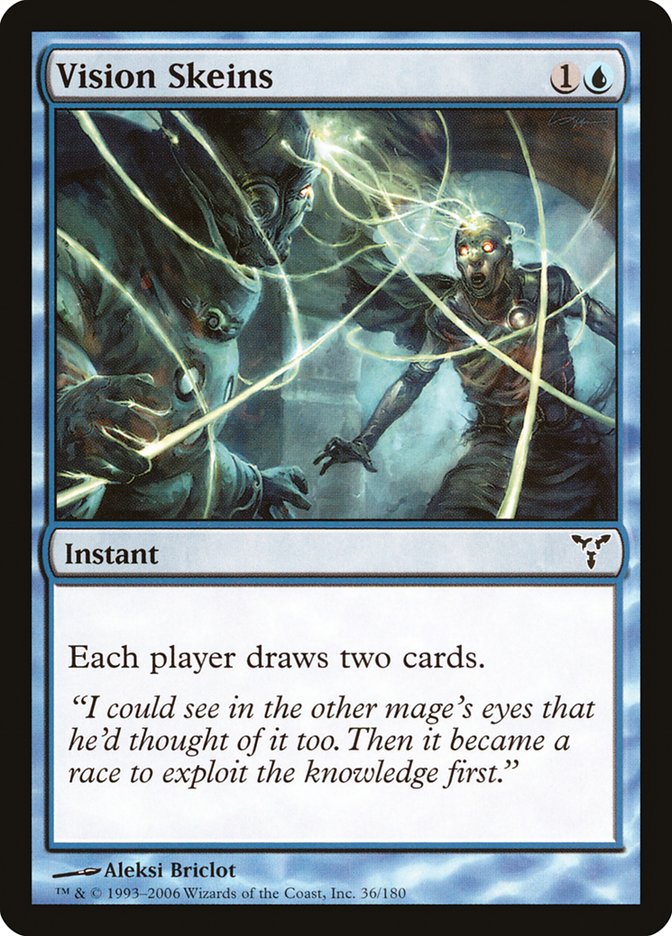
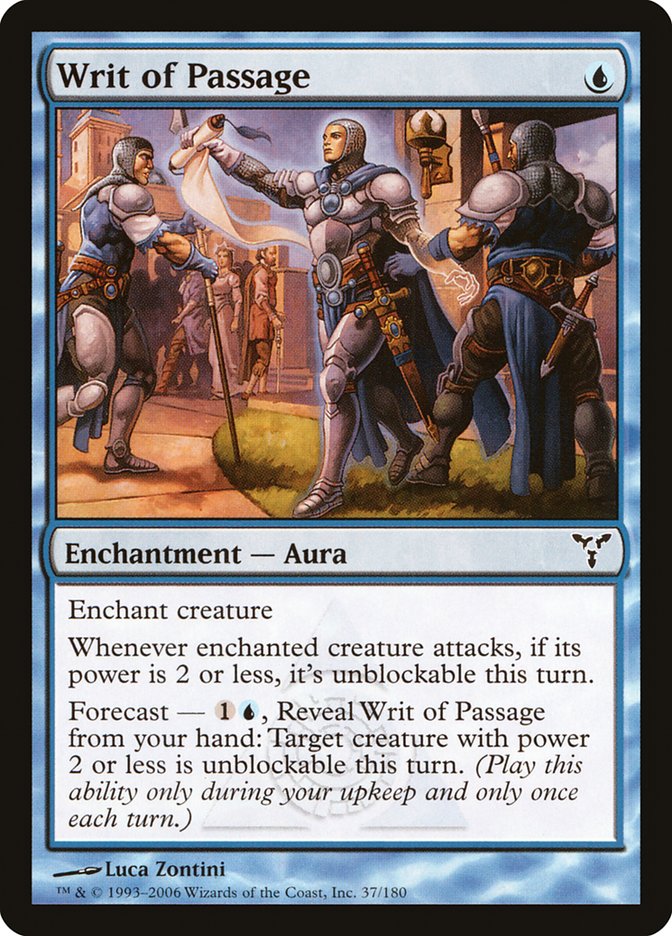
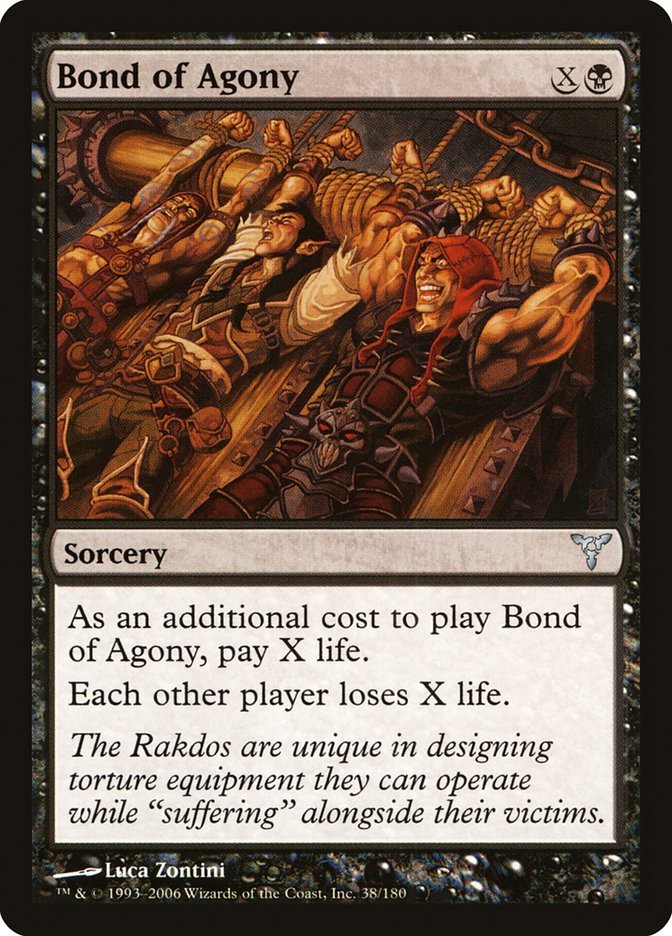
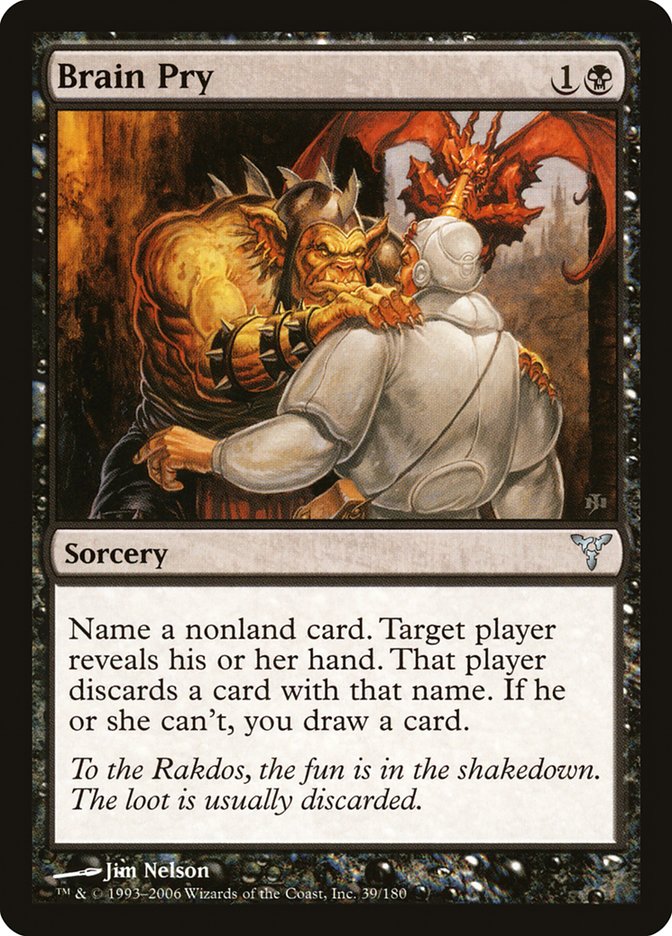
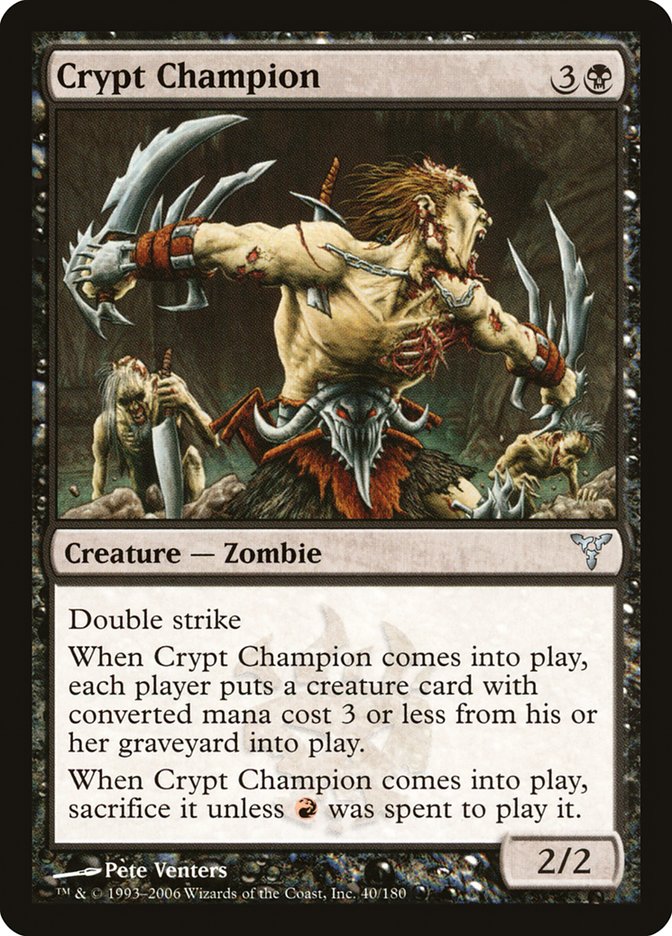


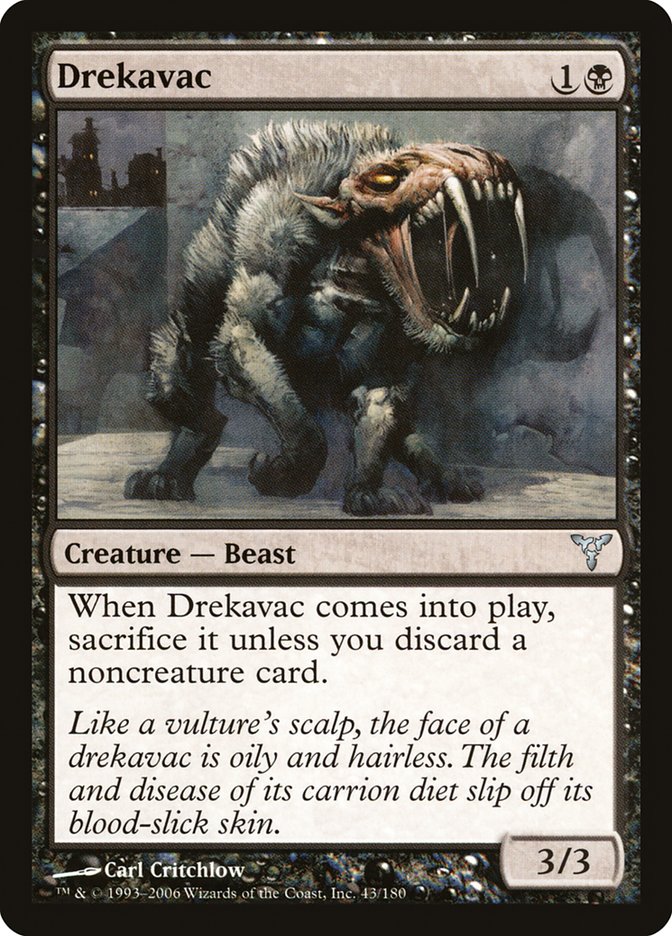

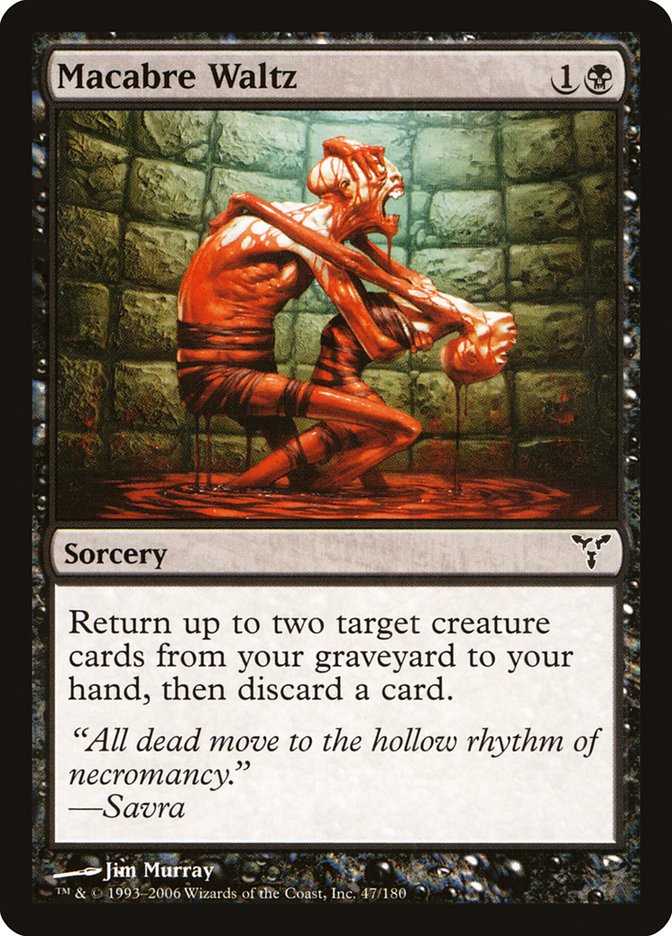


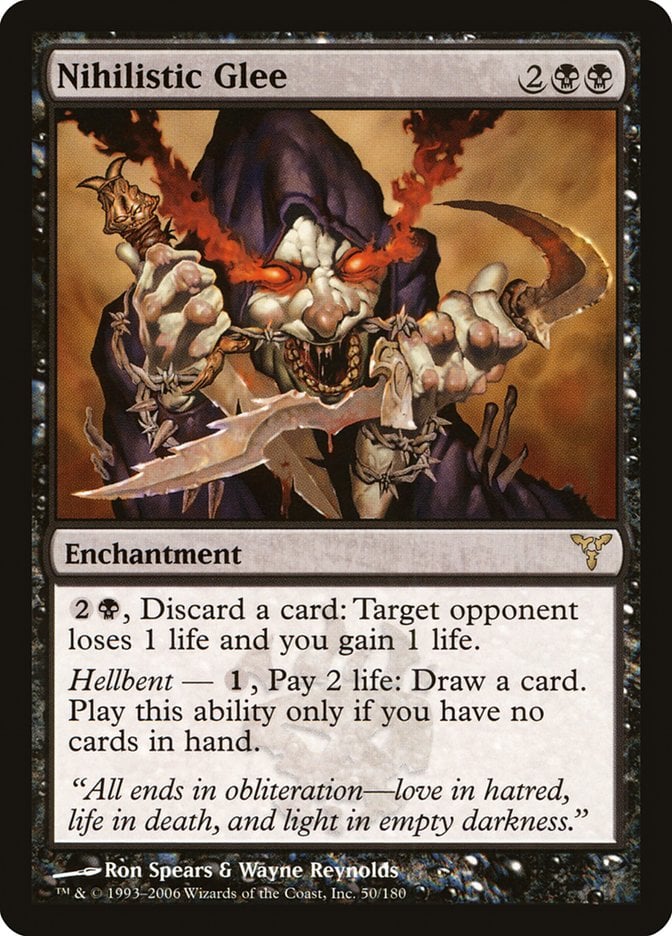


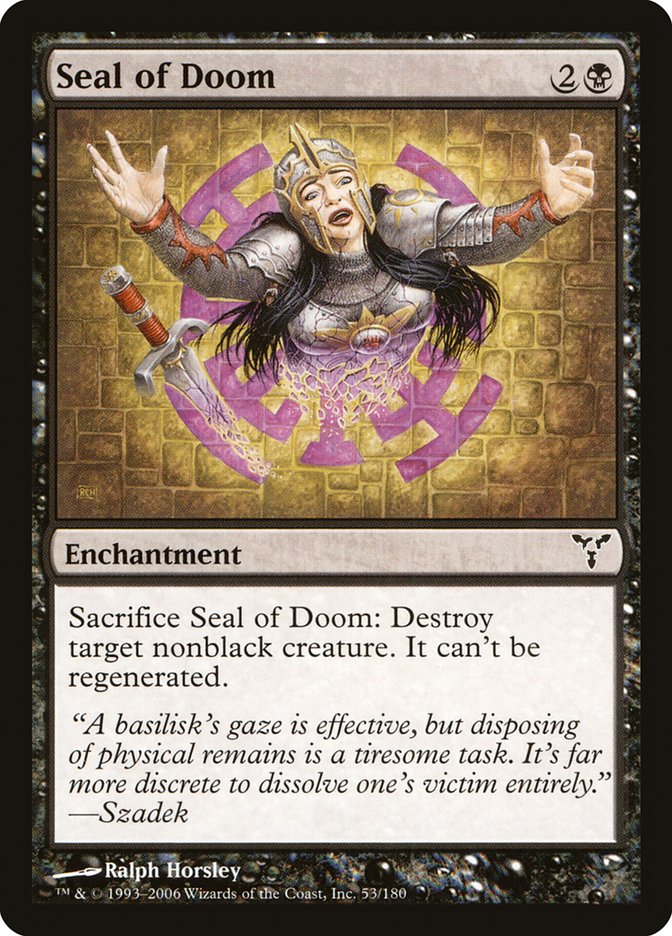
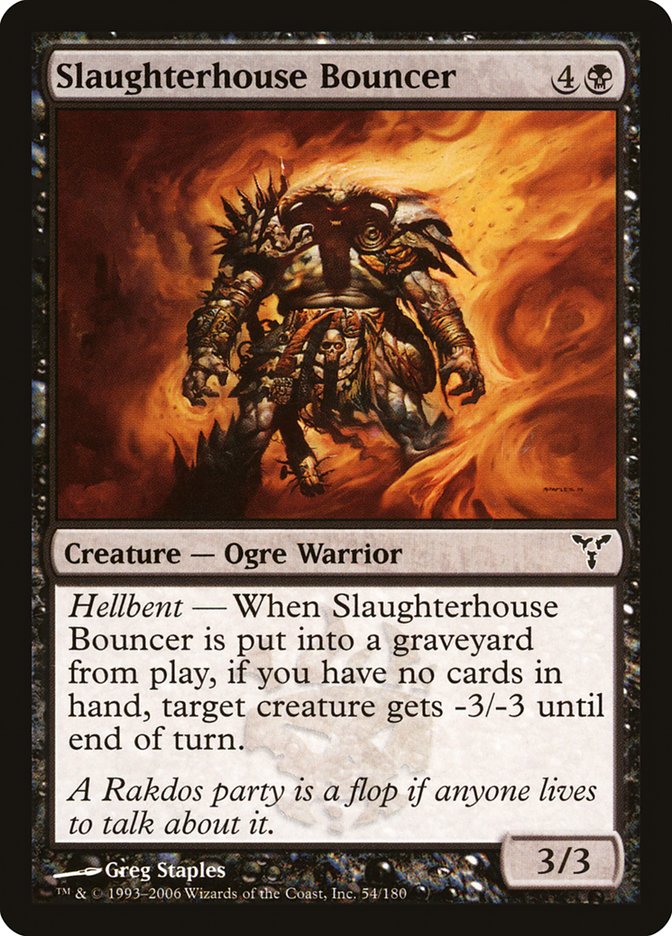

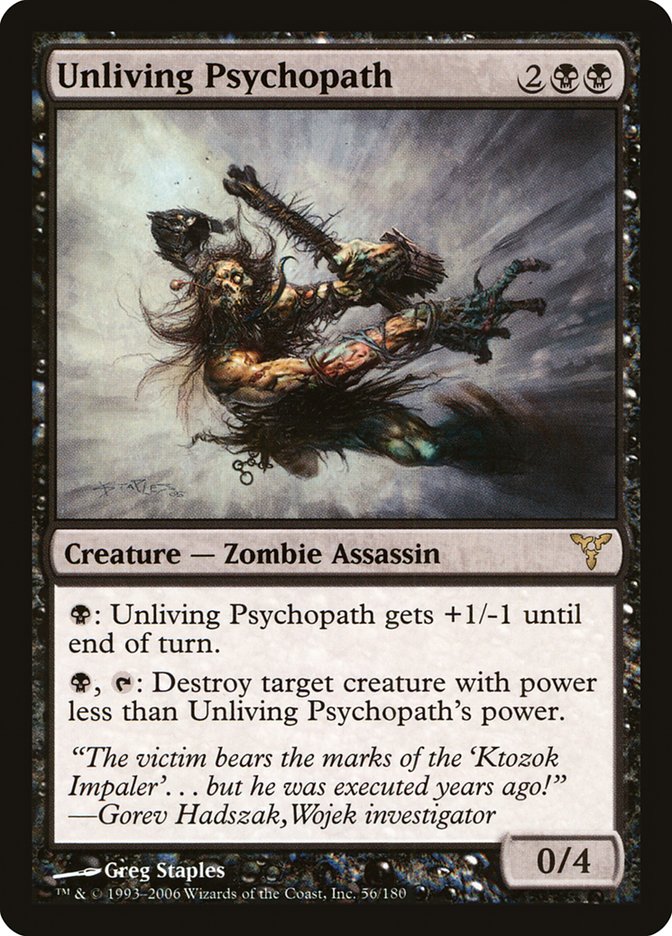

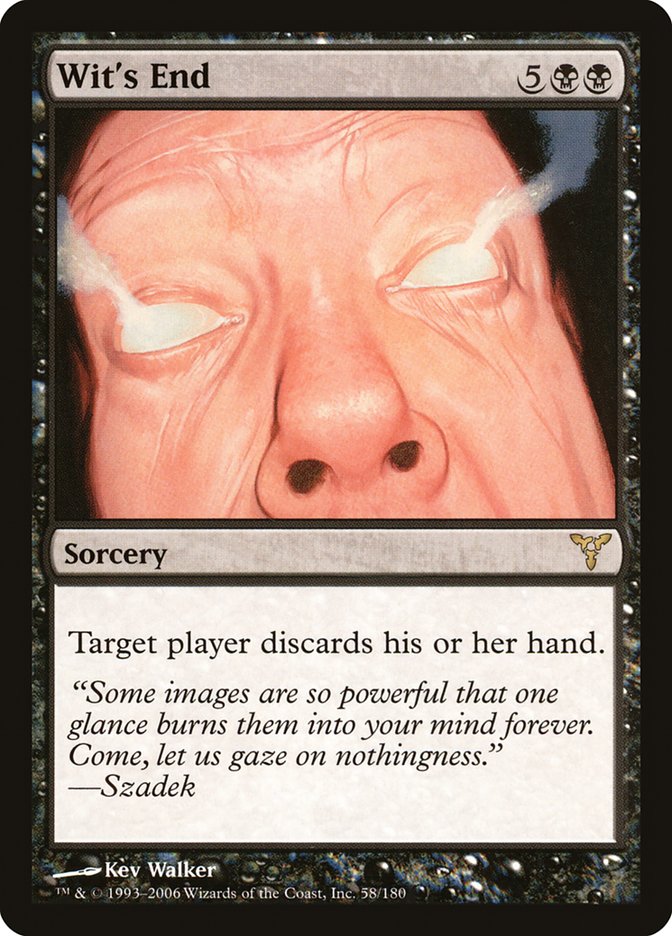

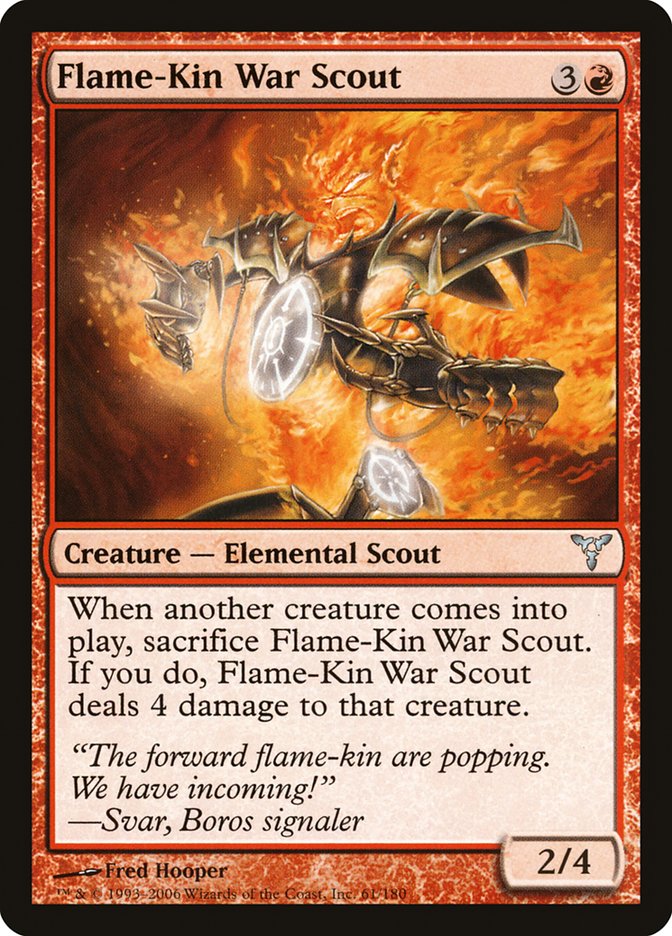
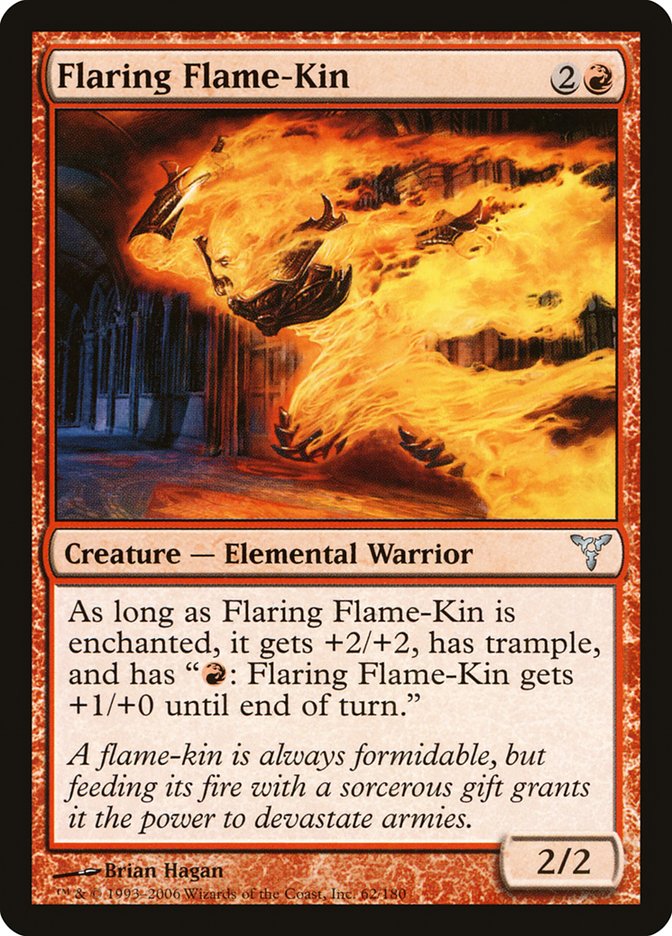
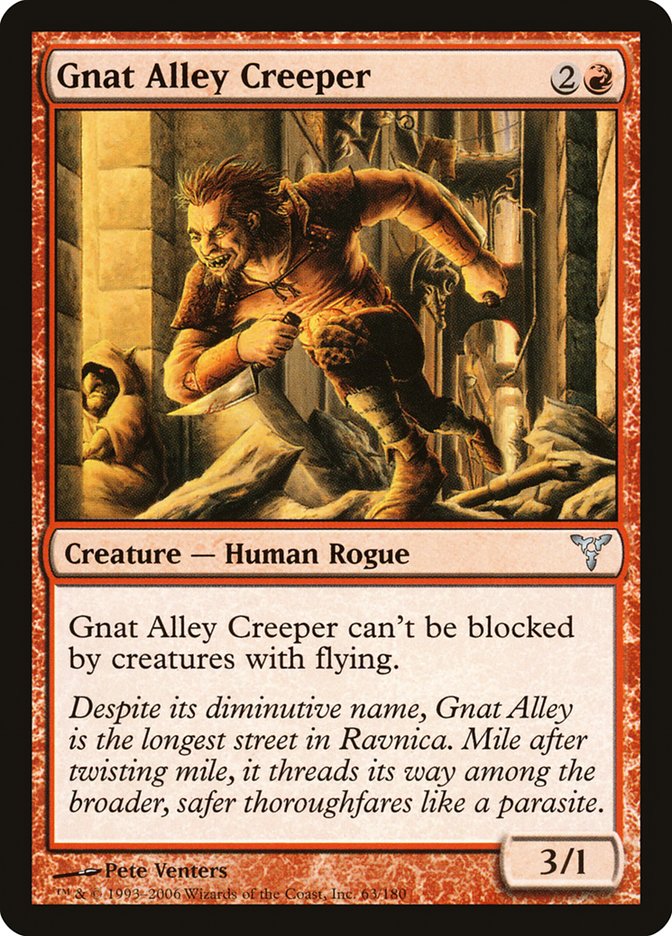
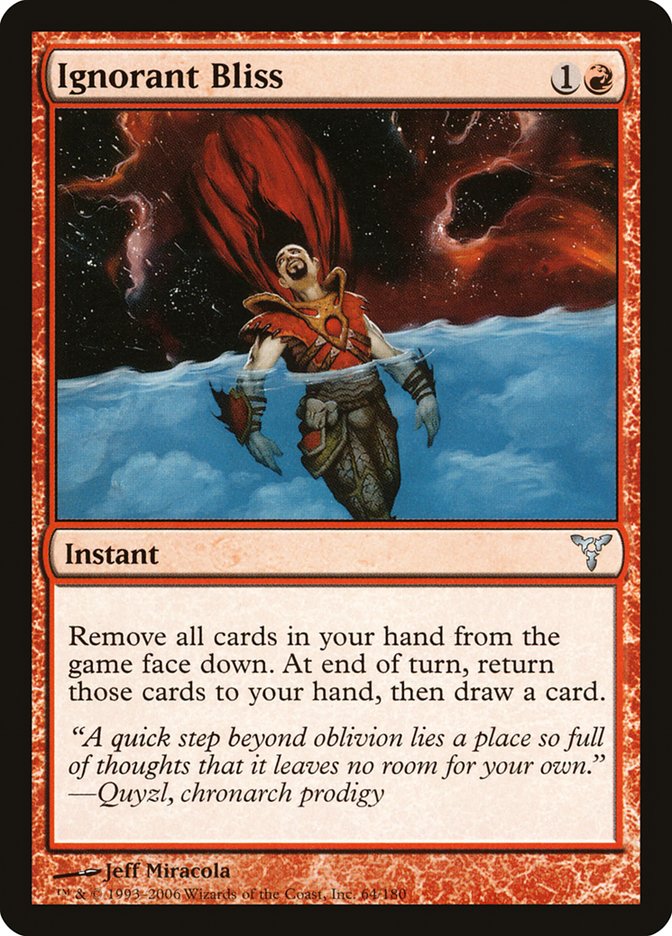
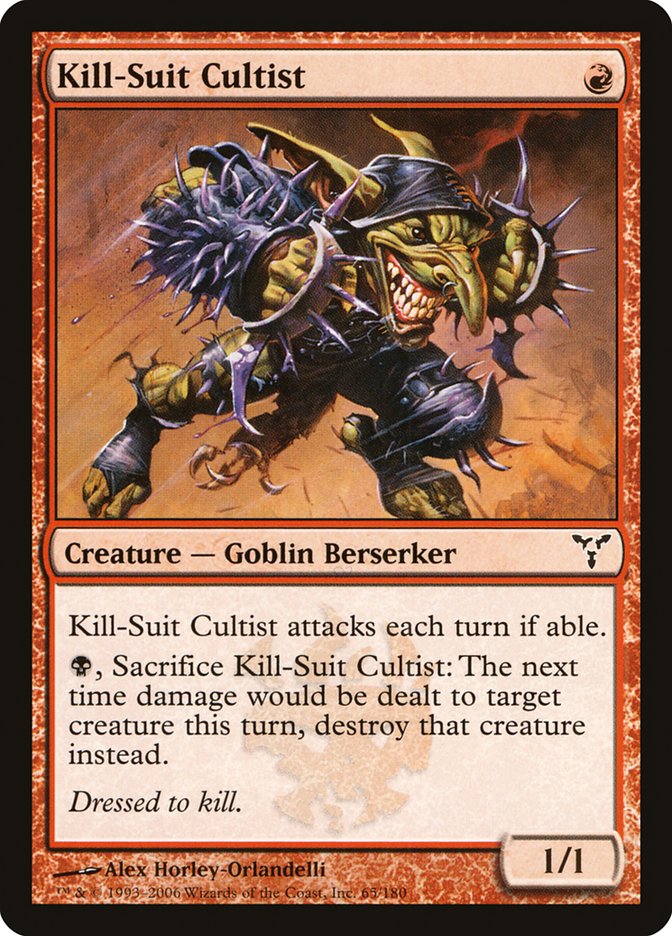
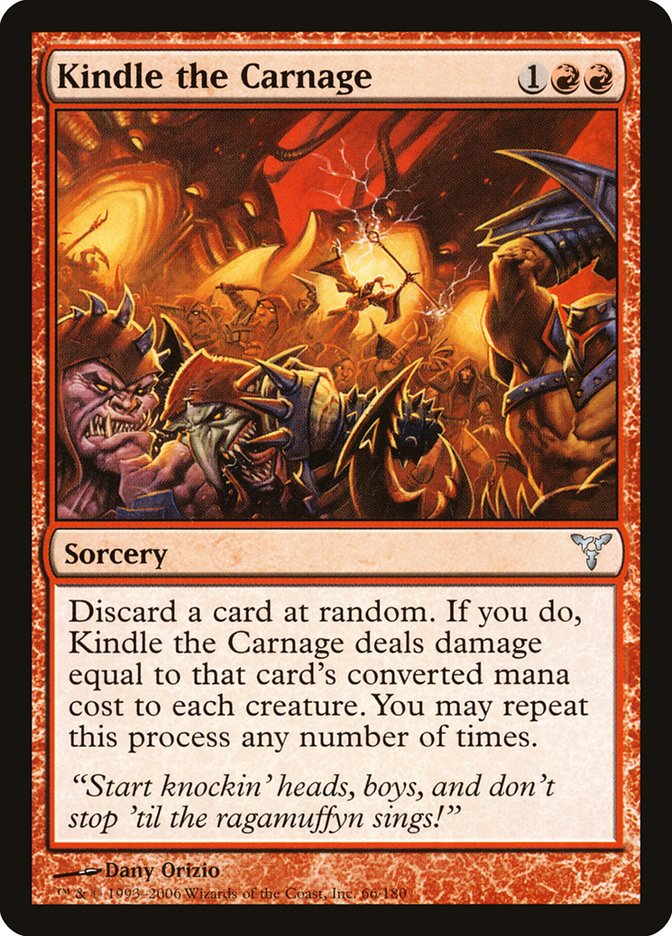

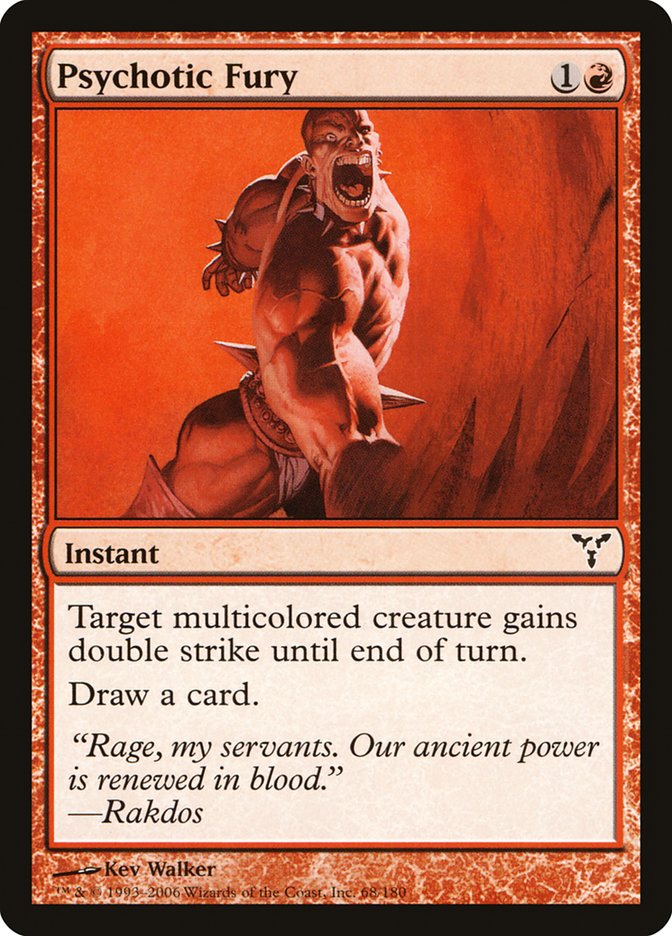
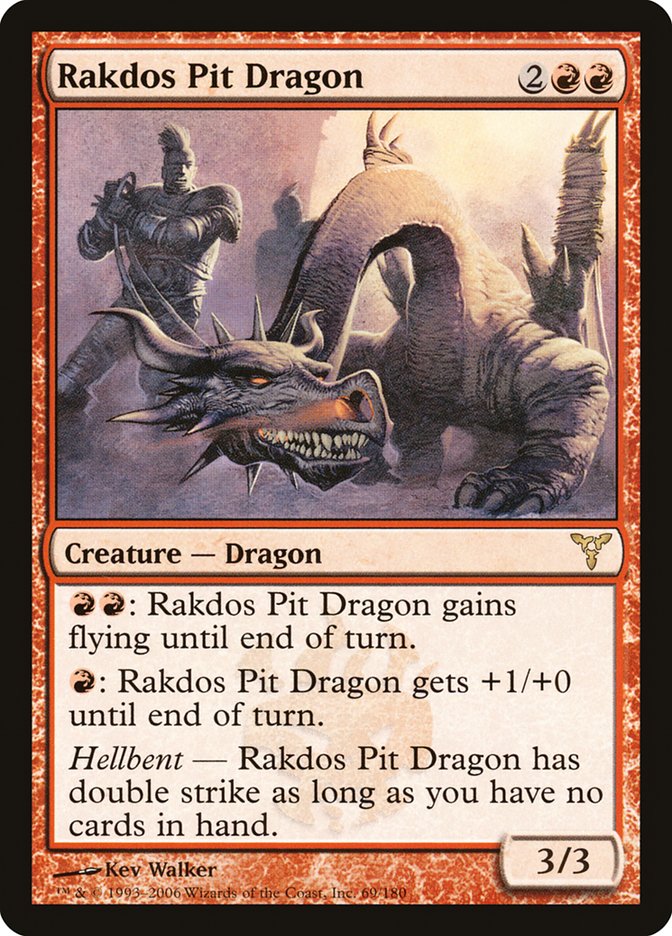

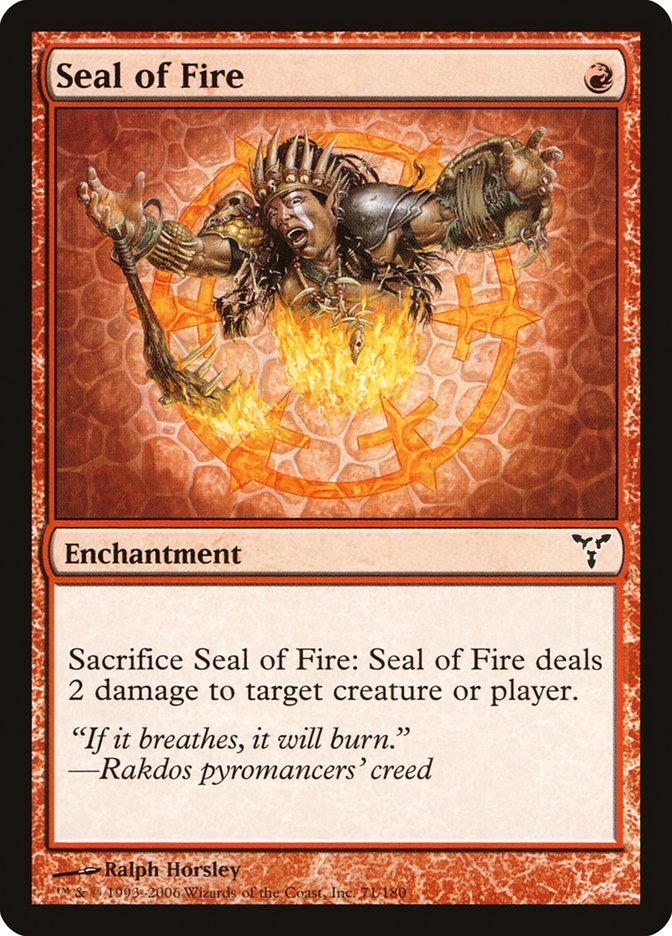


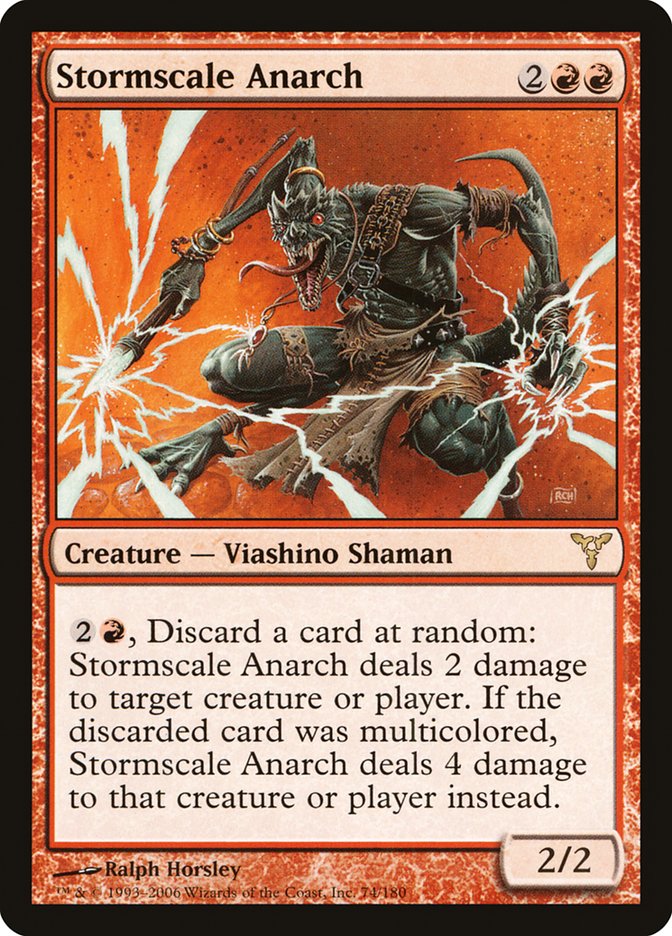

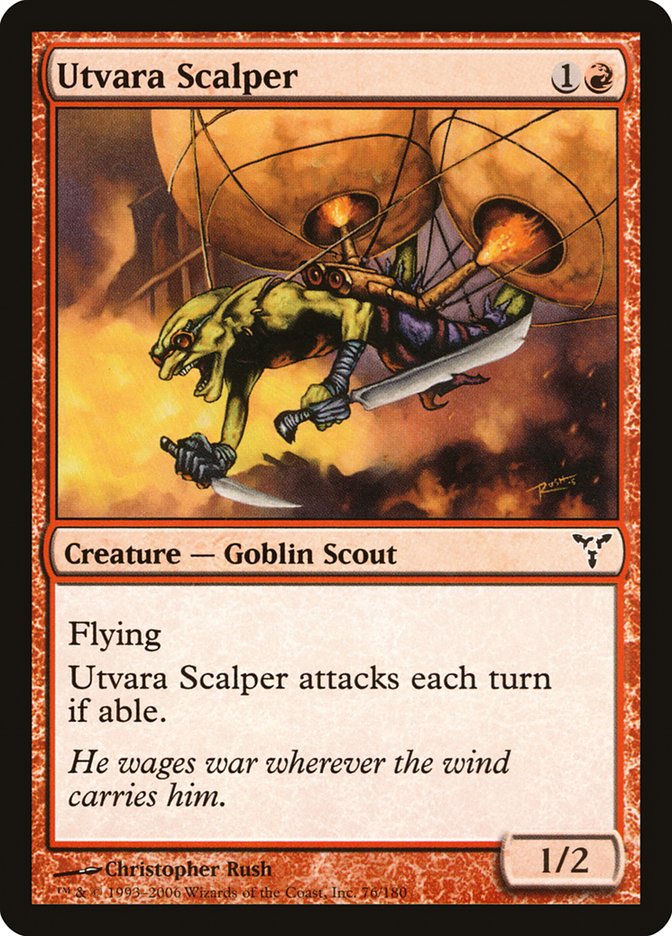
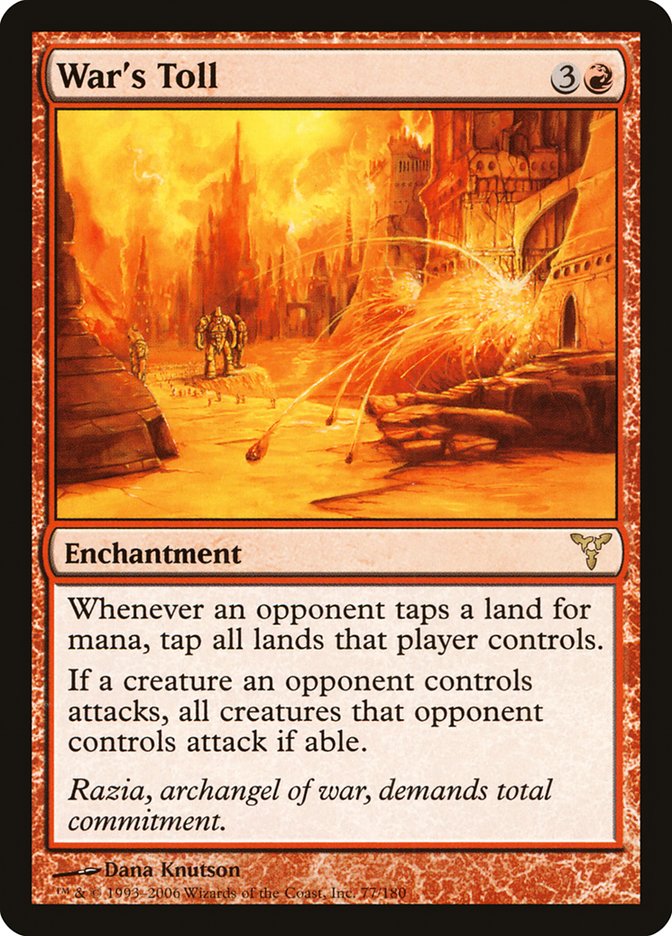
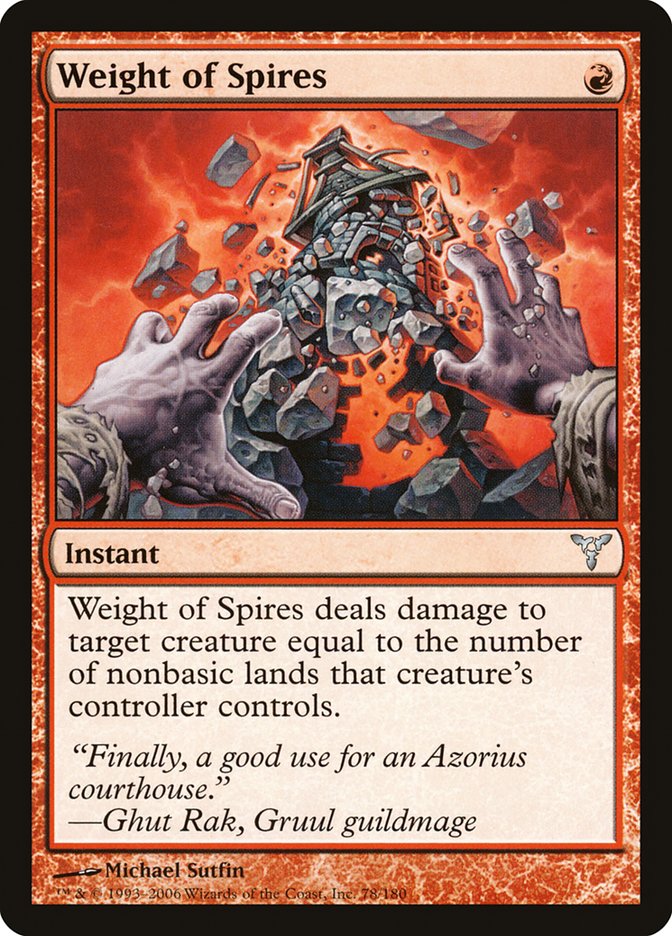
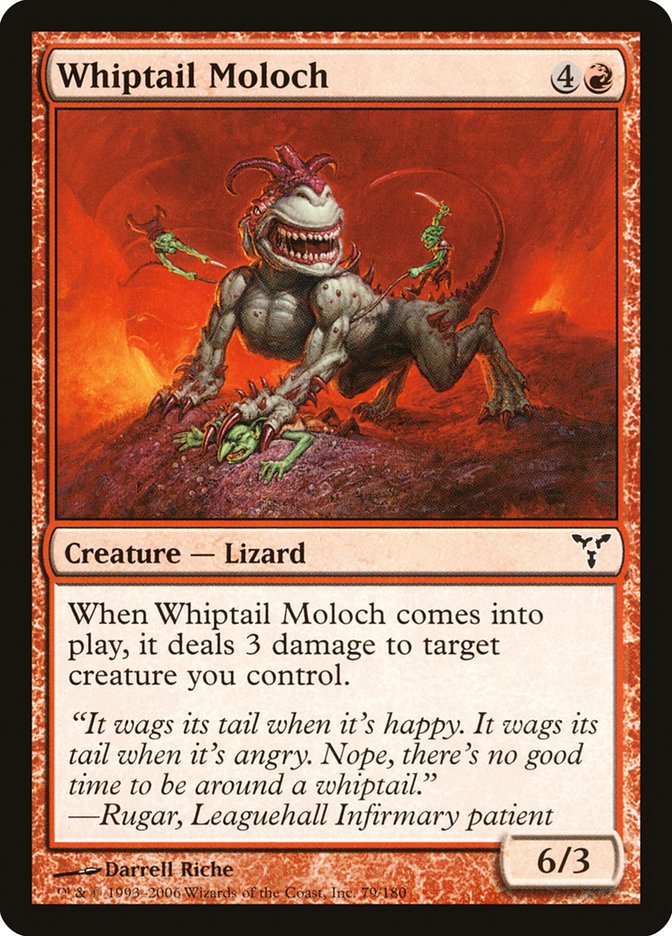
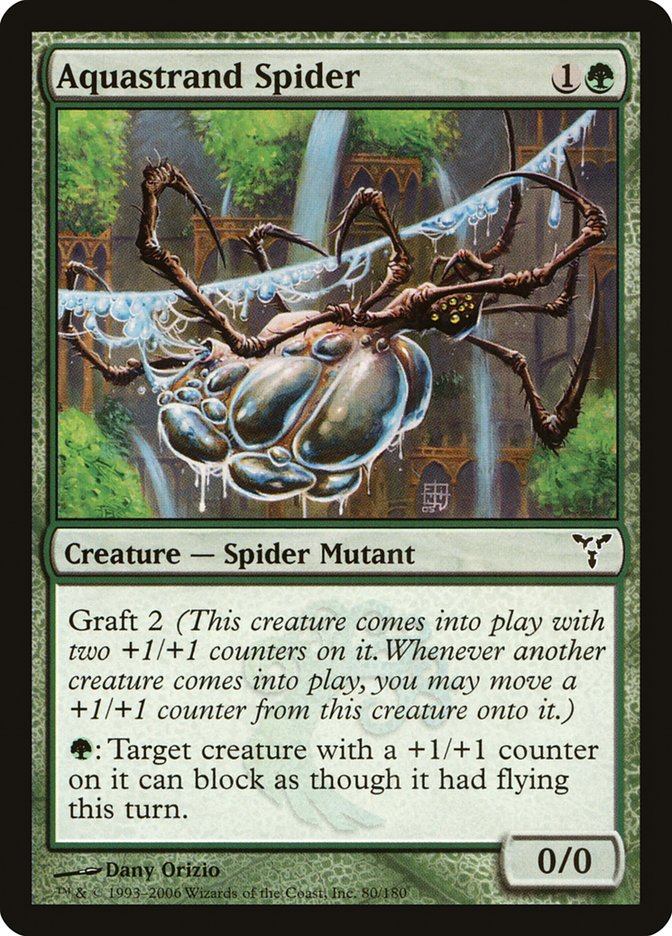
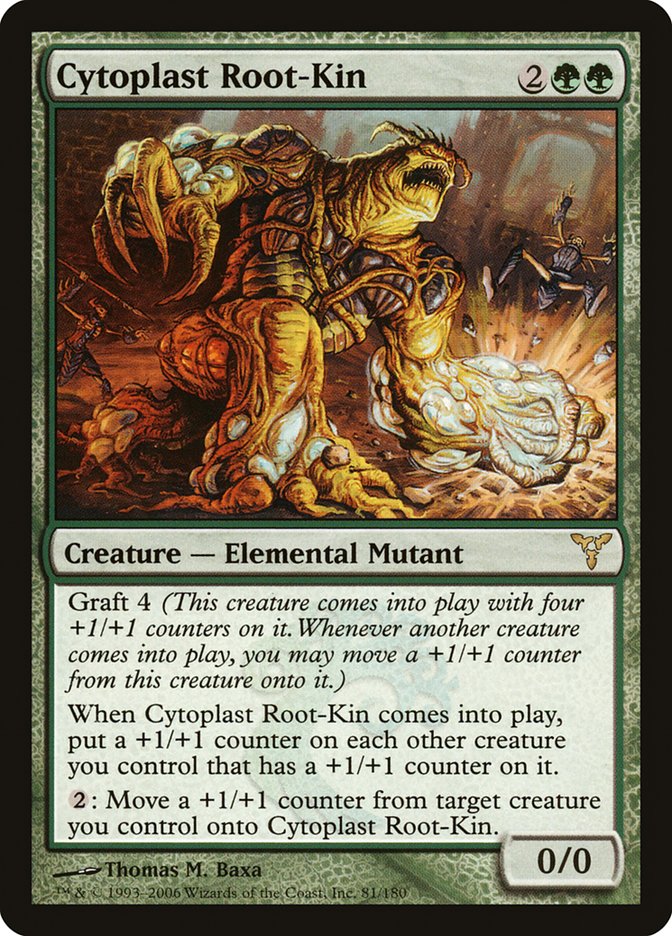
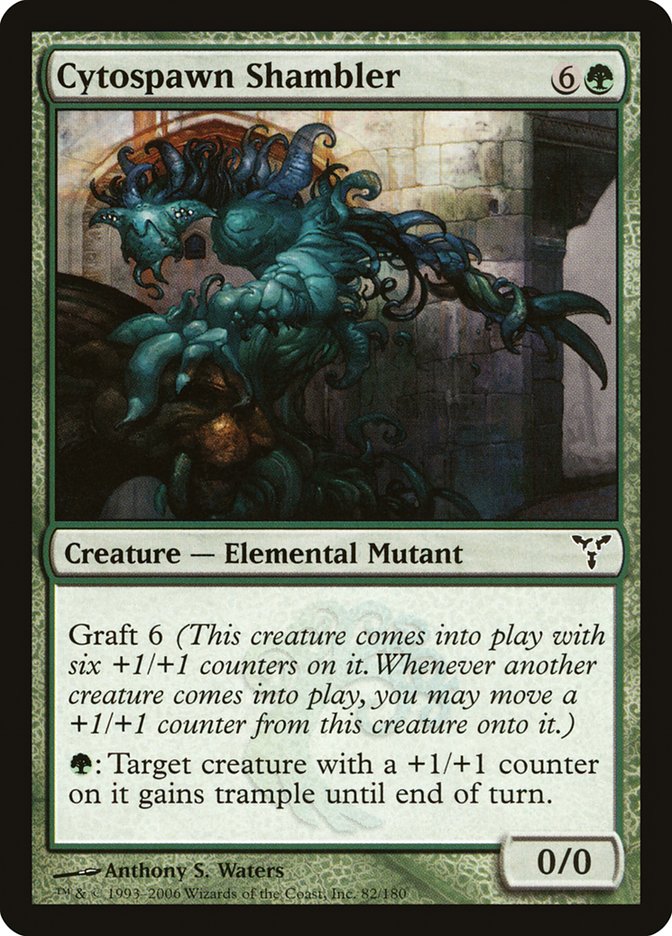
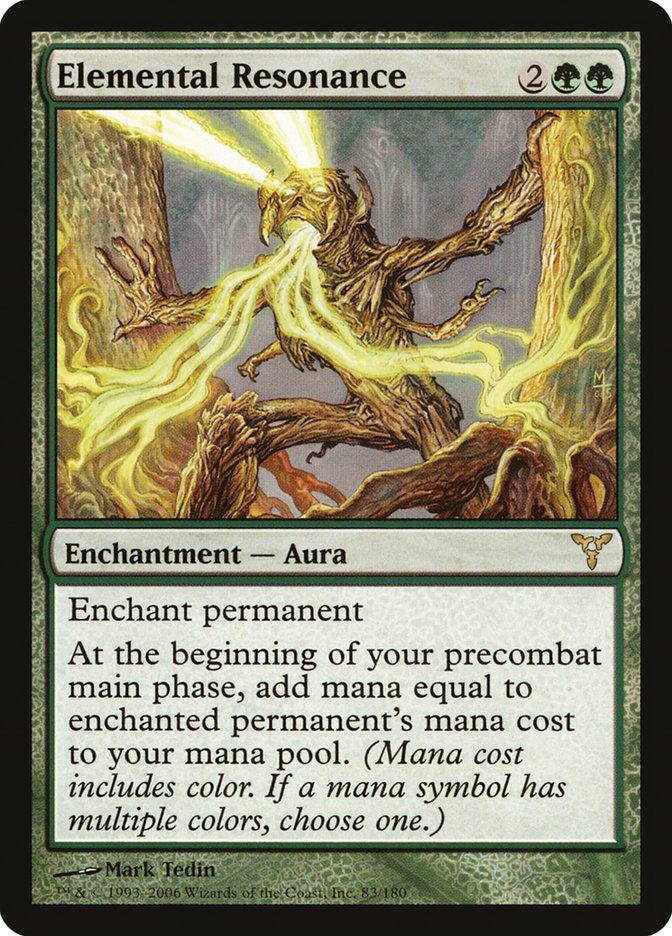
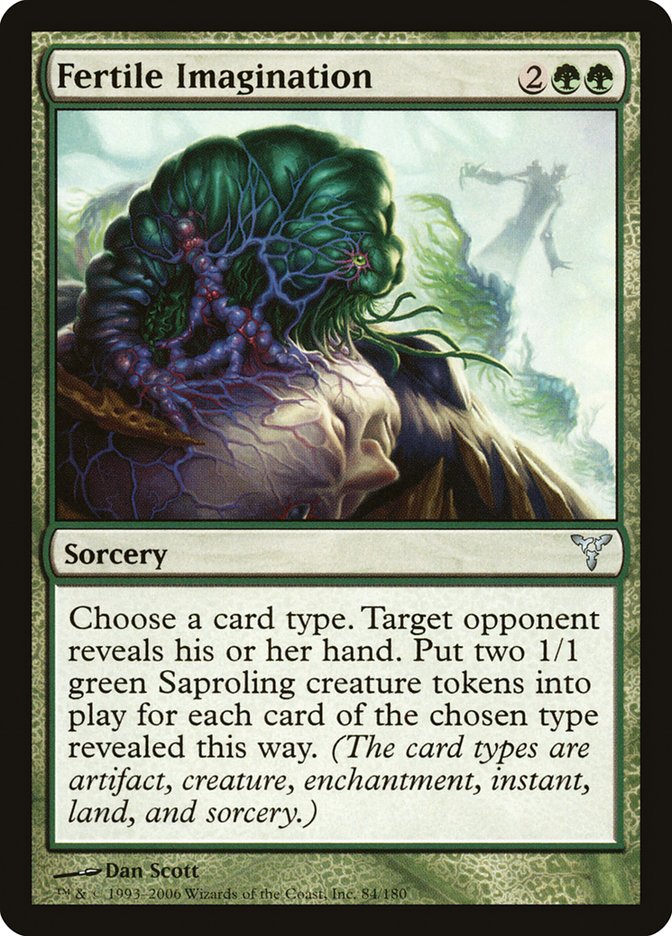
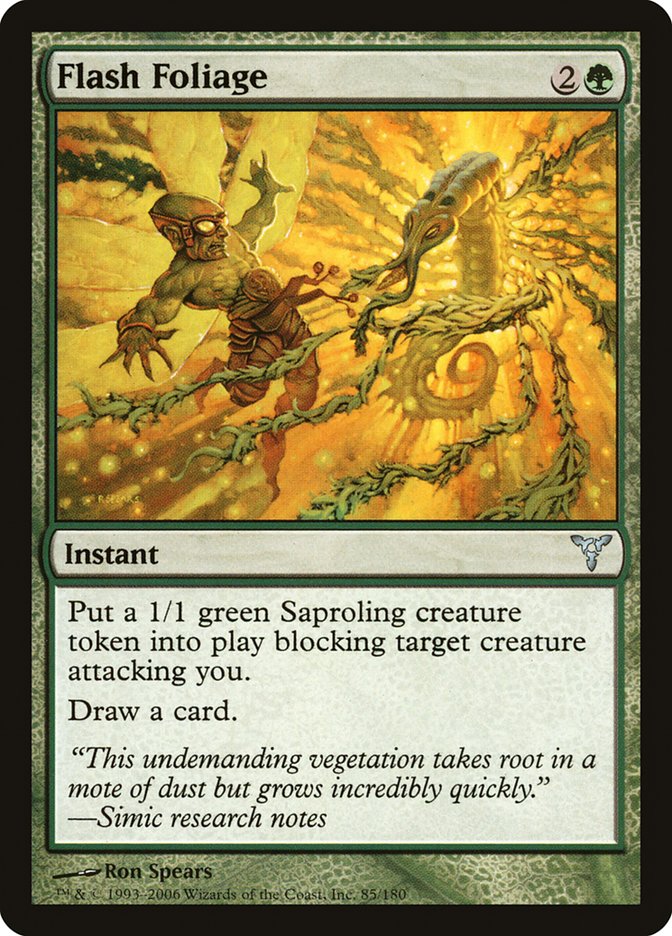
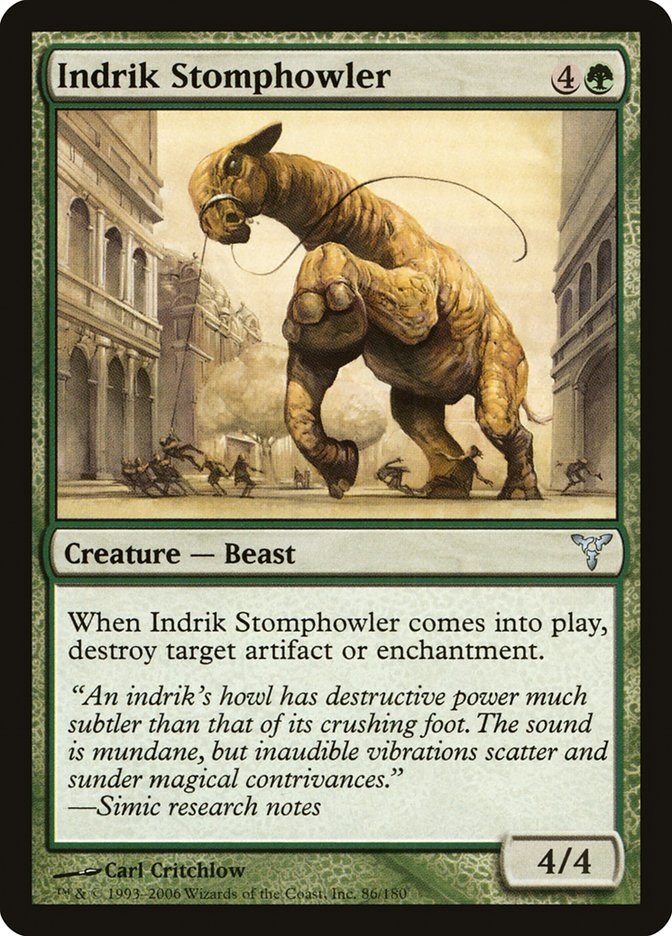

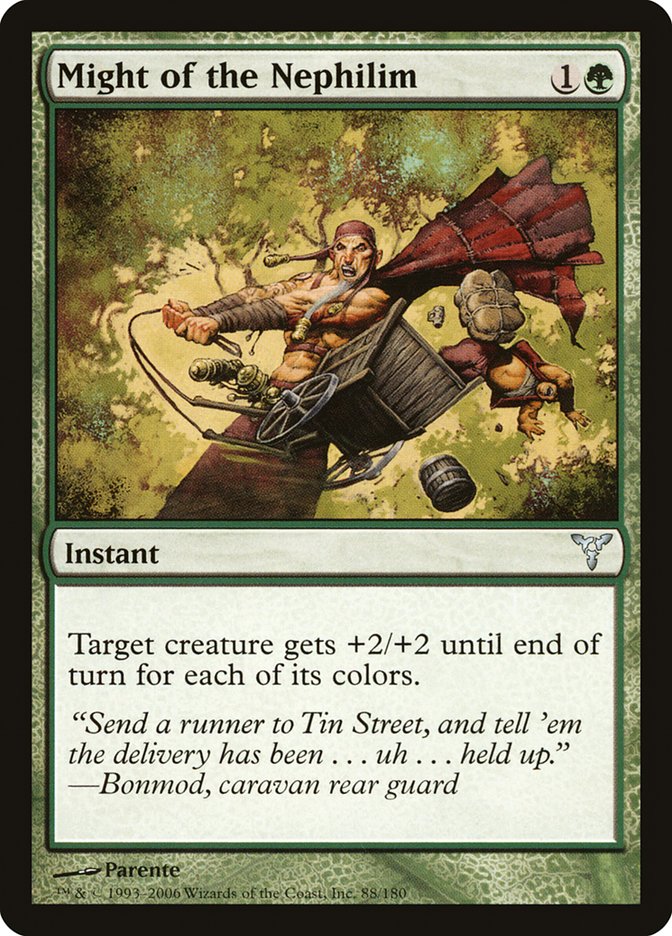
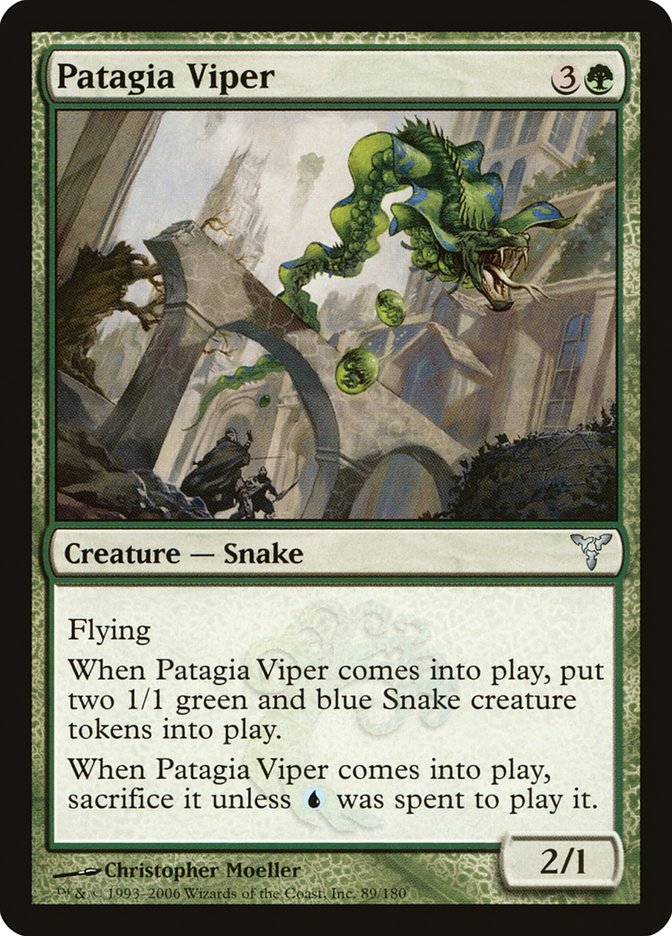
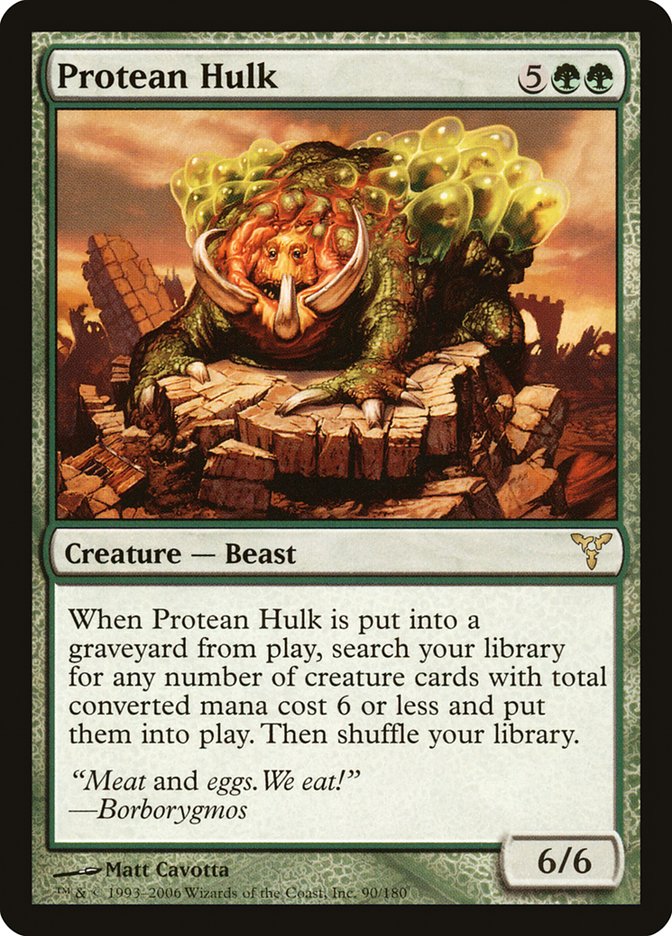
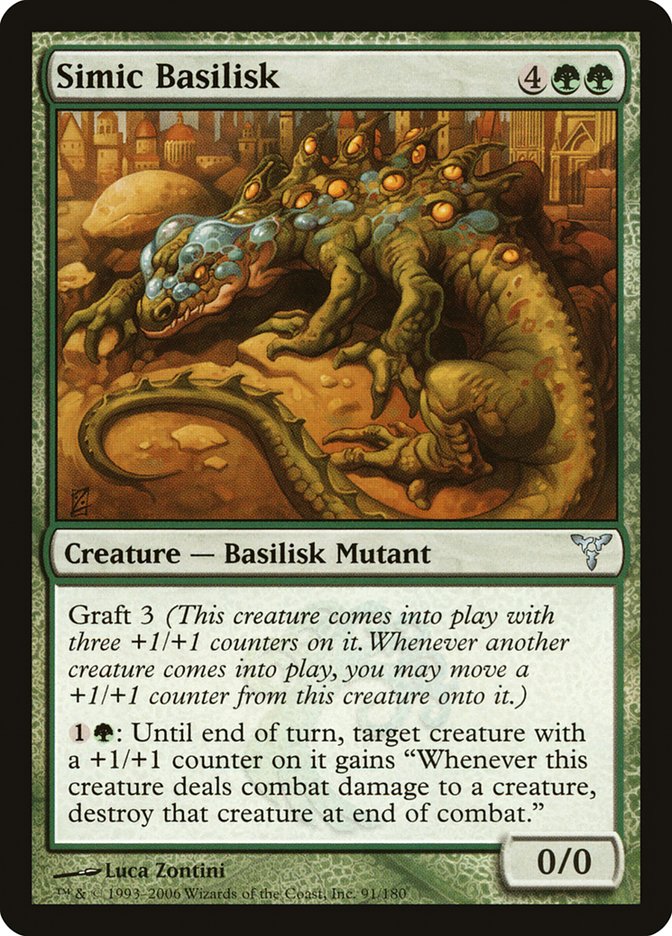

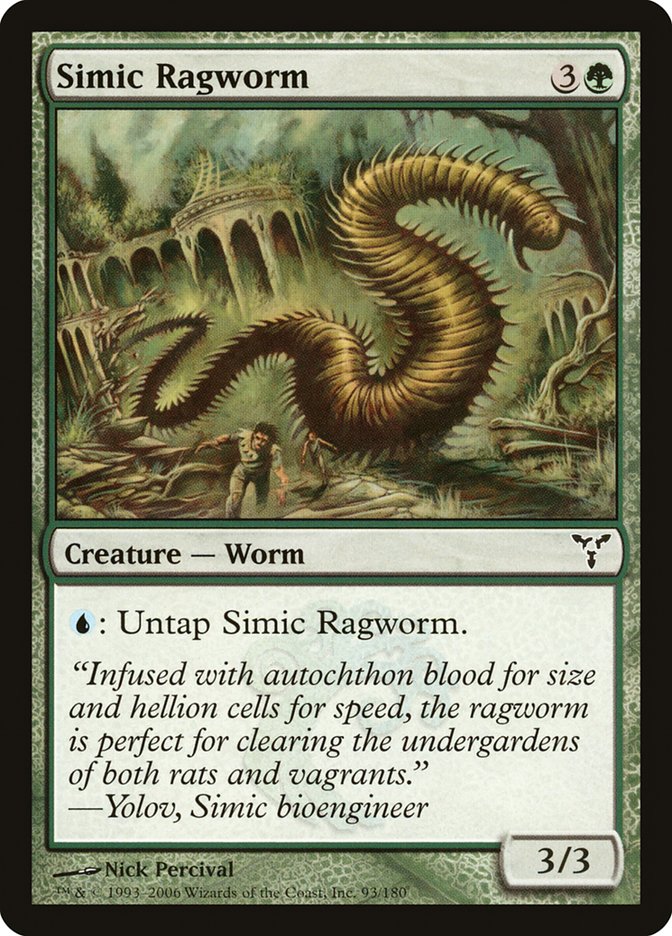

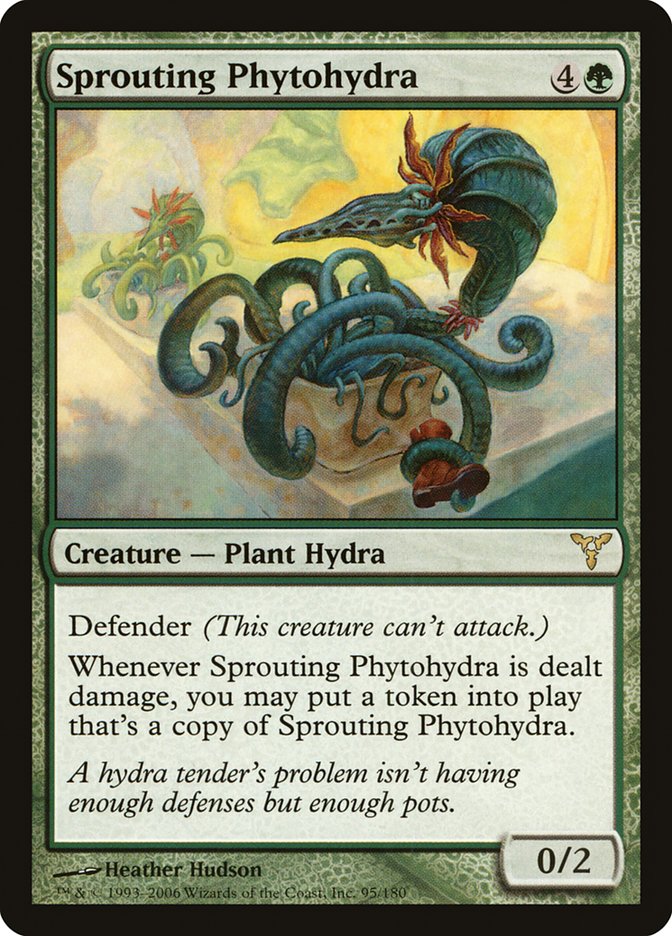
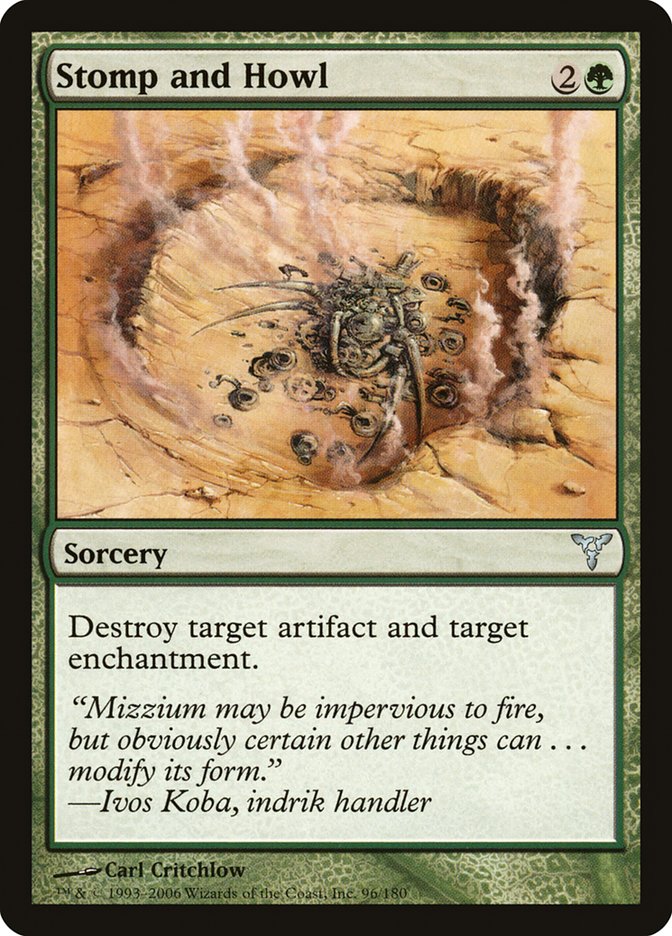
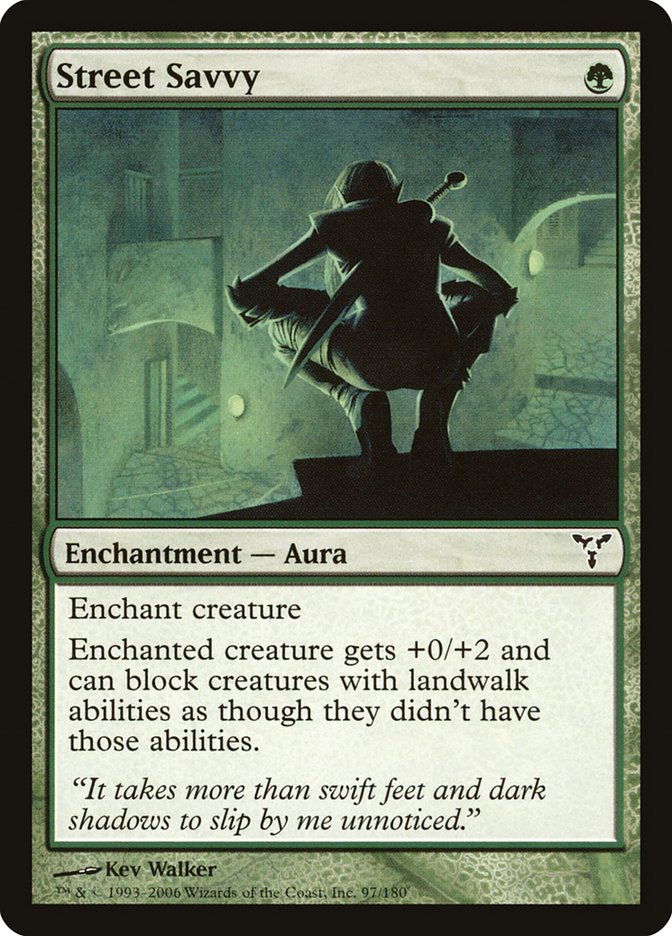
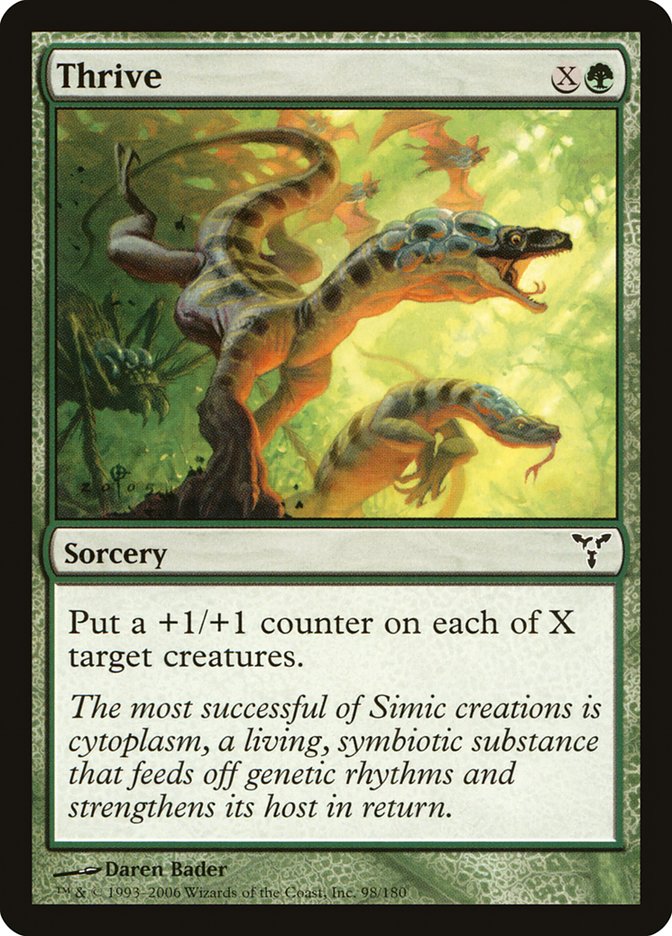
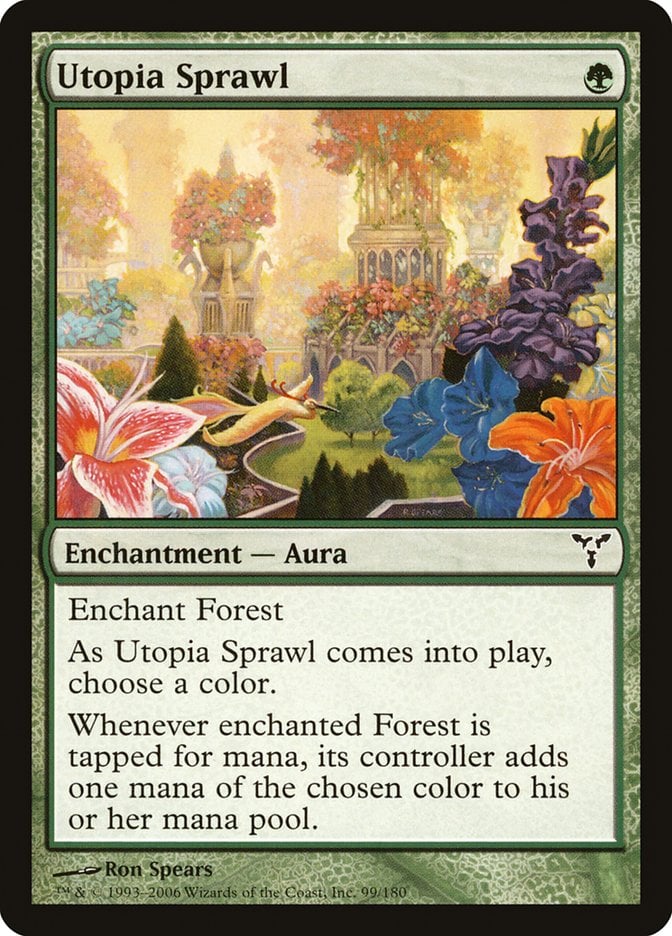
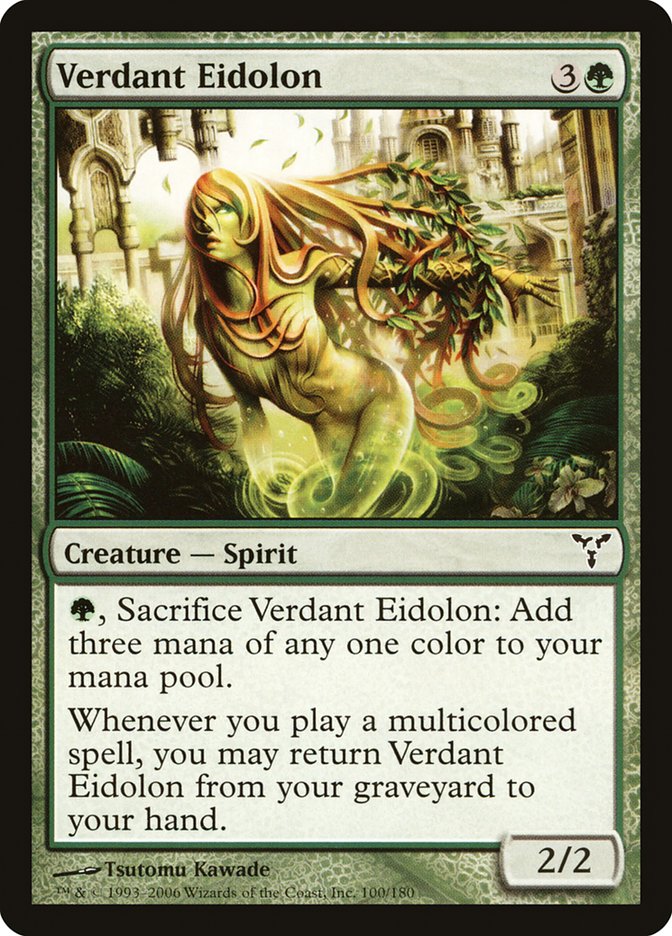
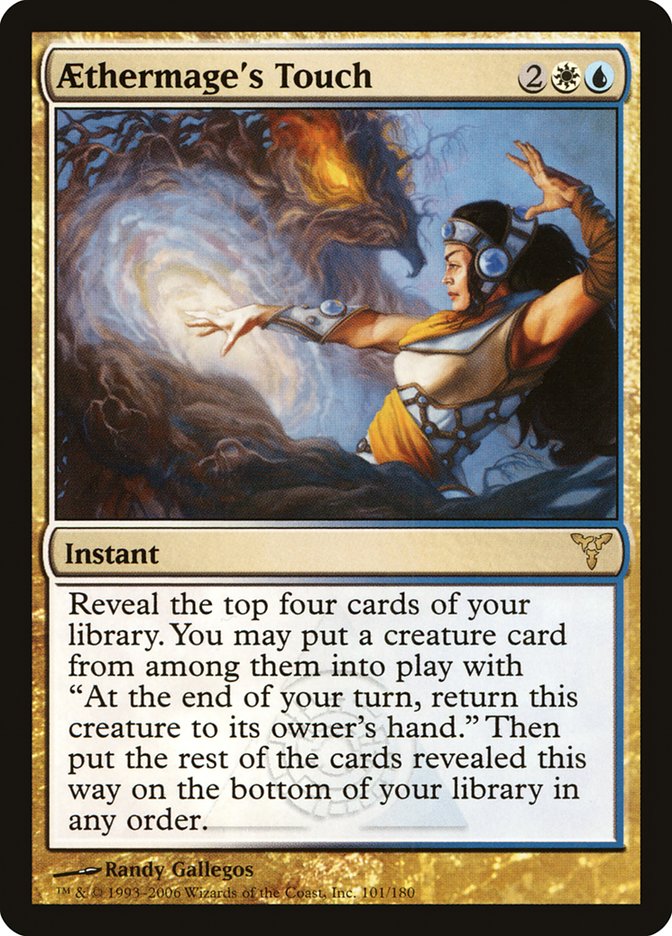
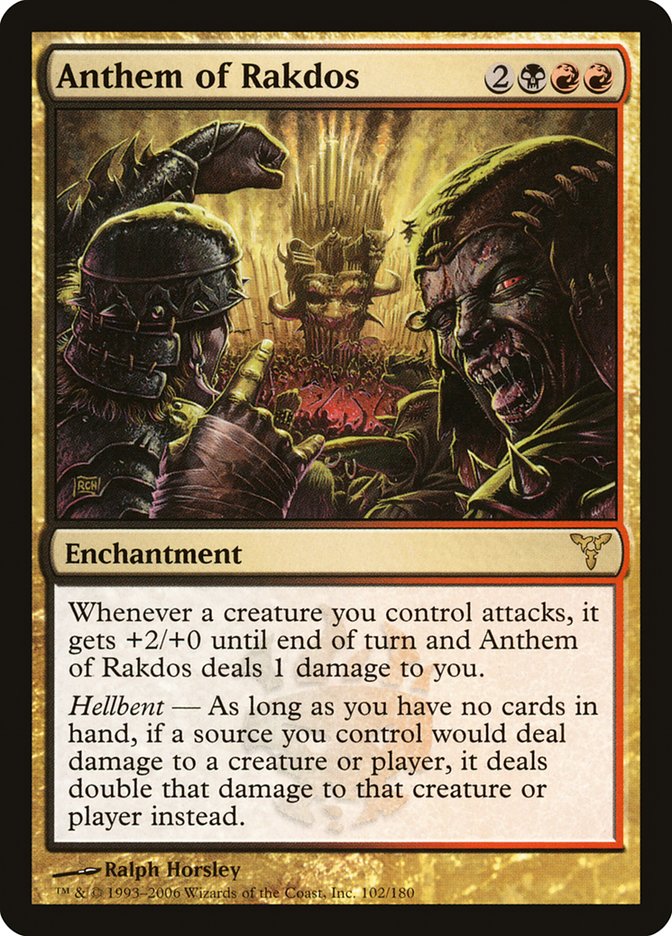
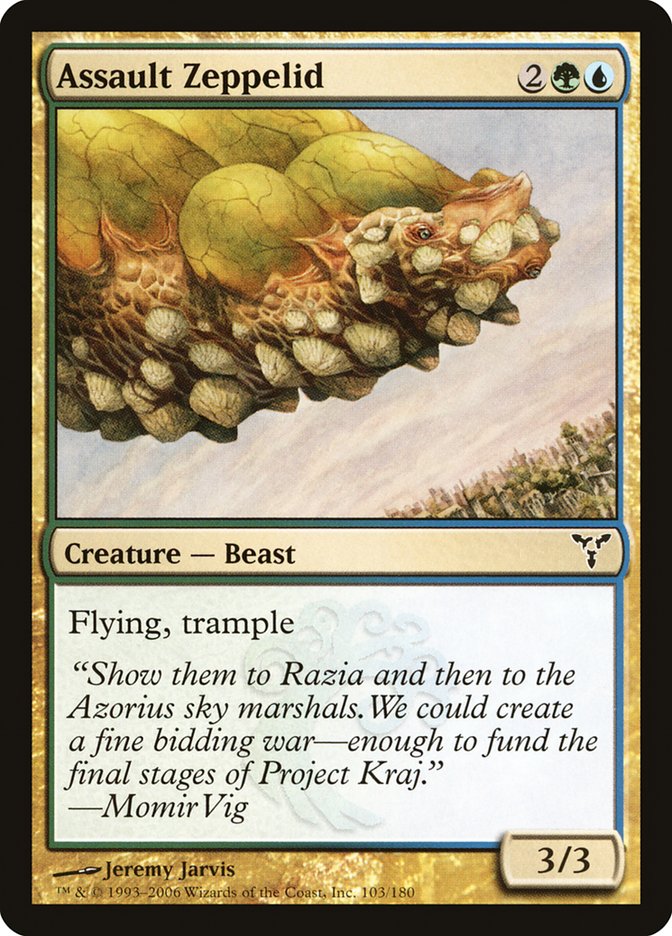

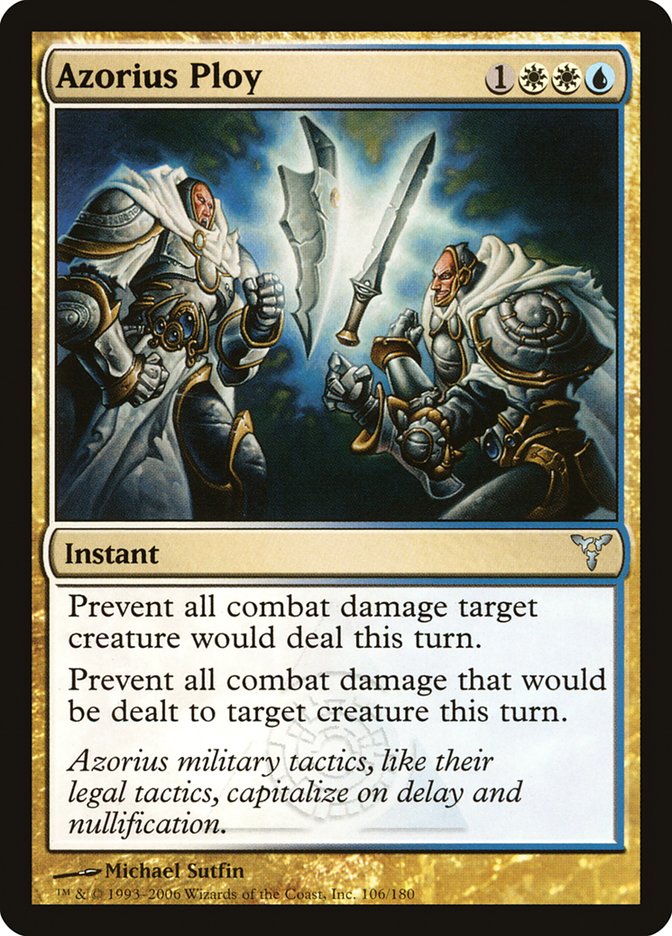
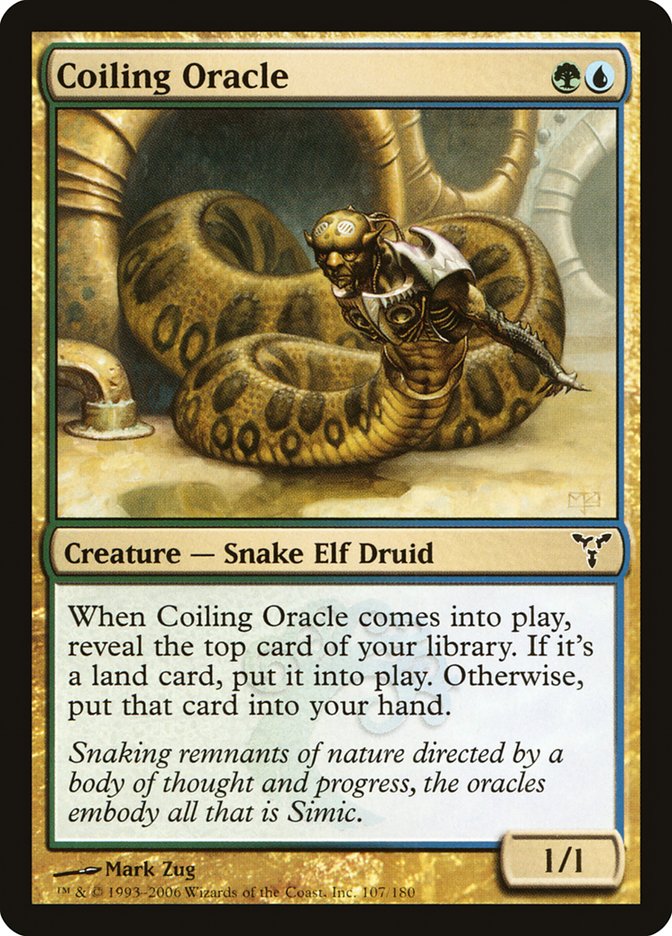


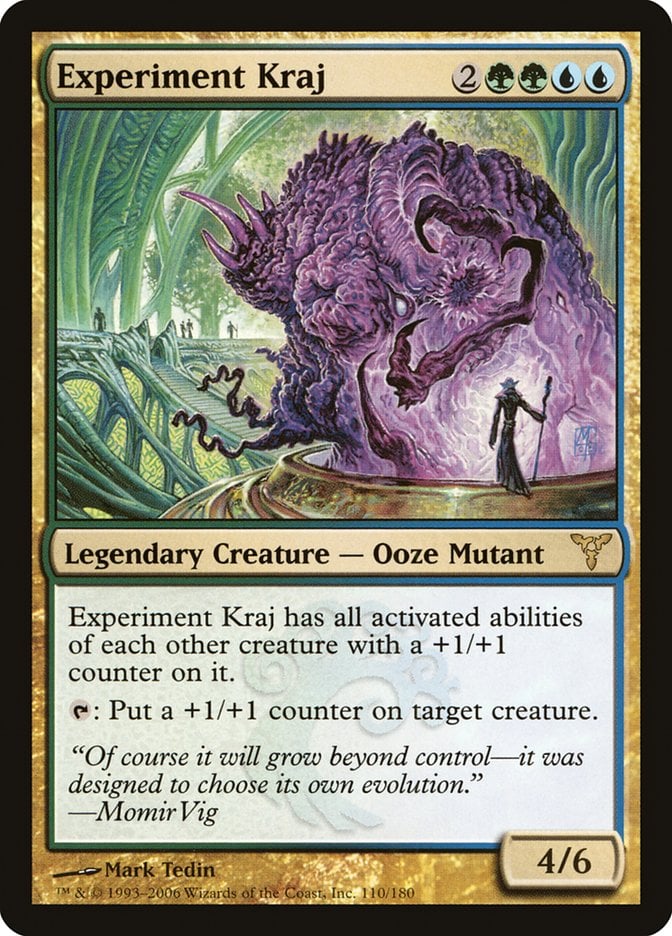



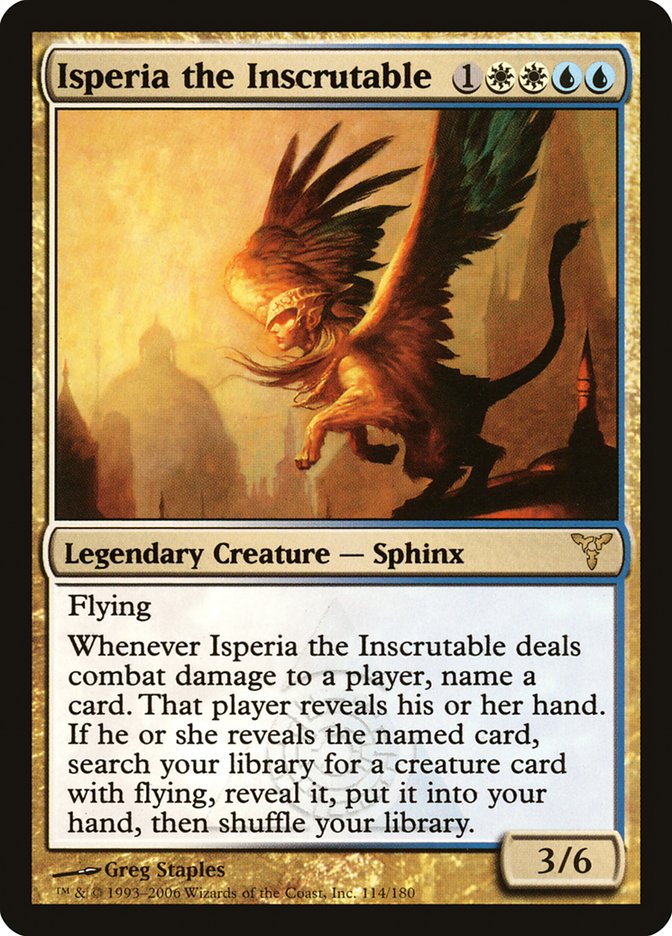
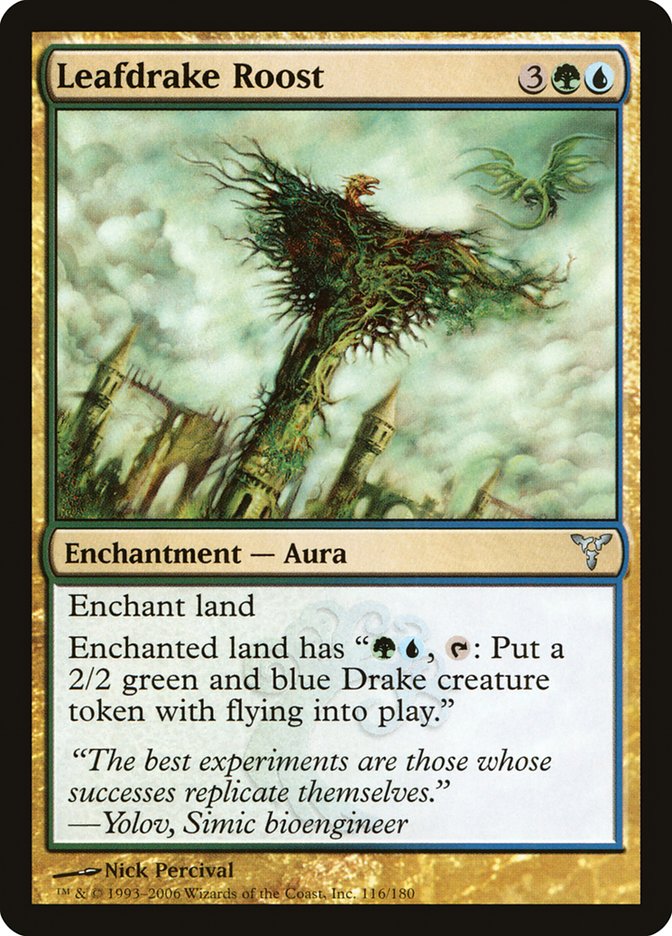

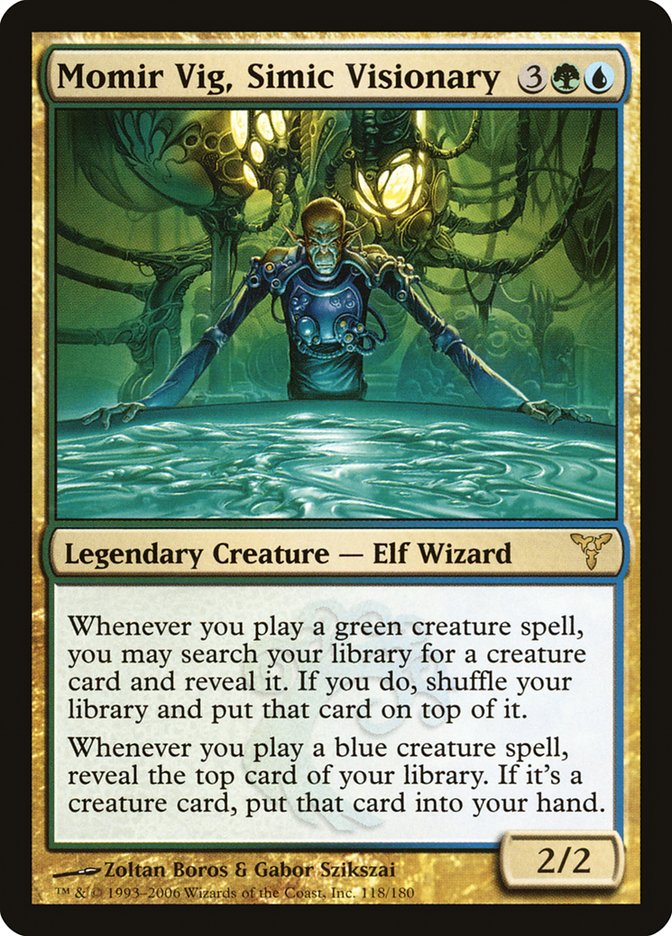
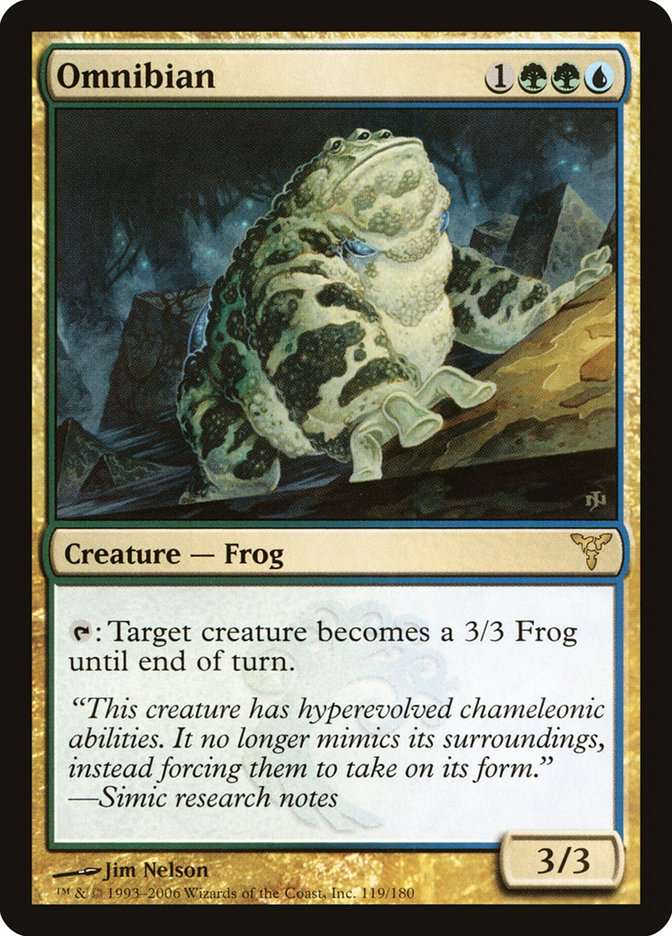


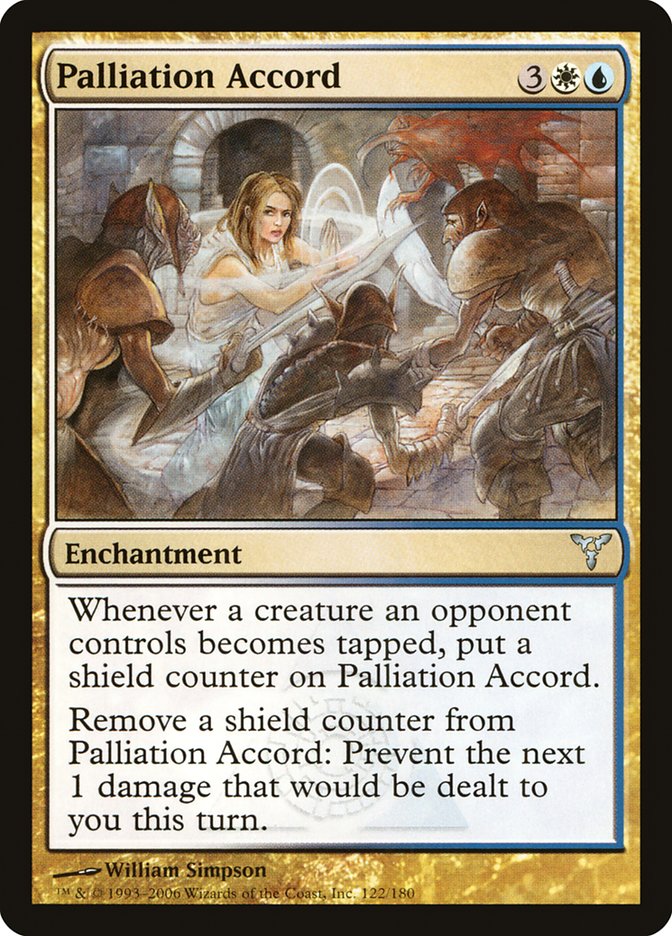
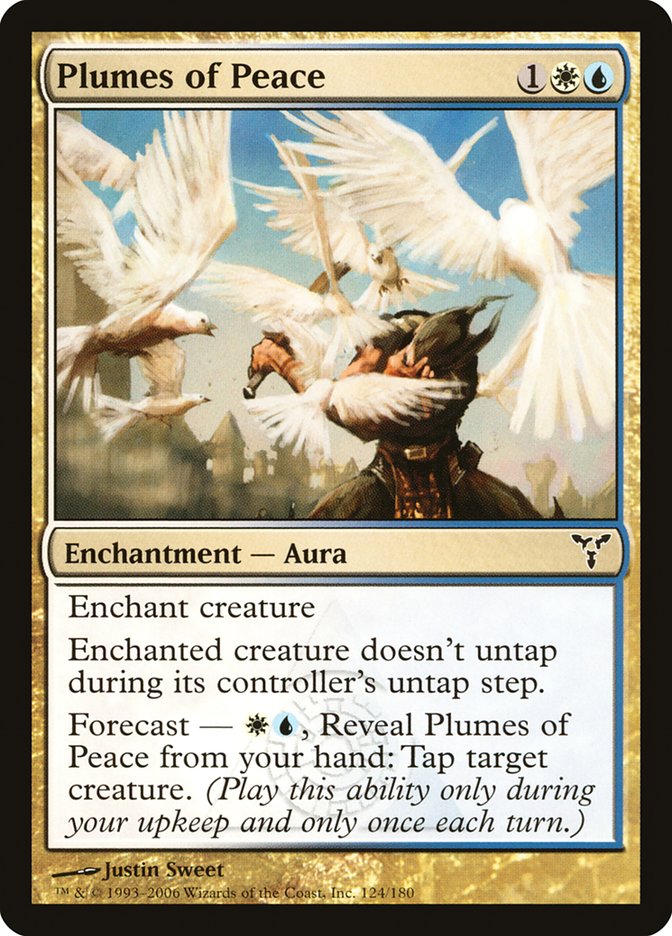
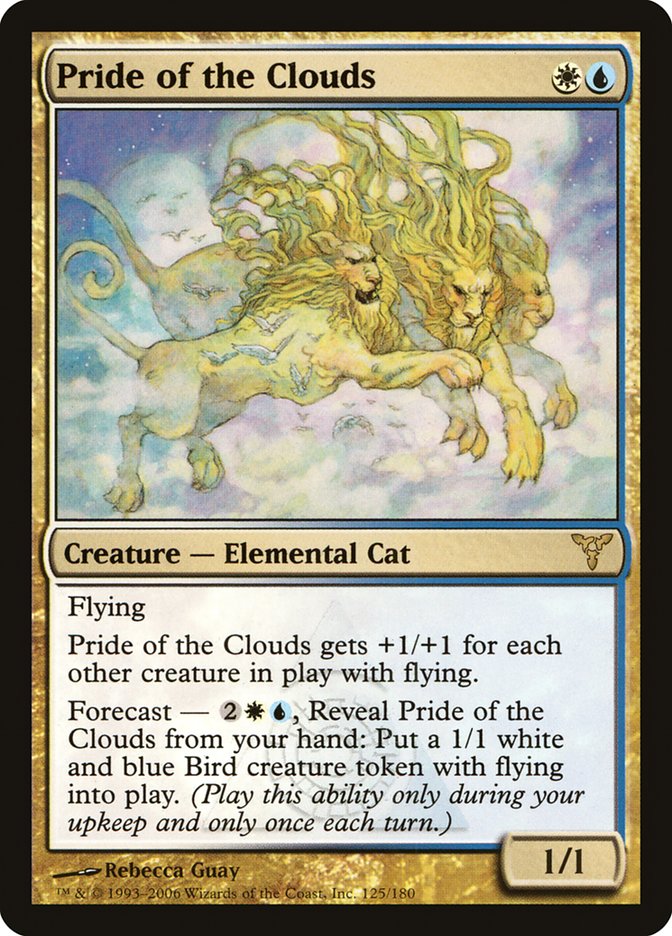


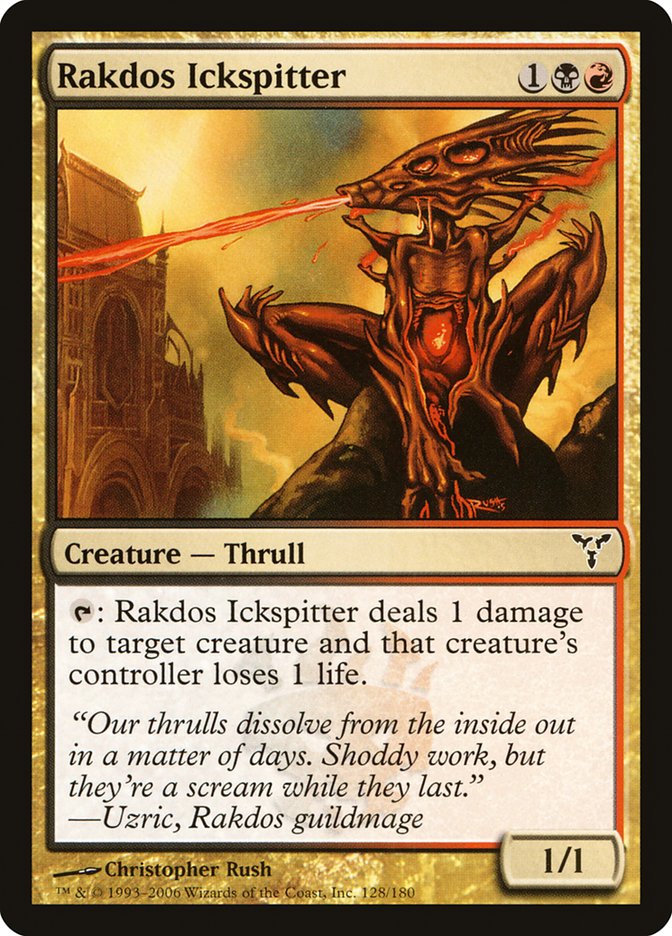


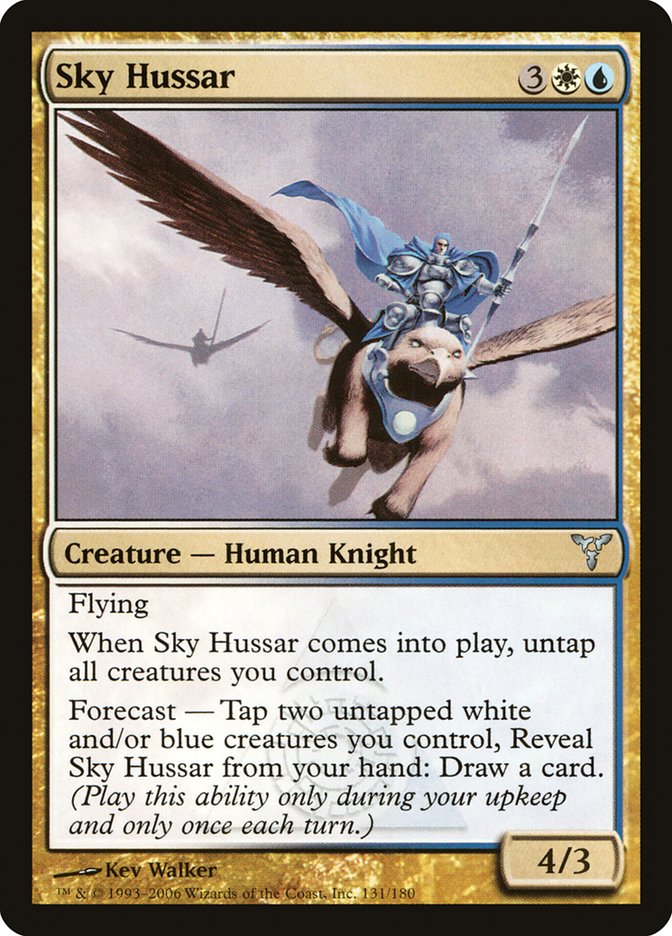

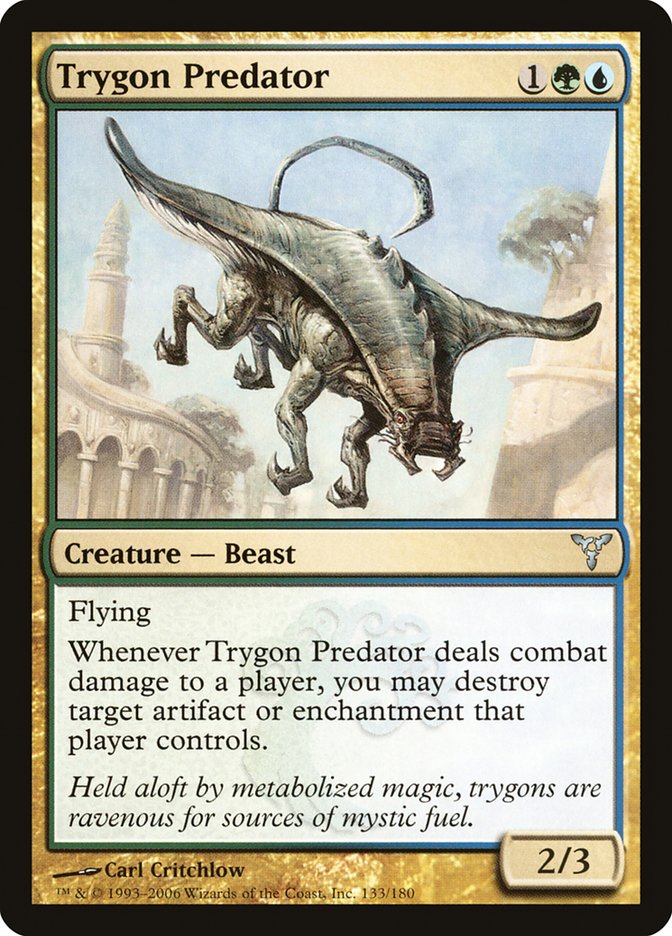
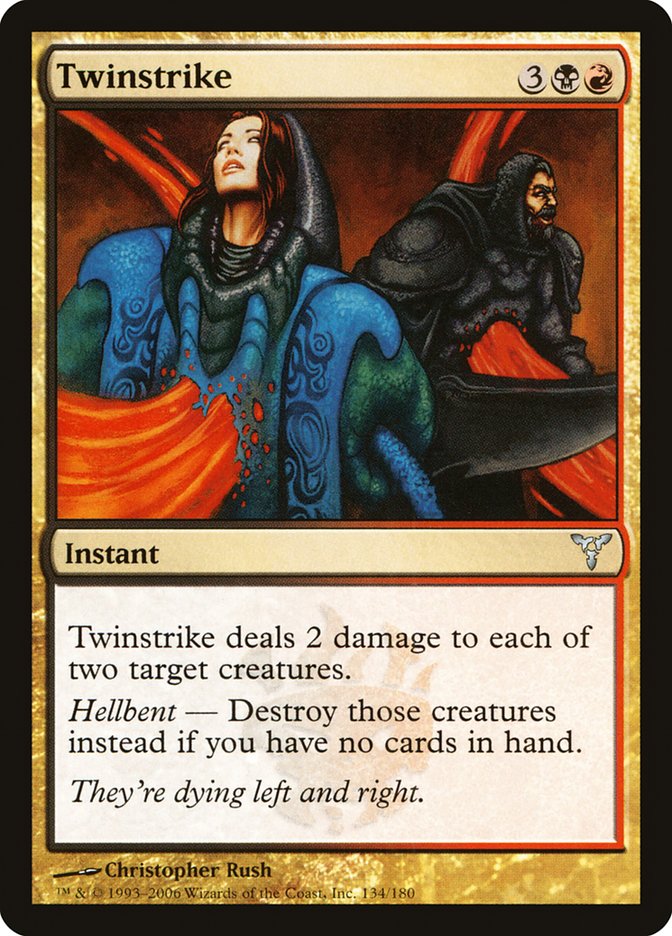
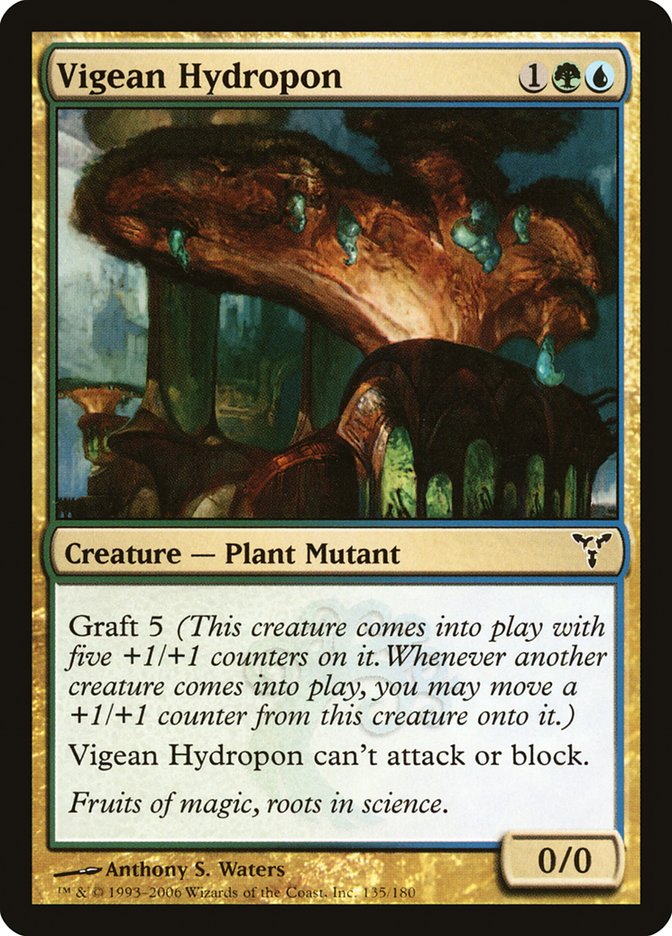
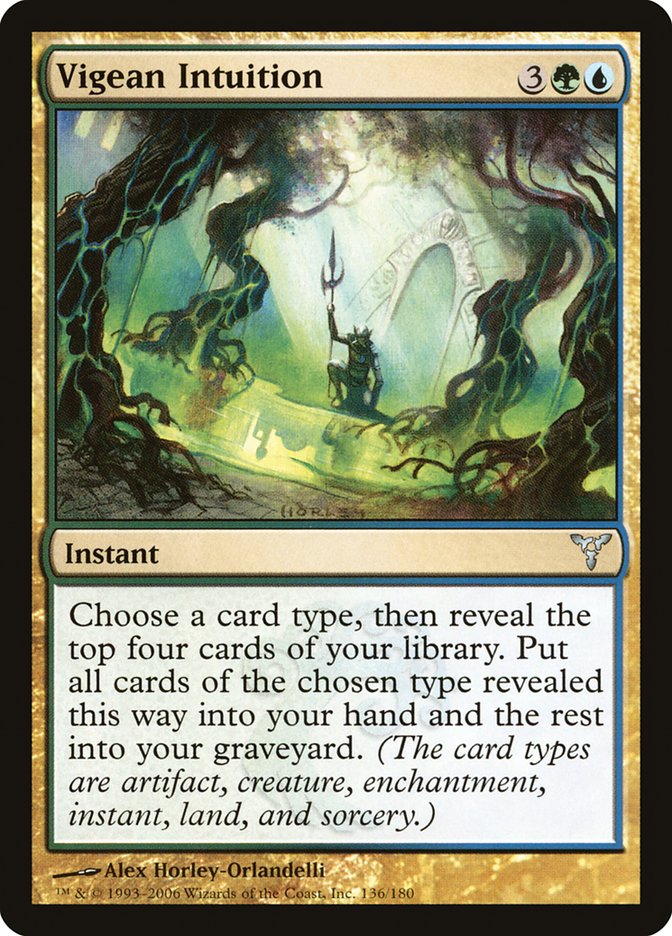
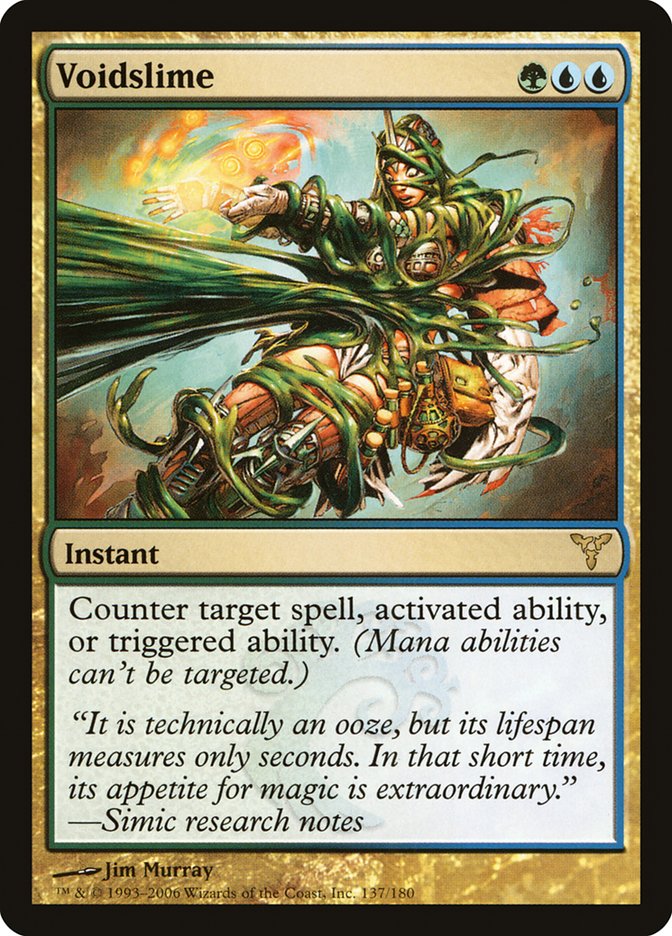
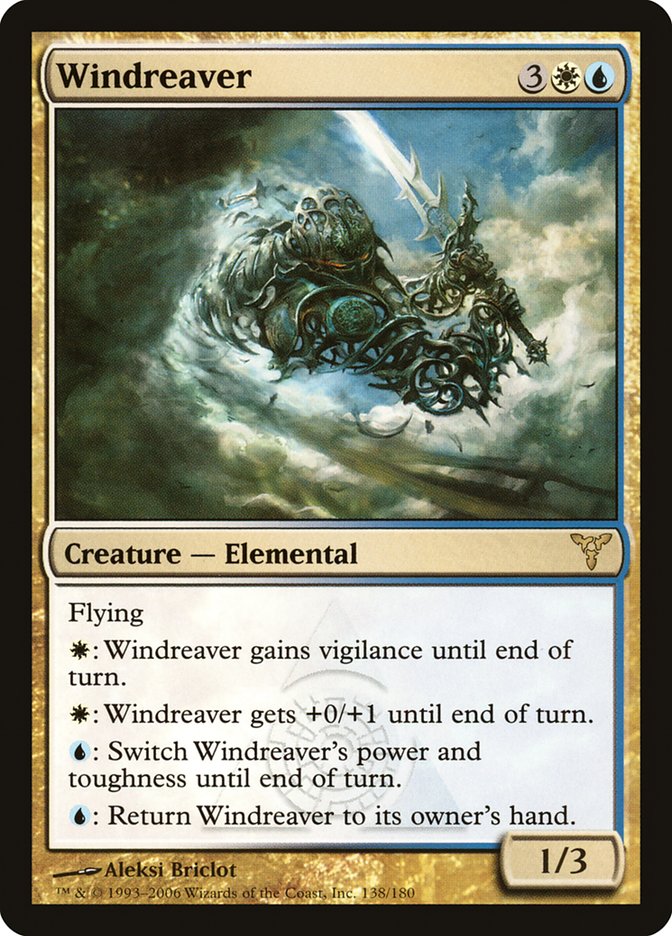
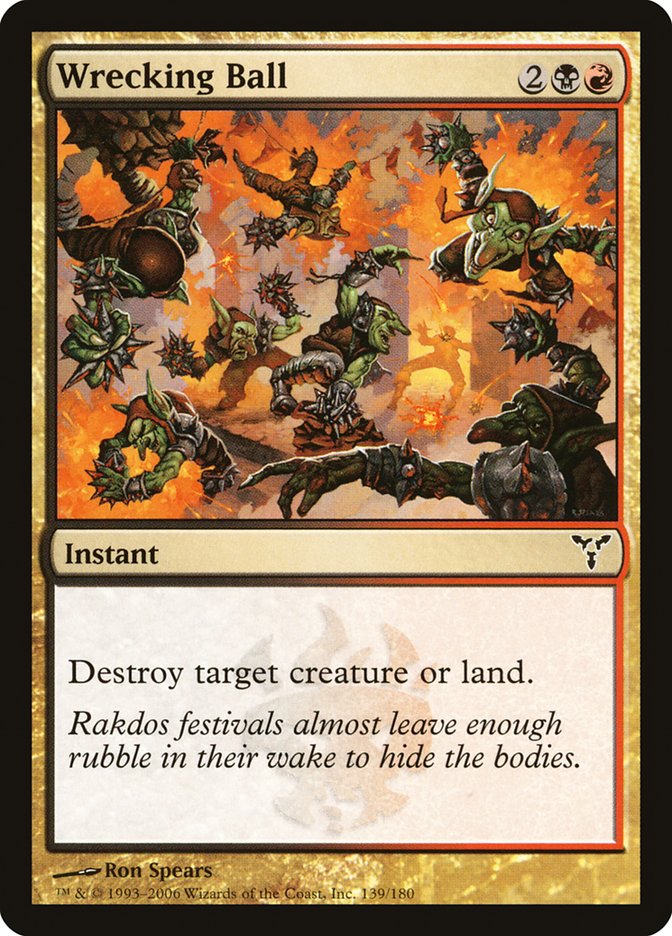

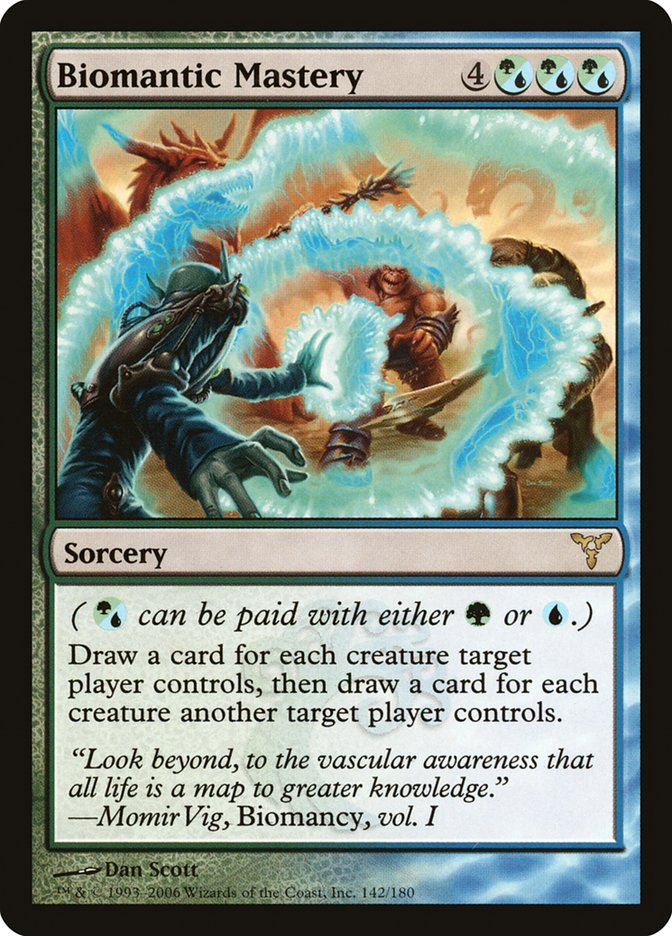

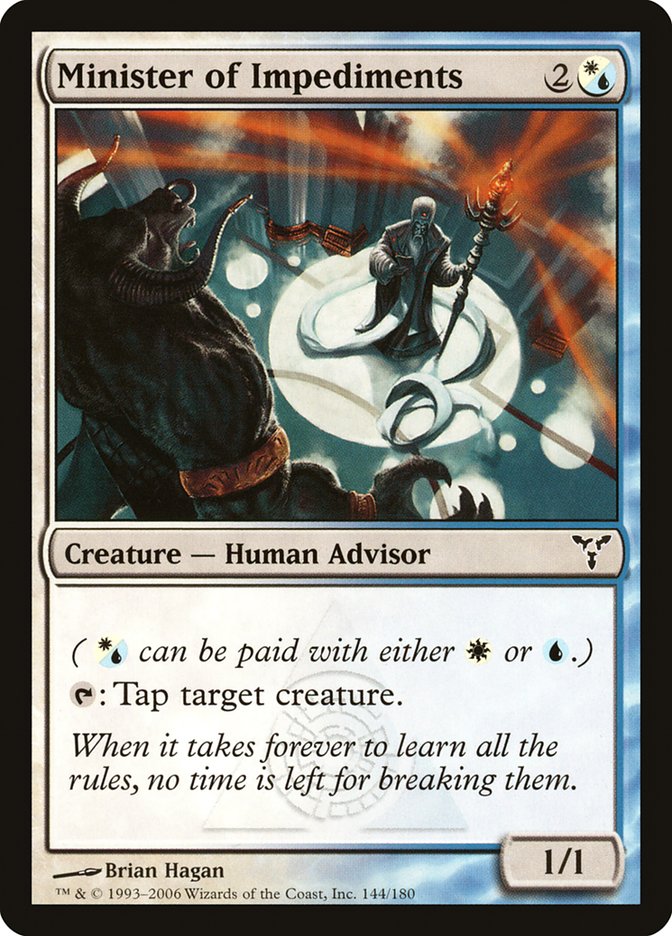

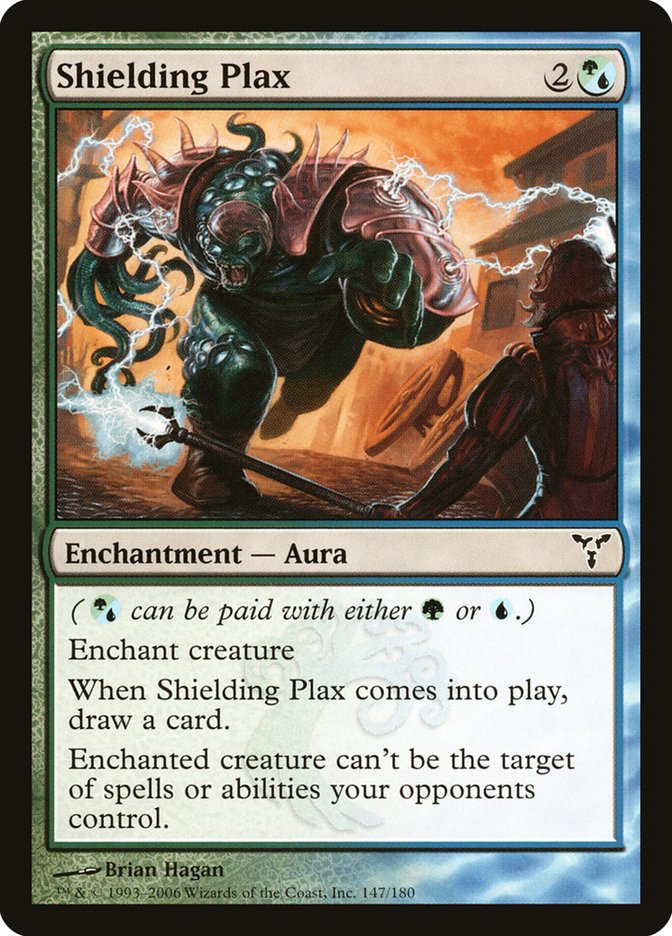
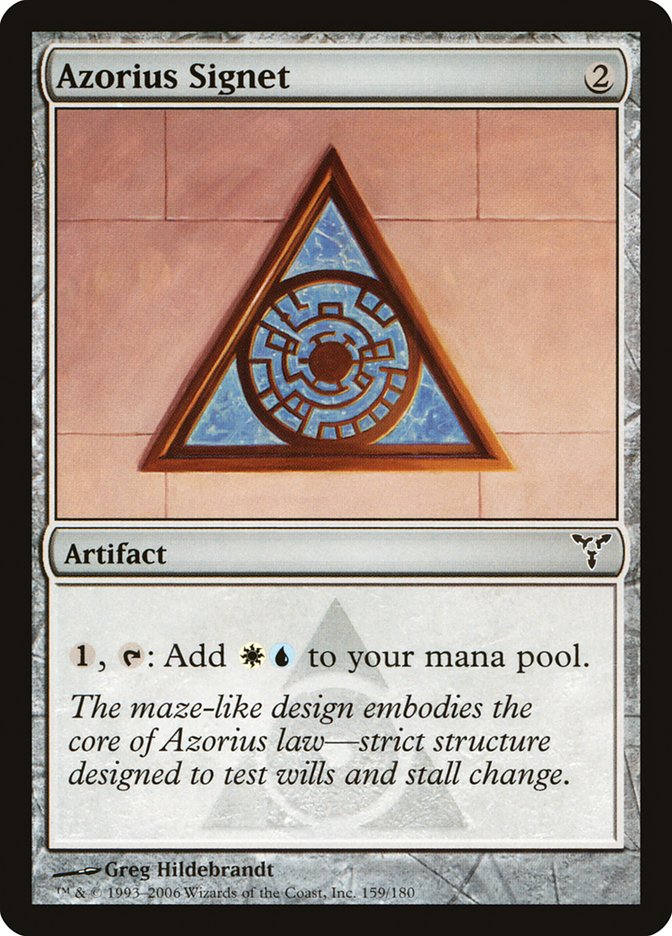
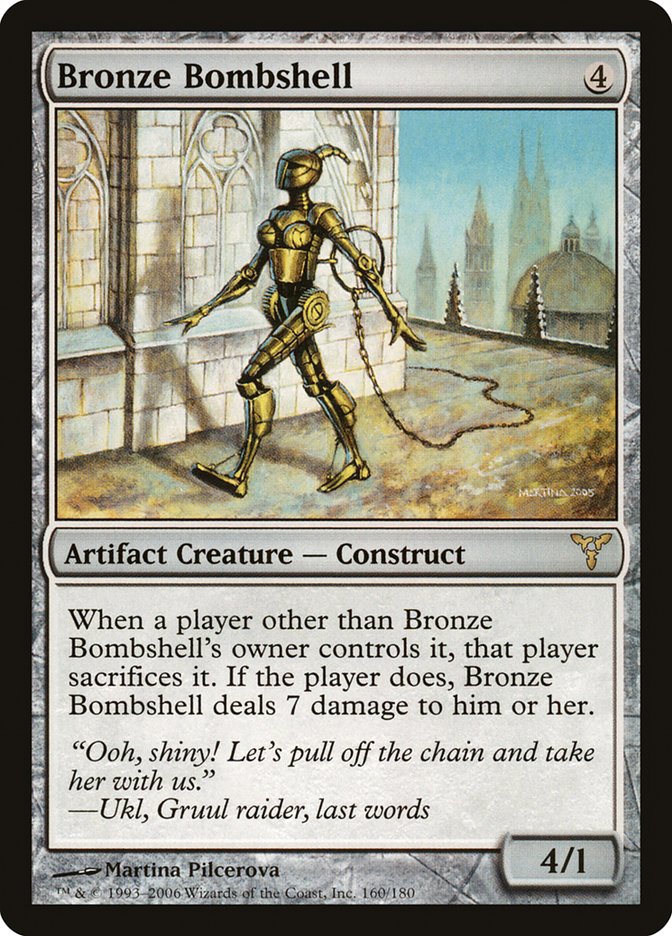
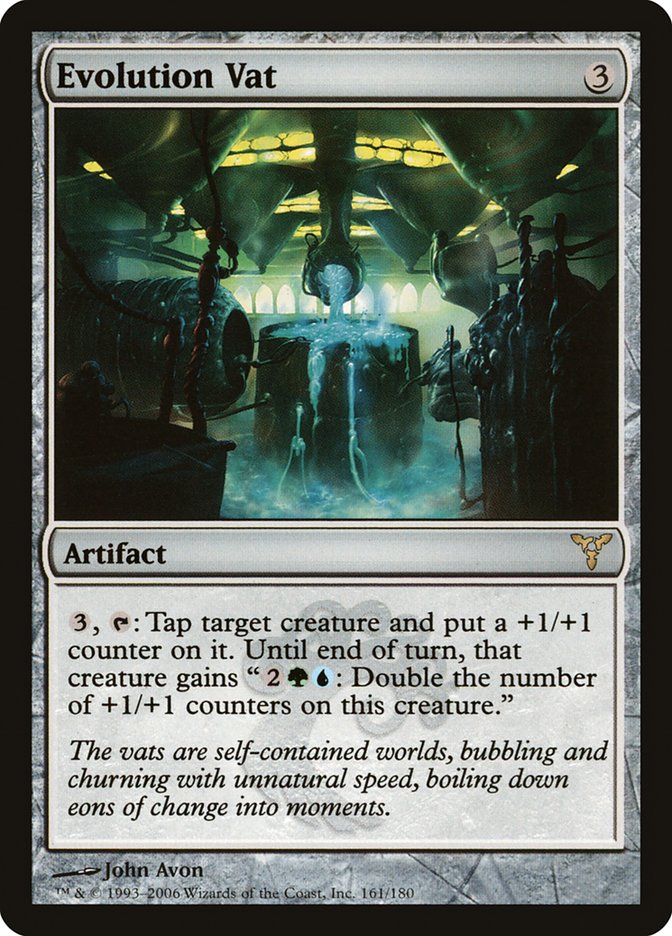
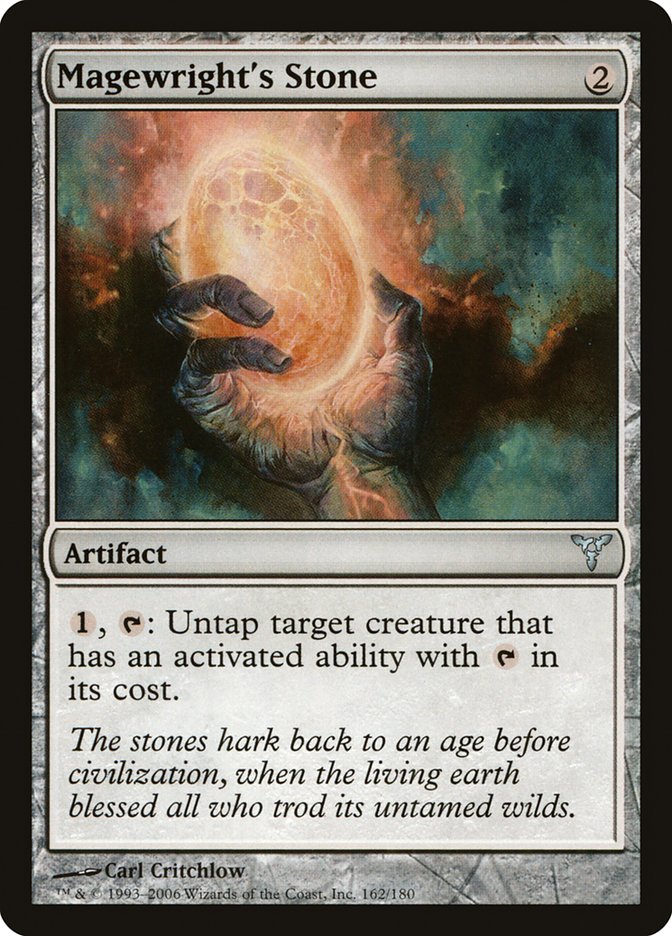
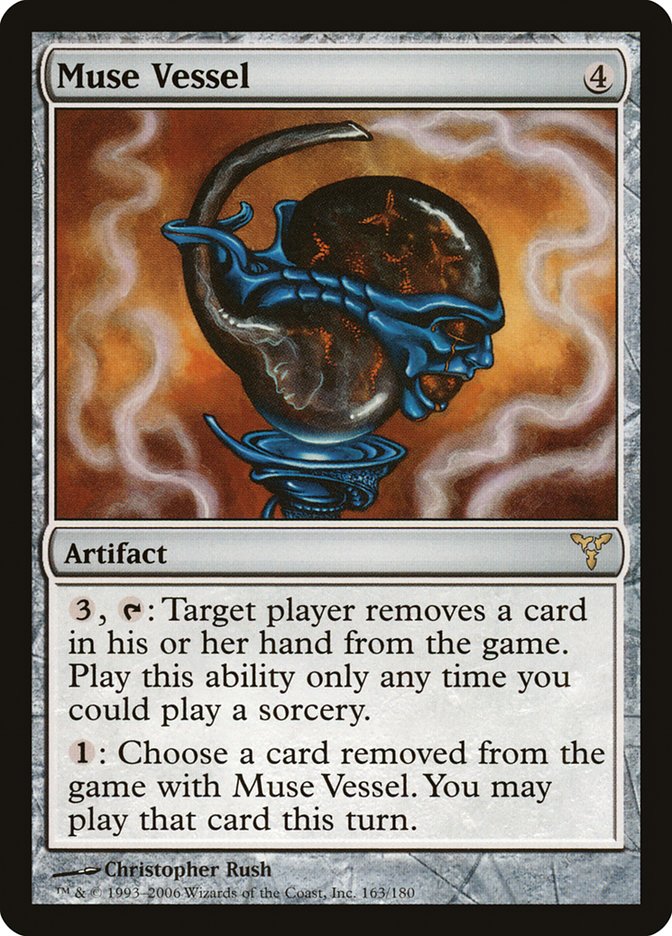
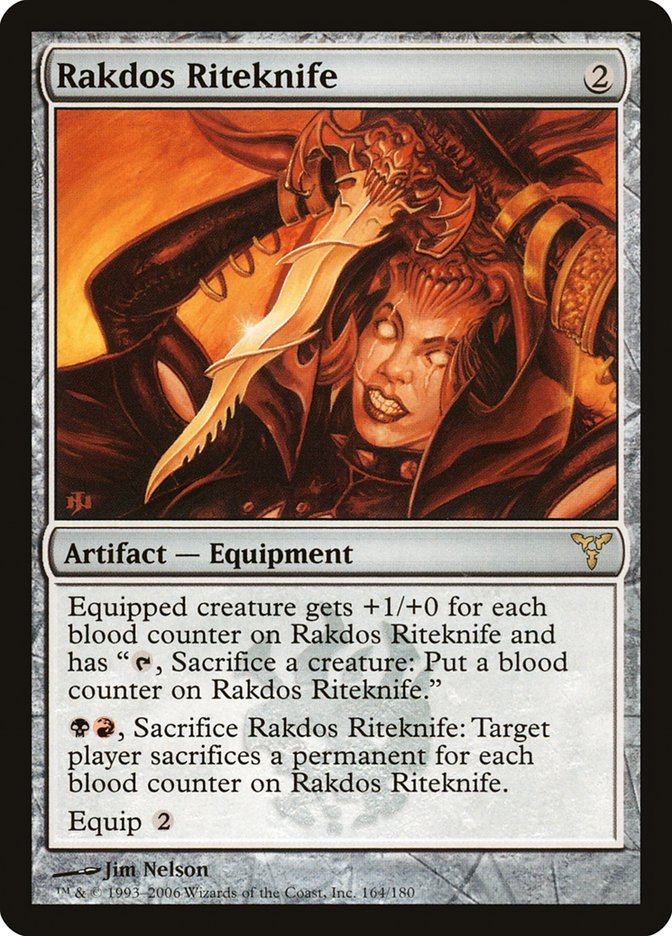
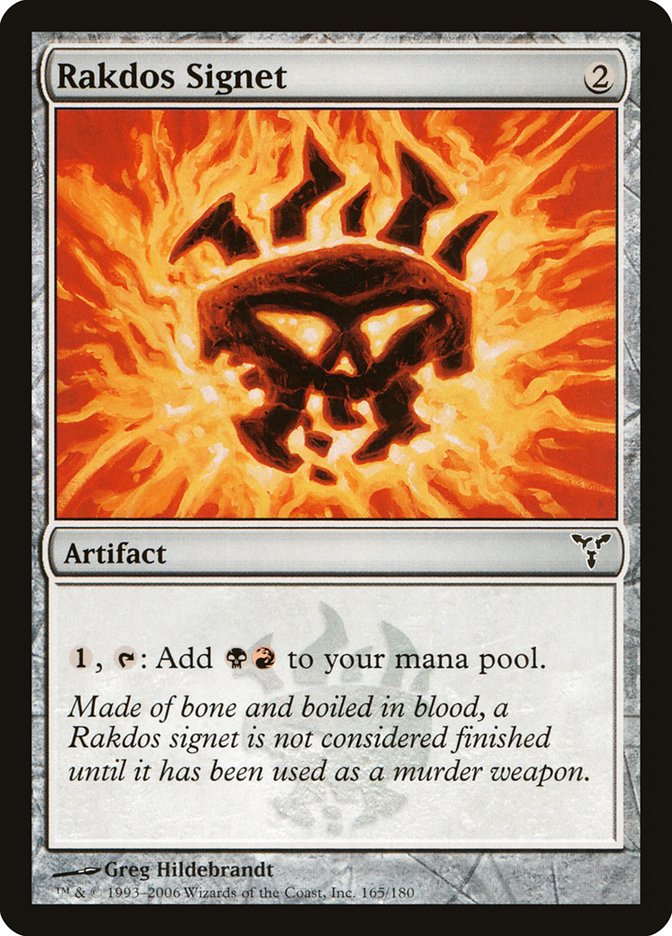

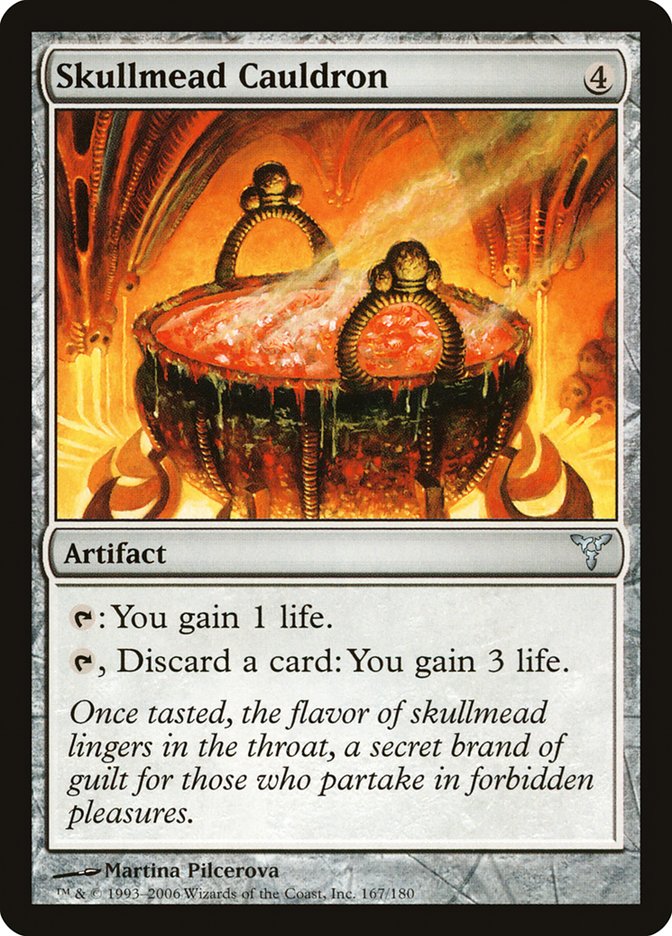
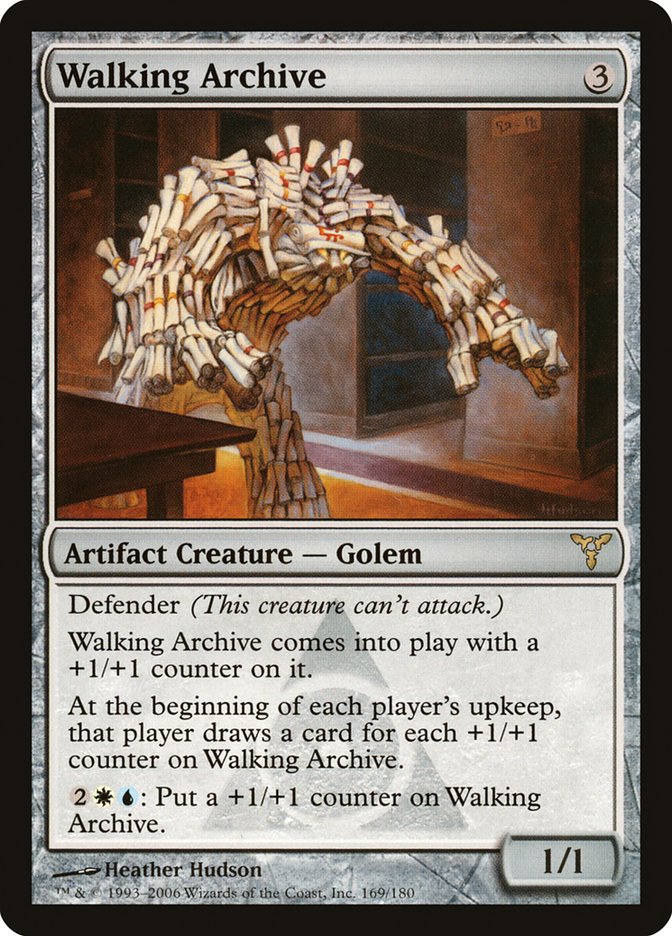
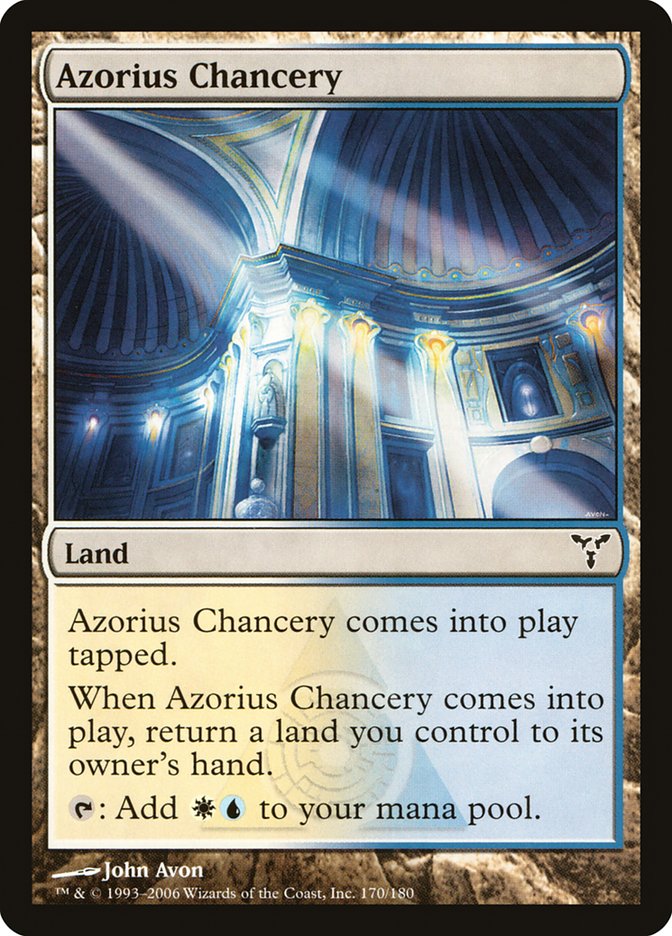
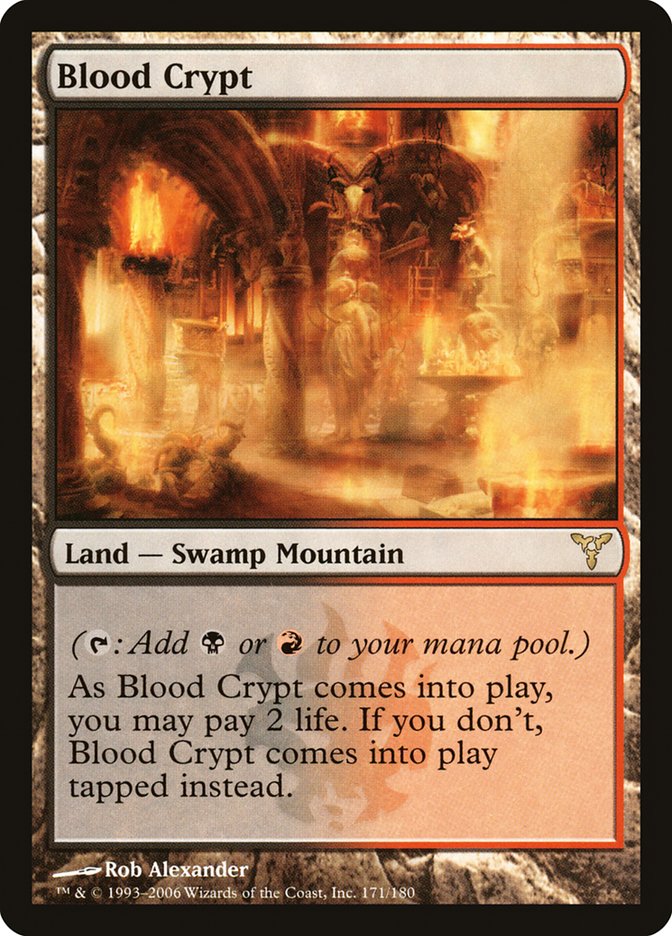
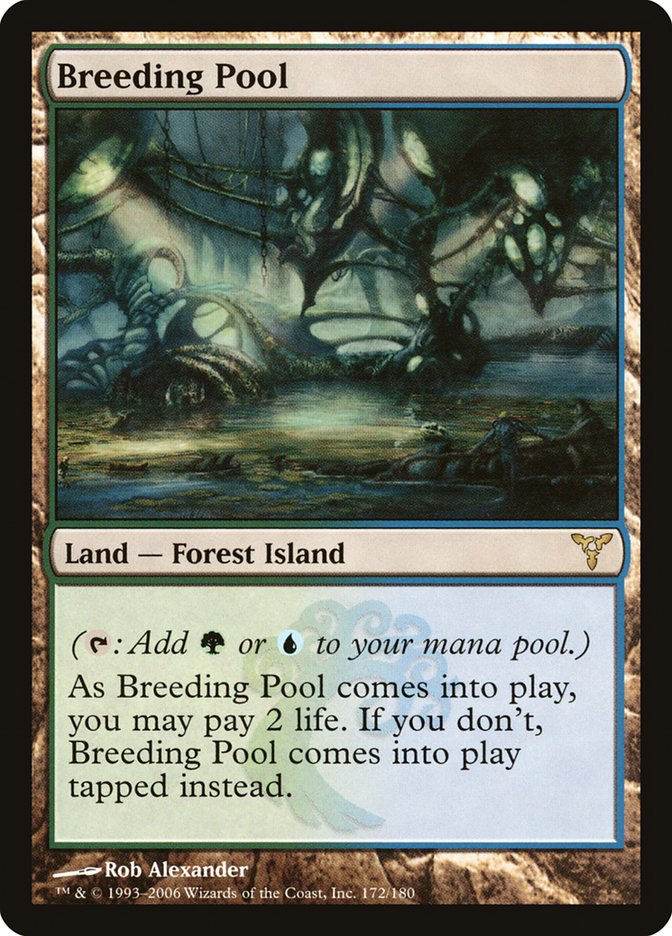
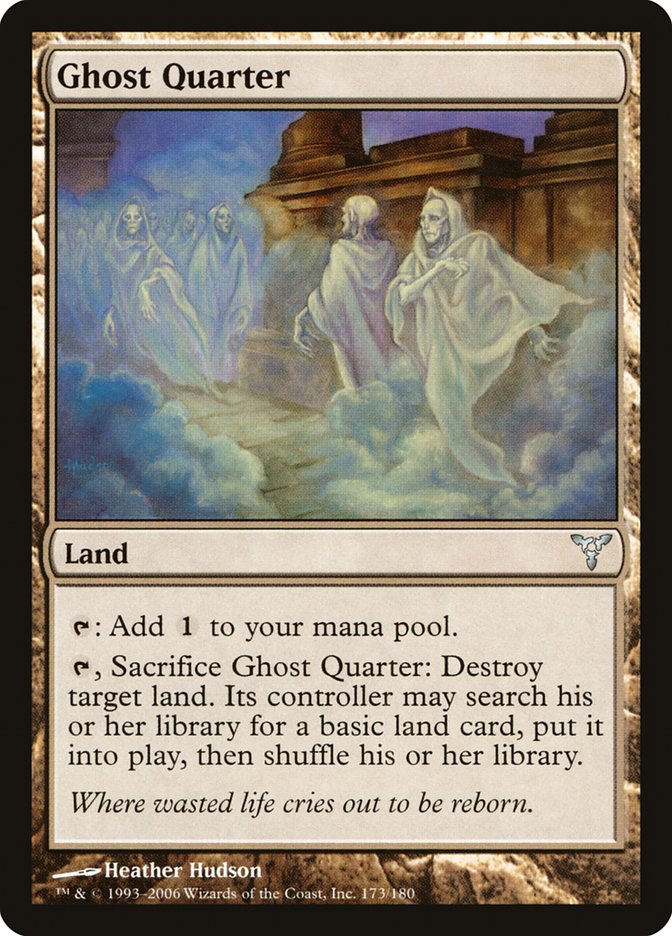
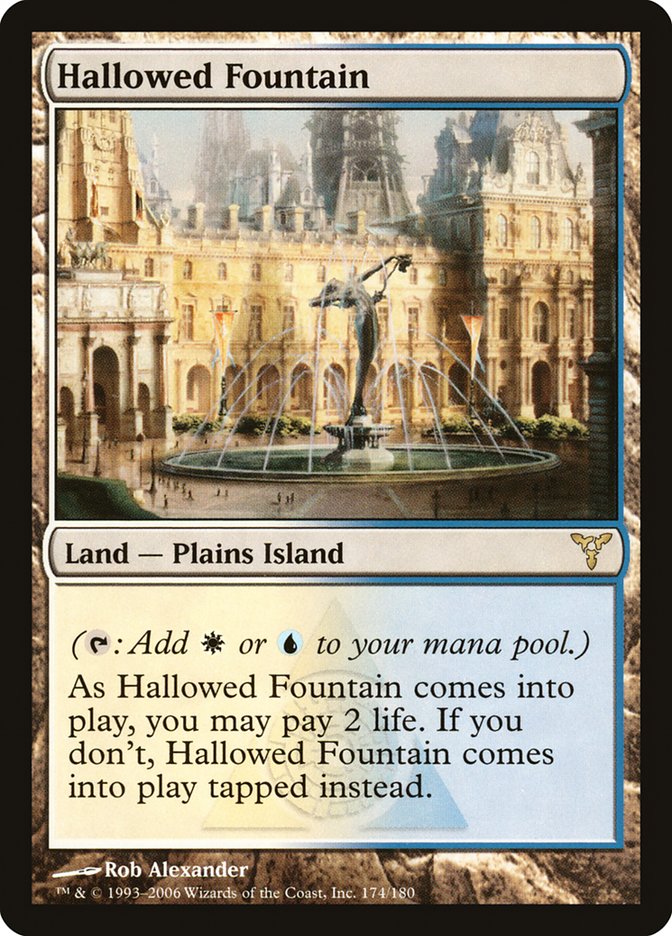




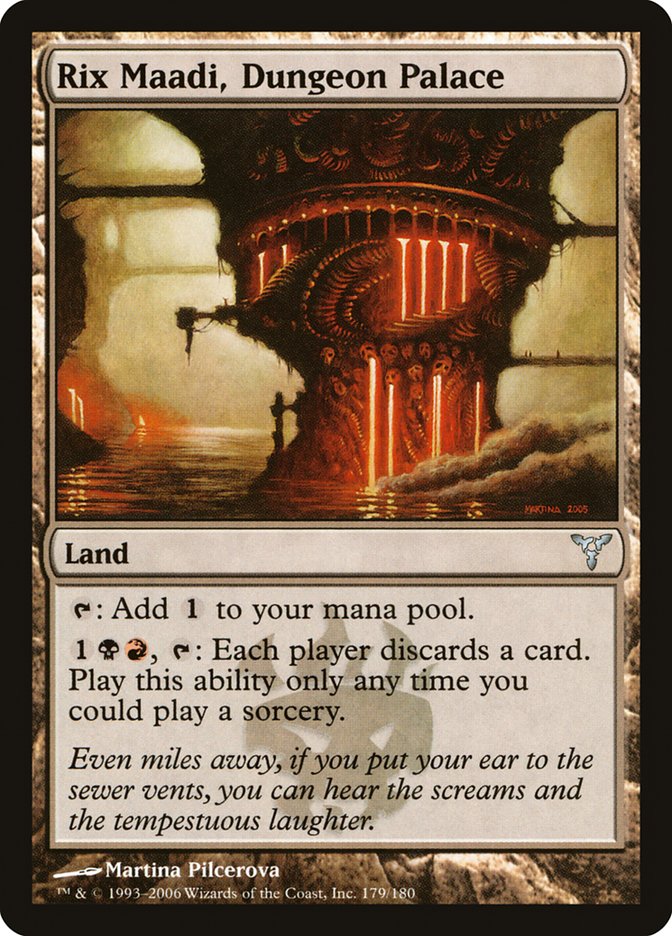

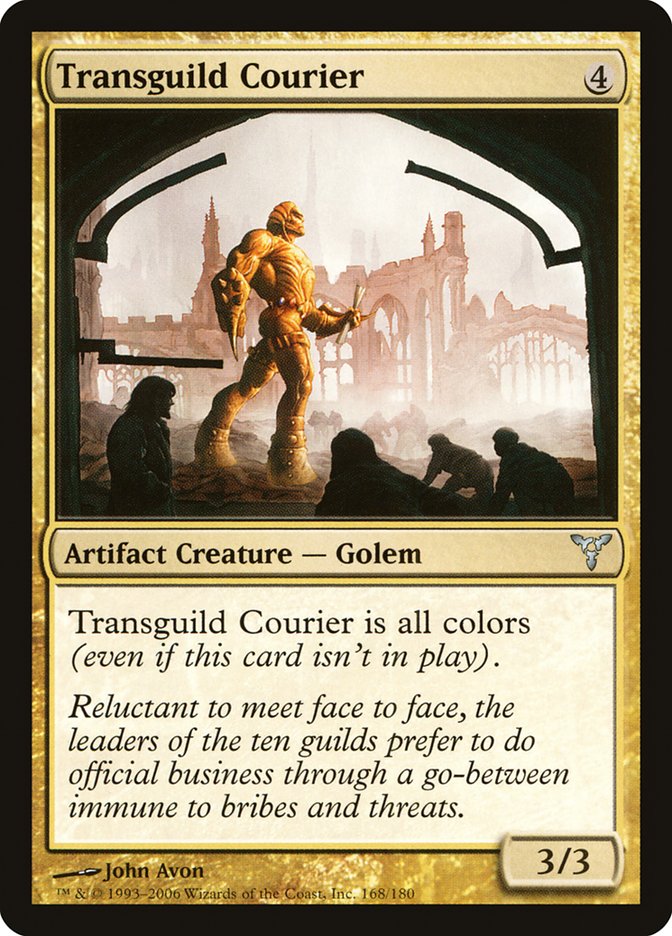

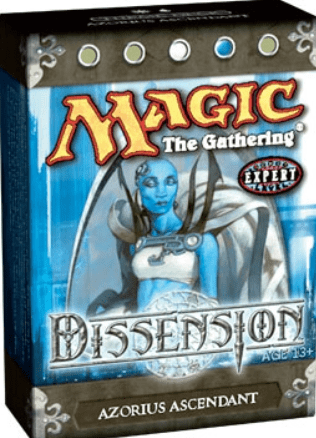

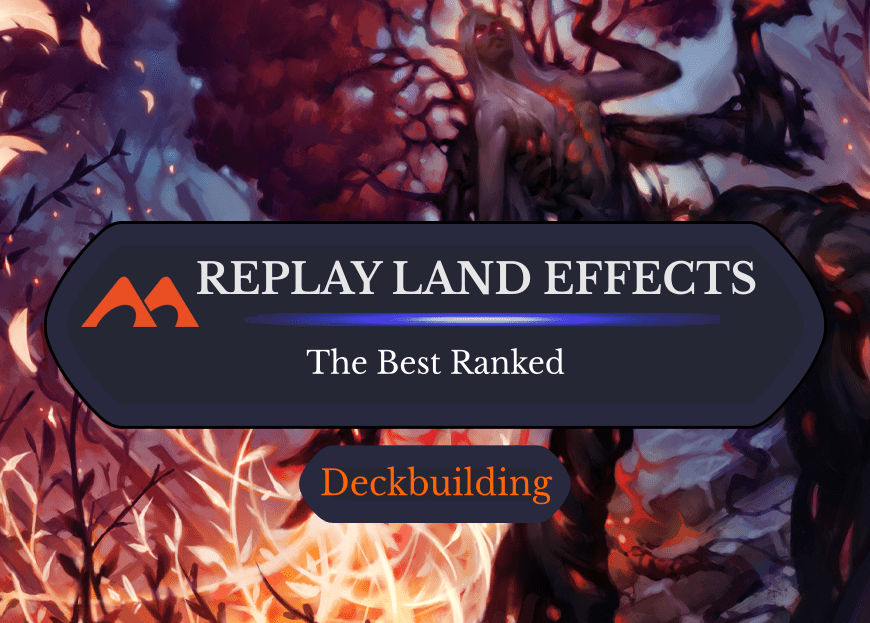
Add Comment